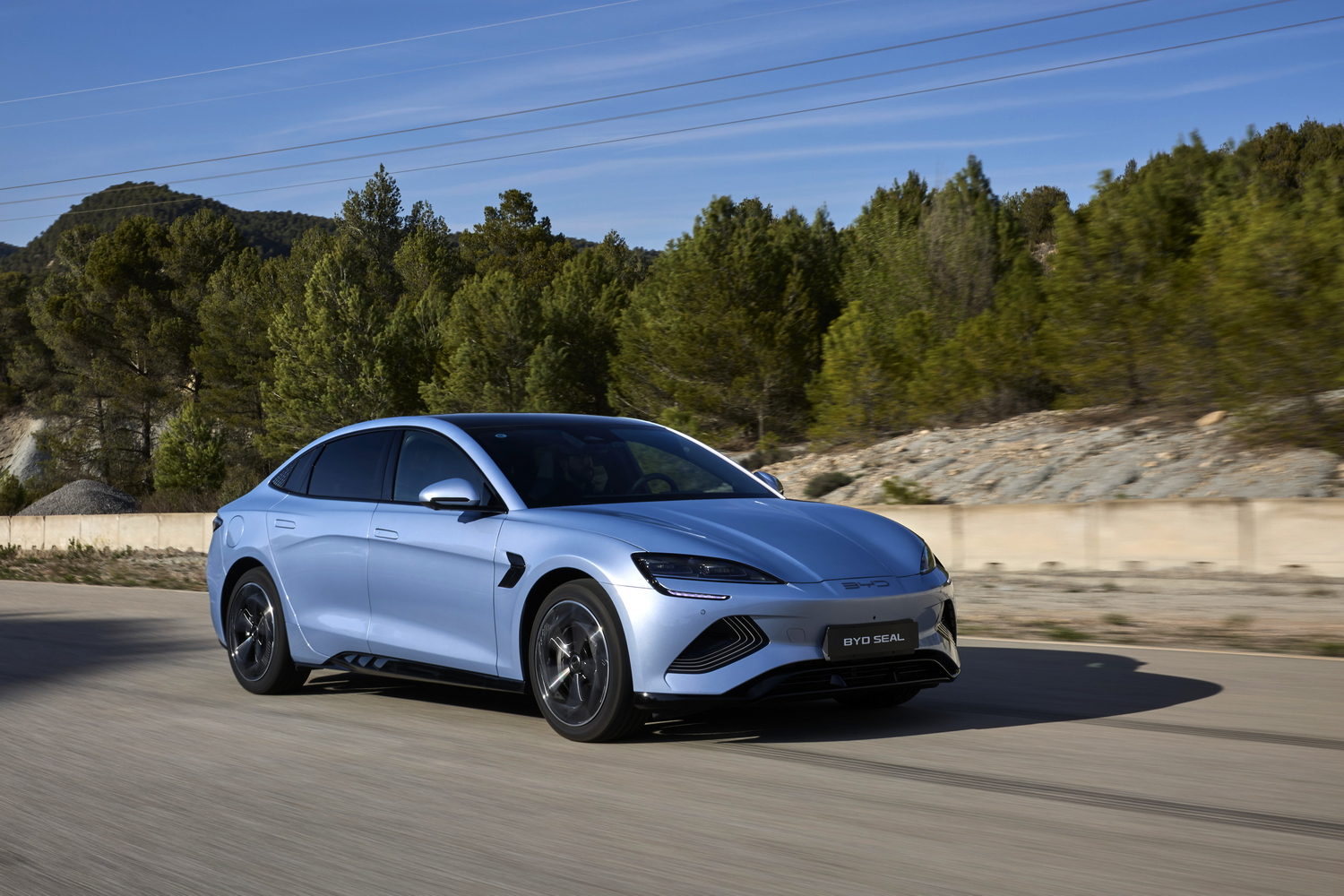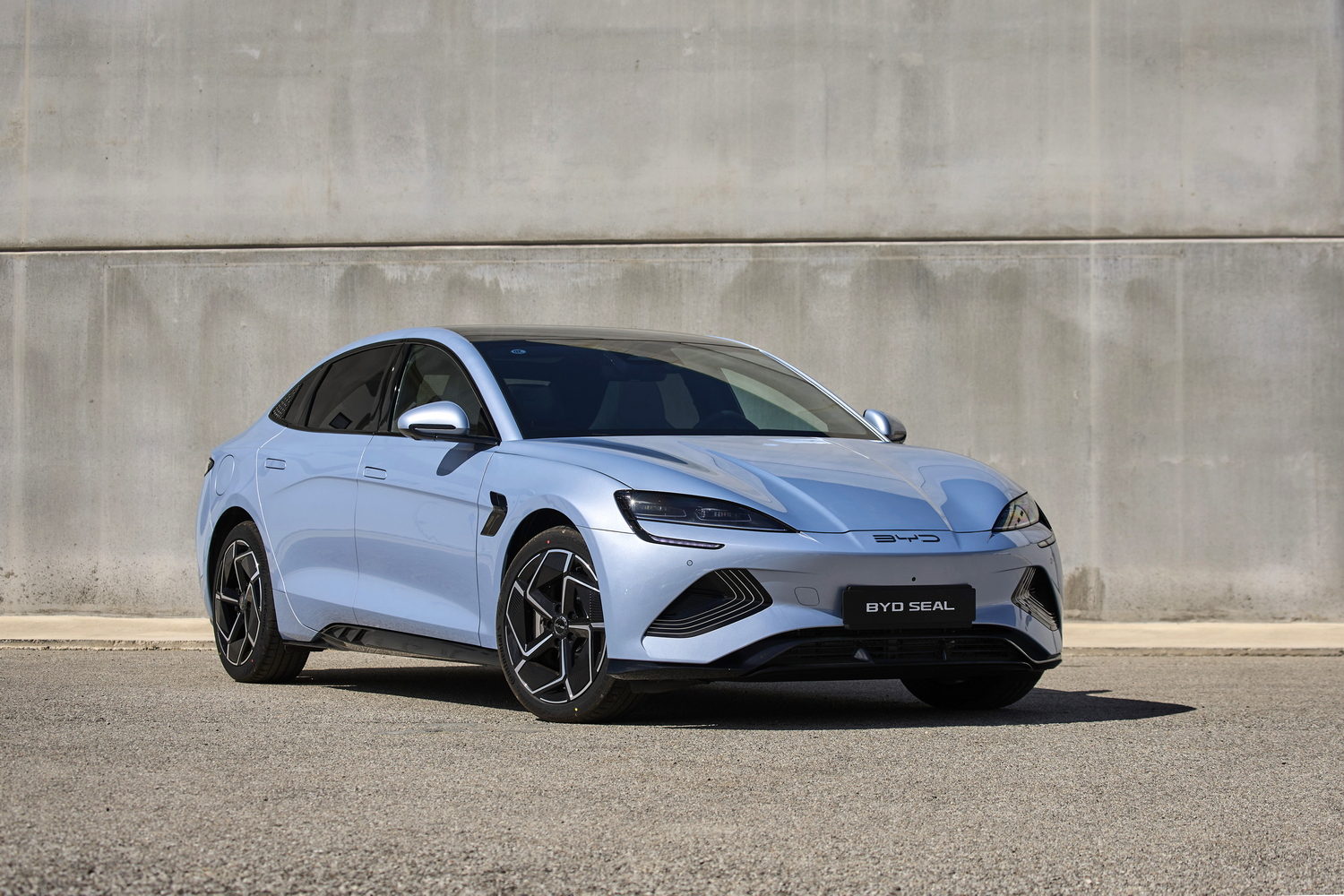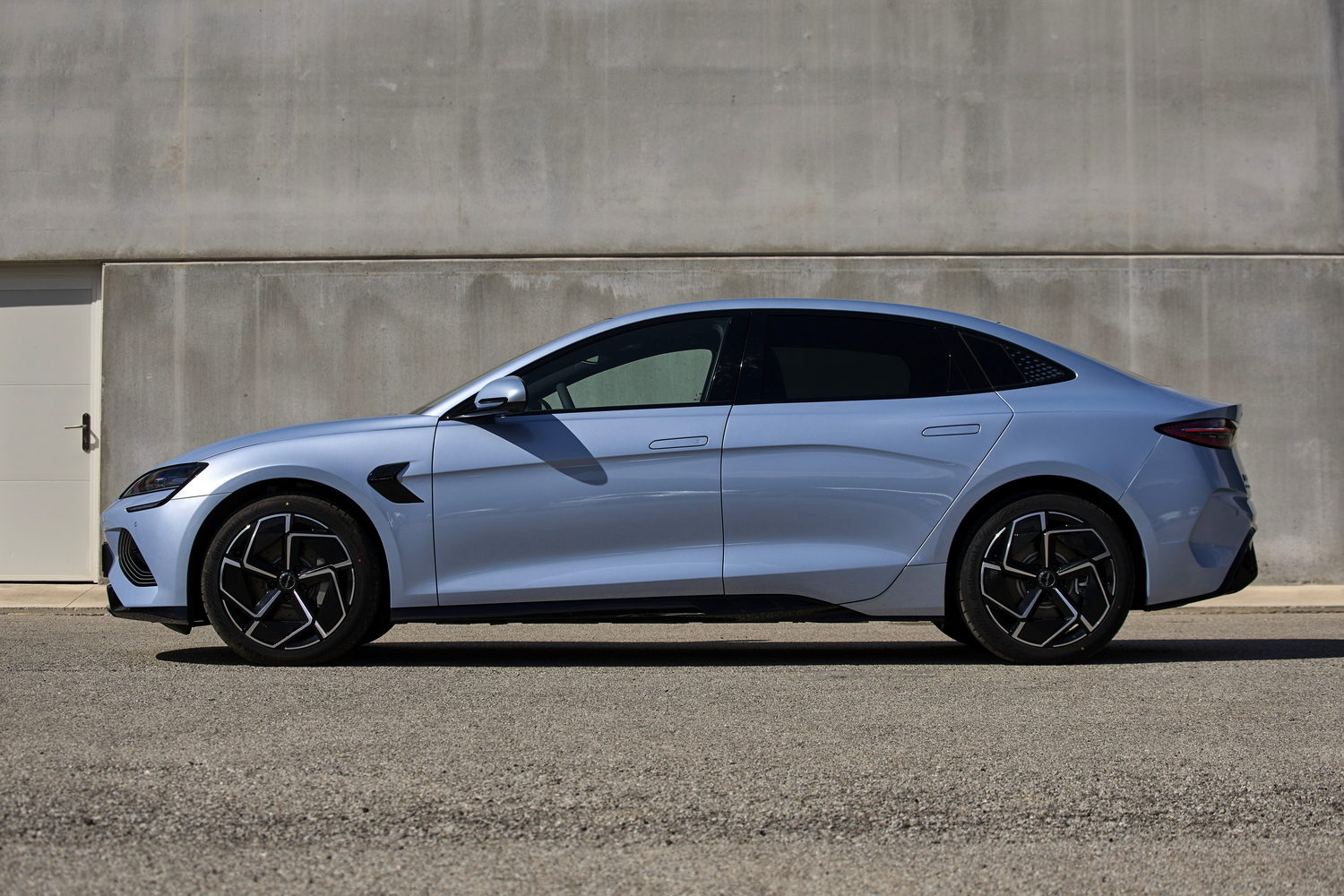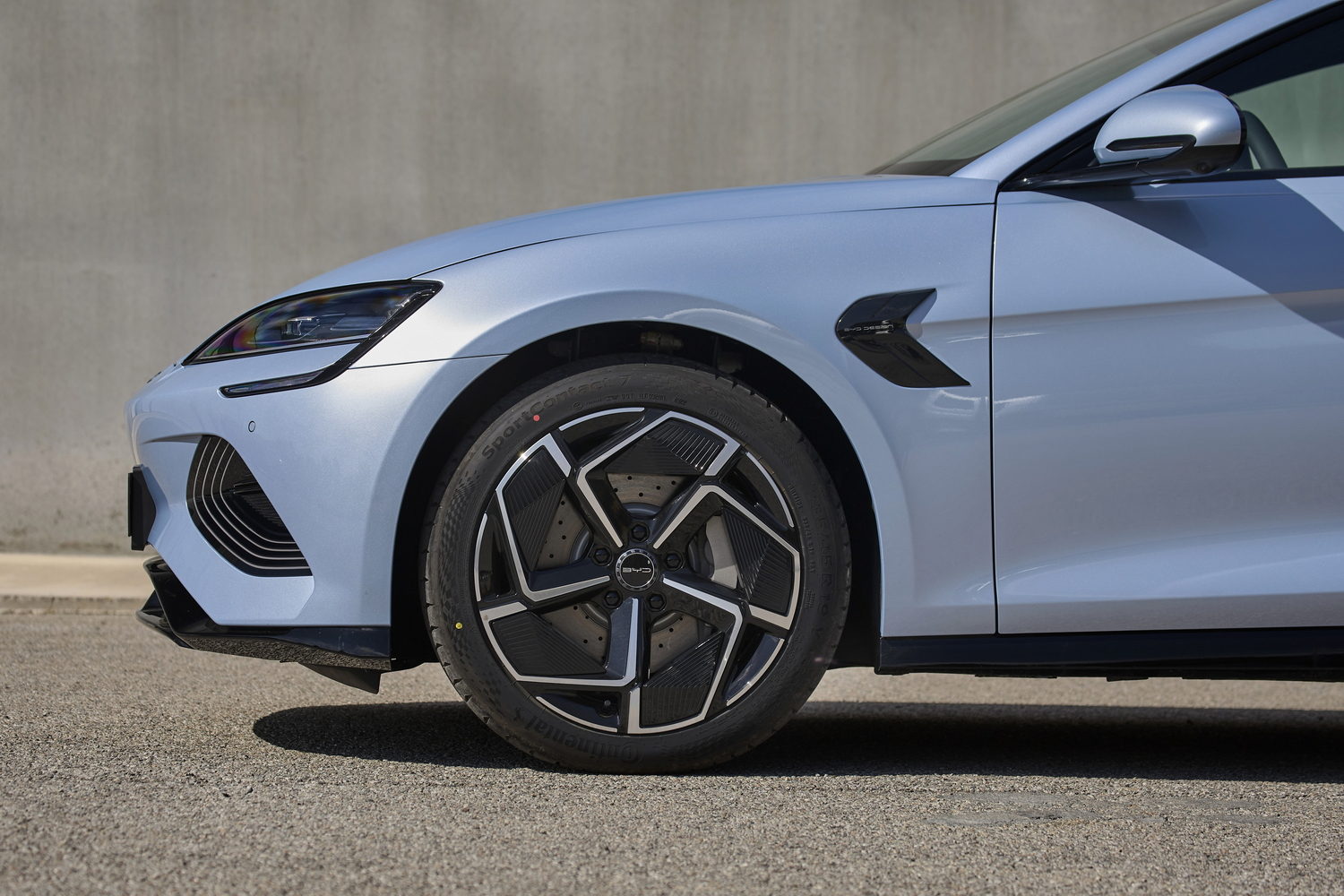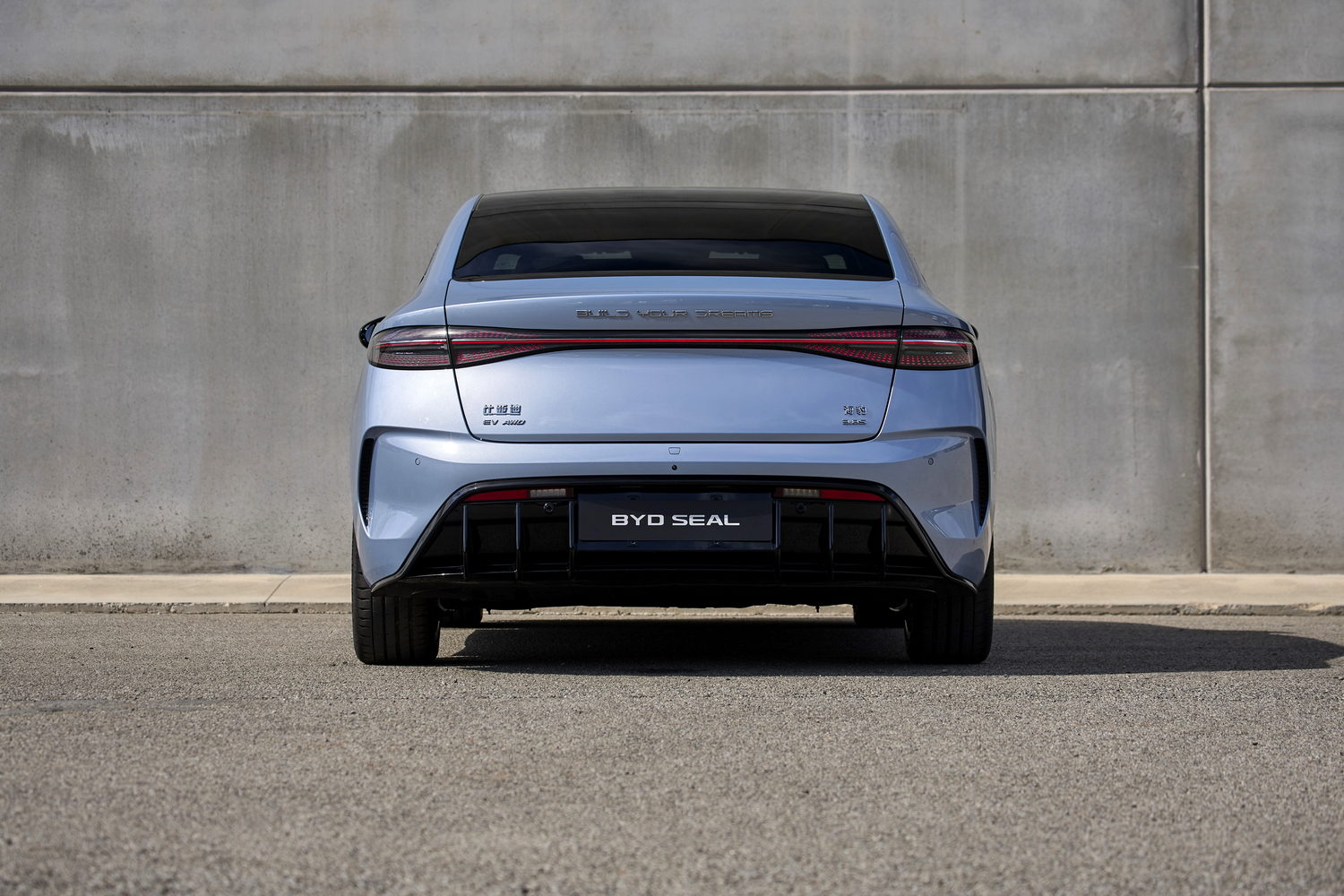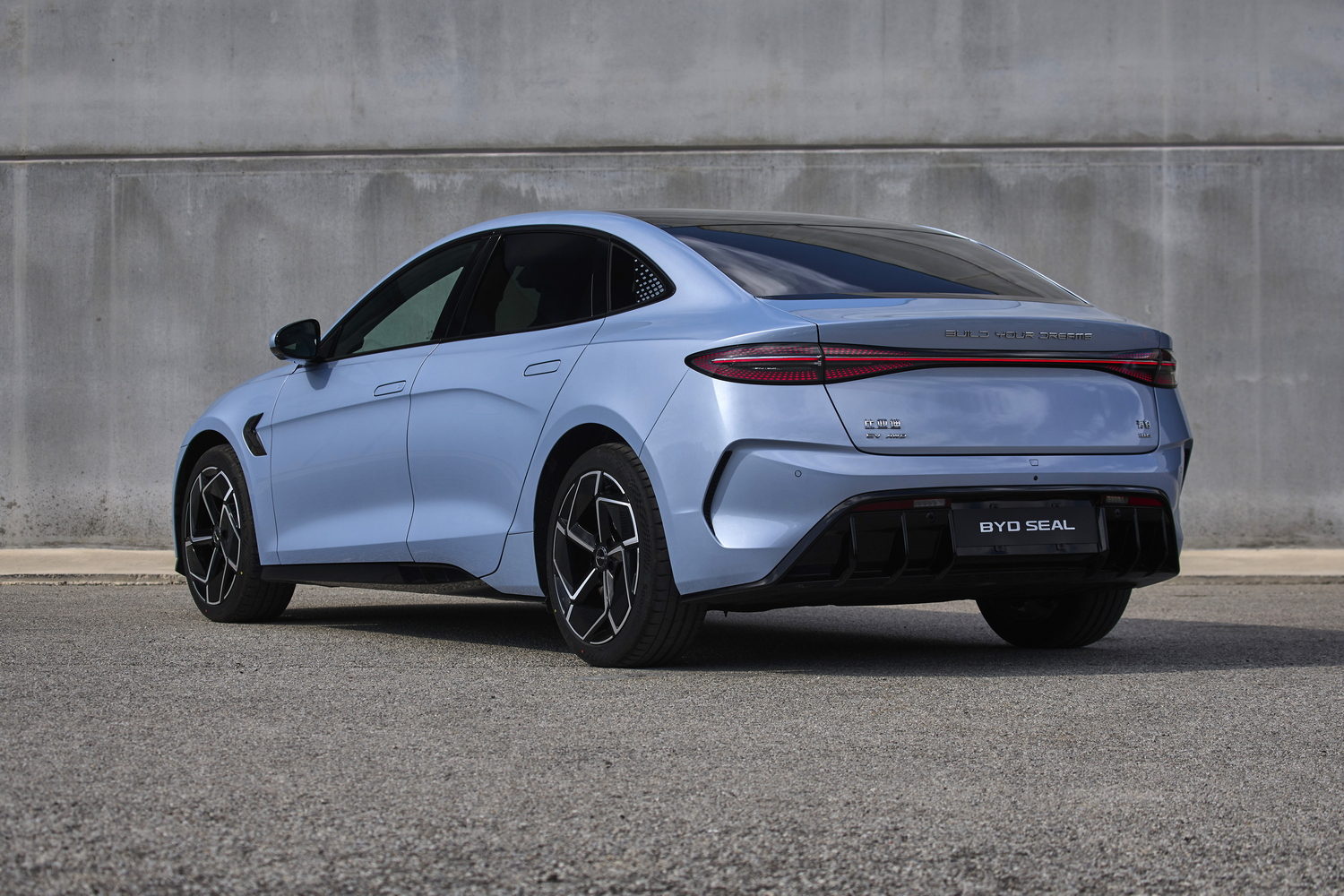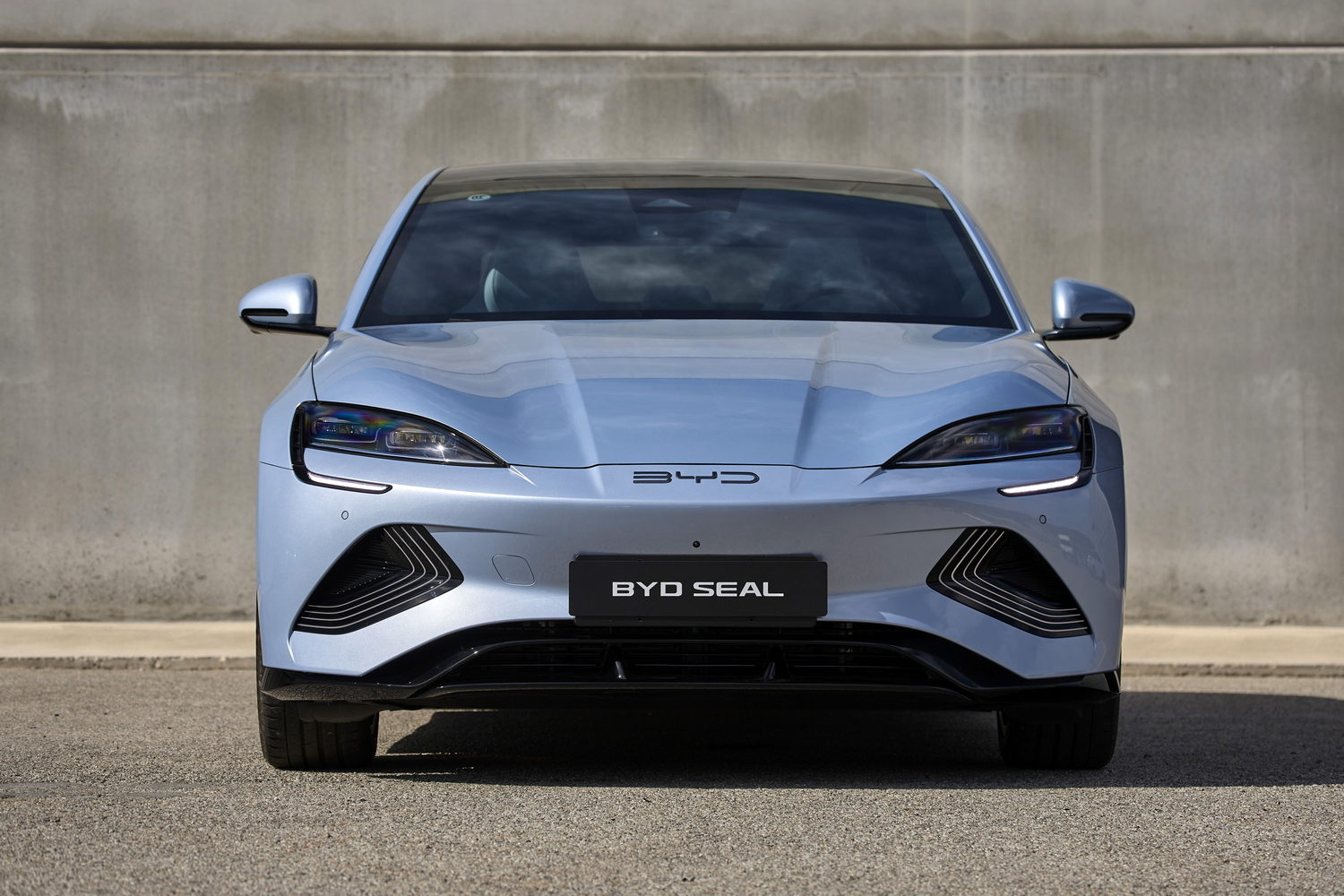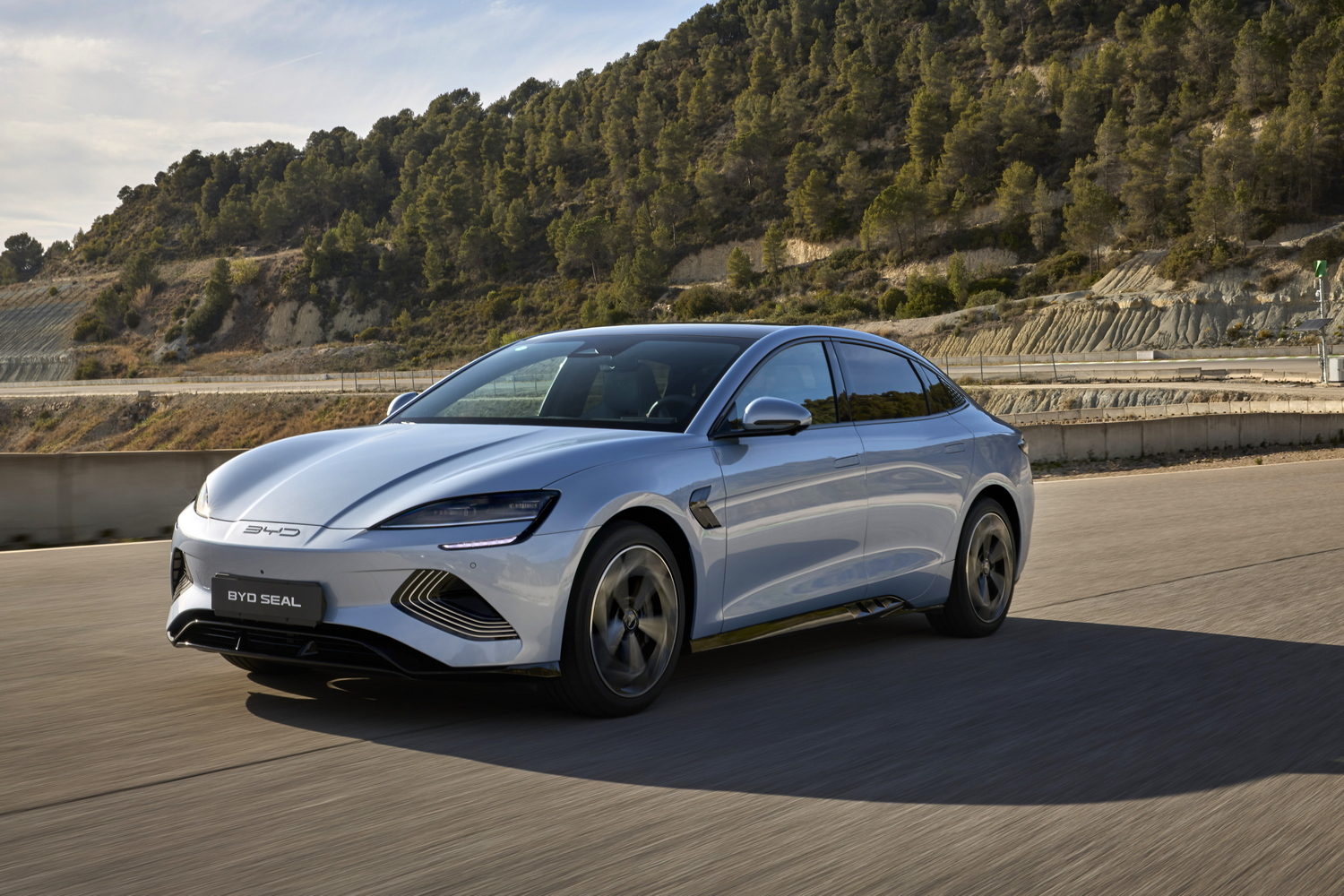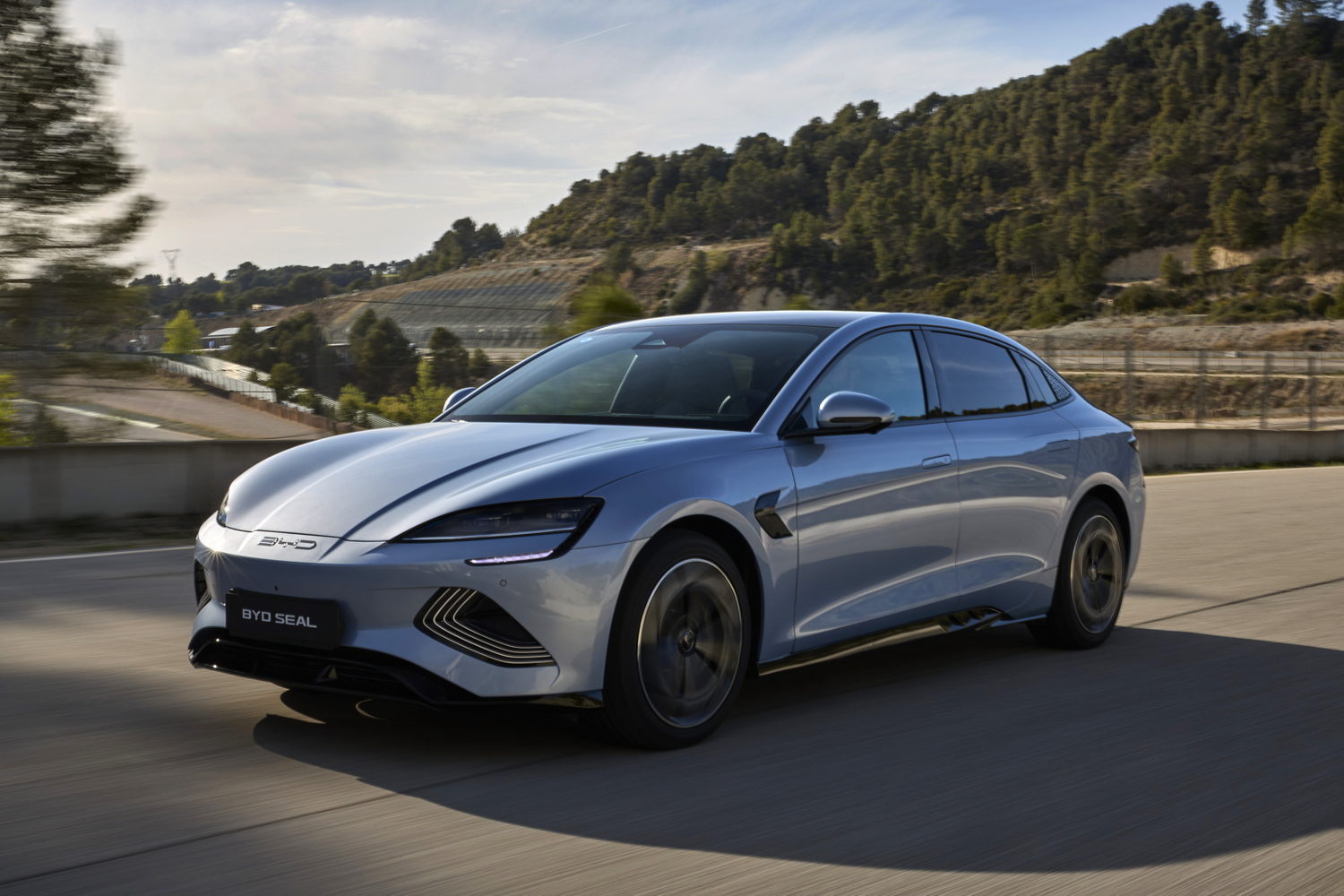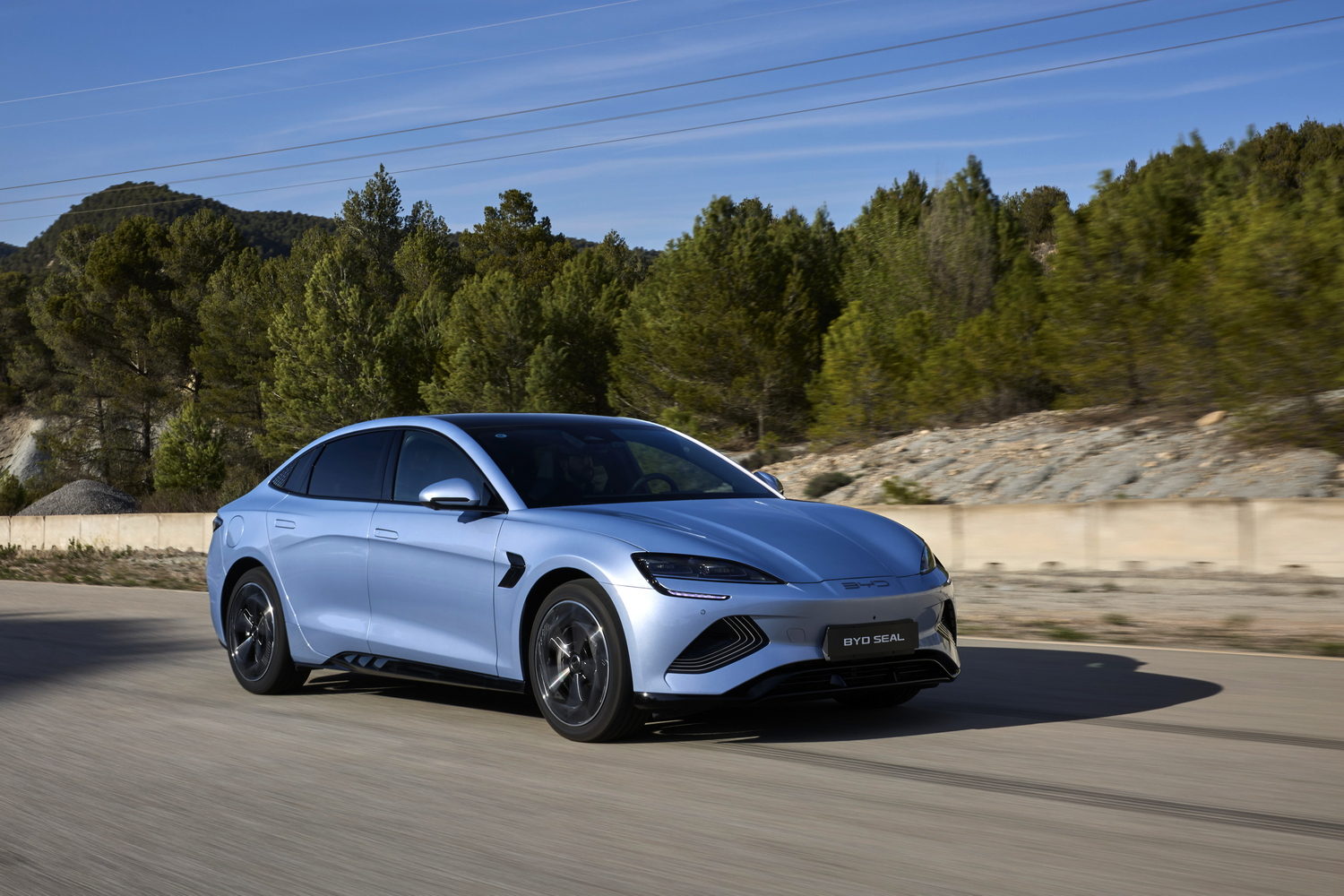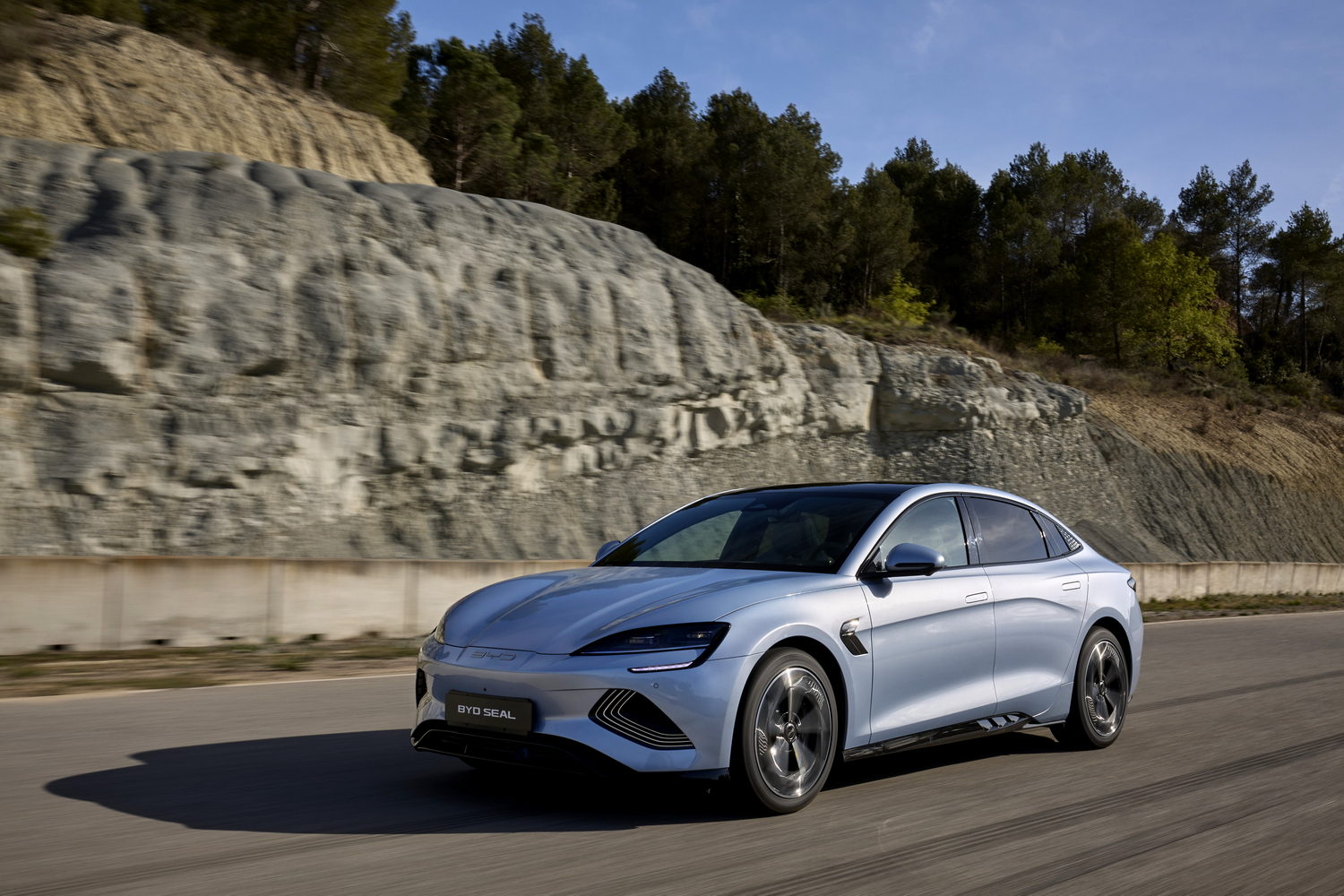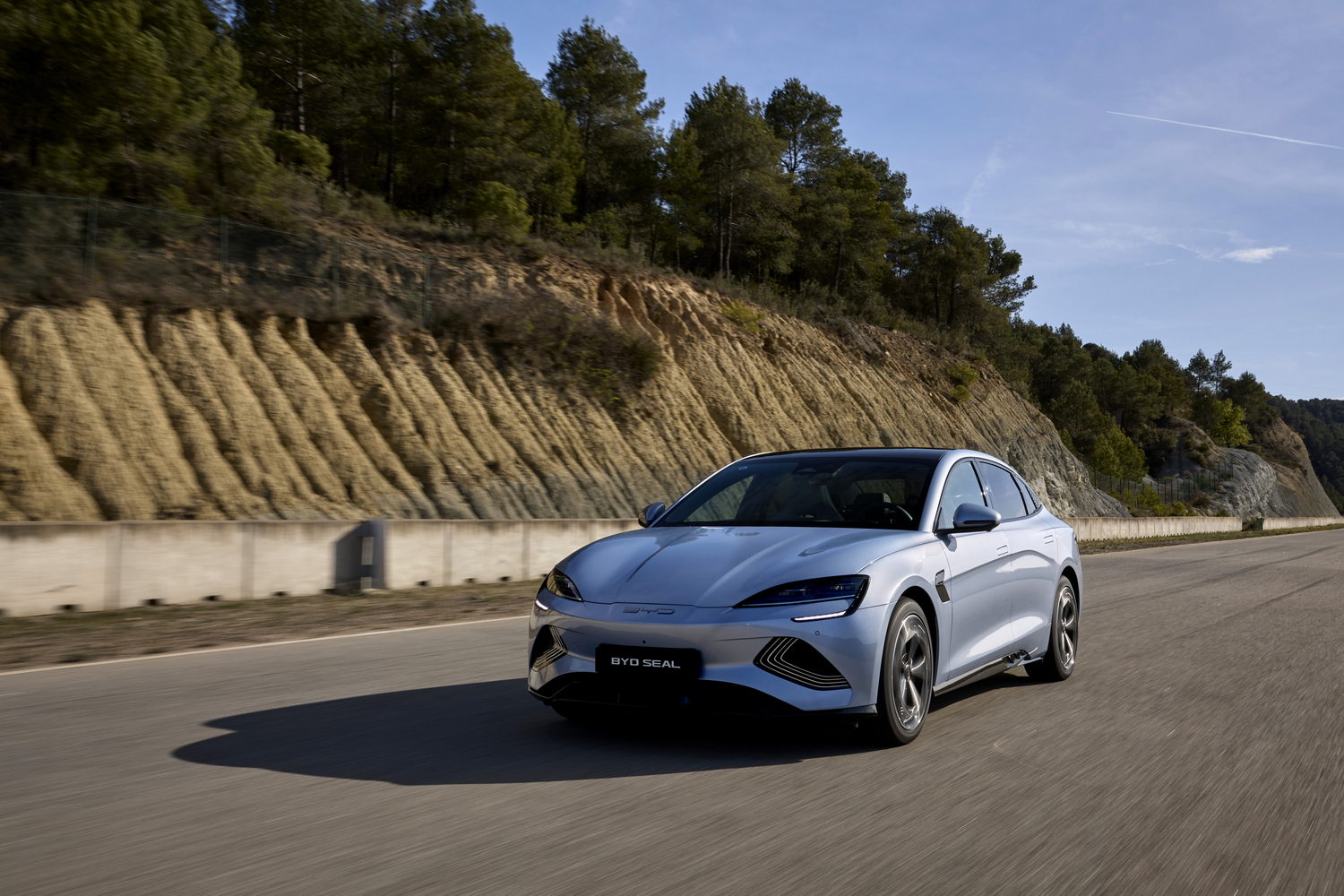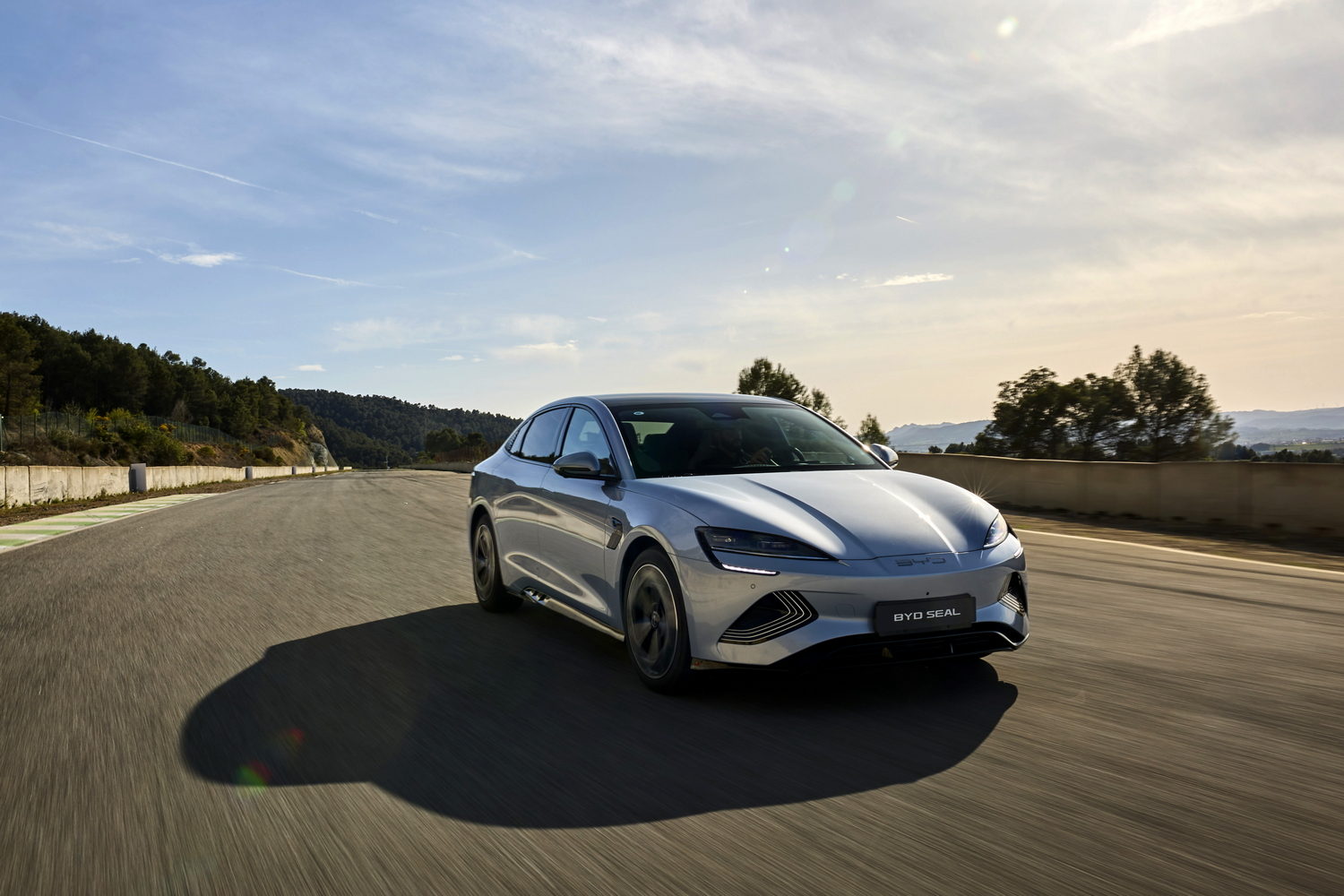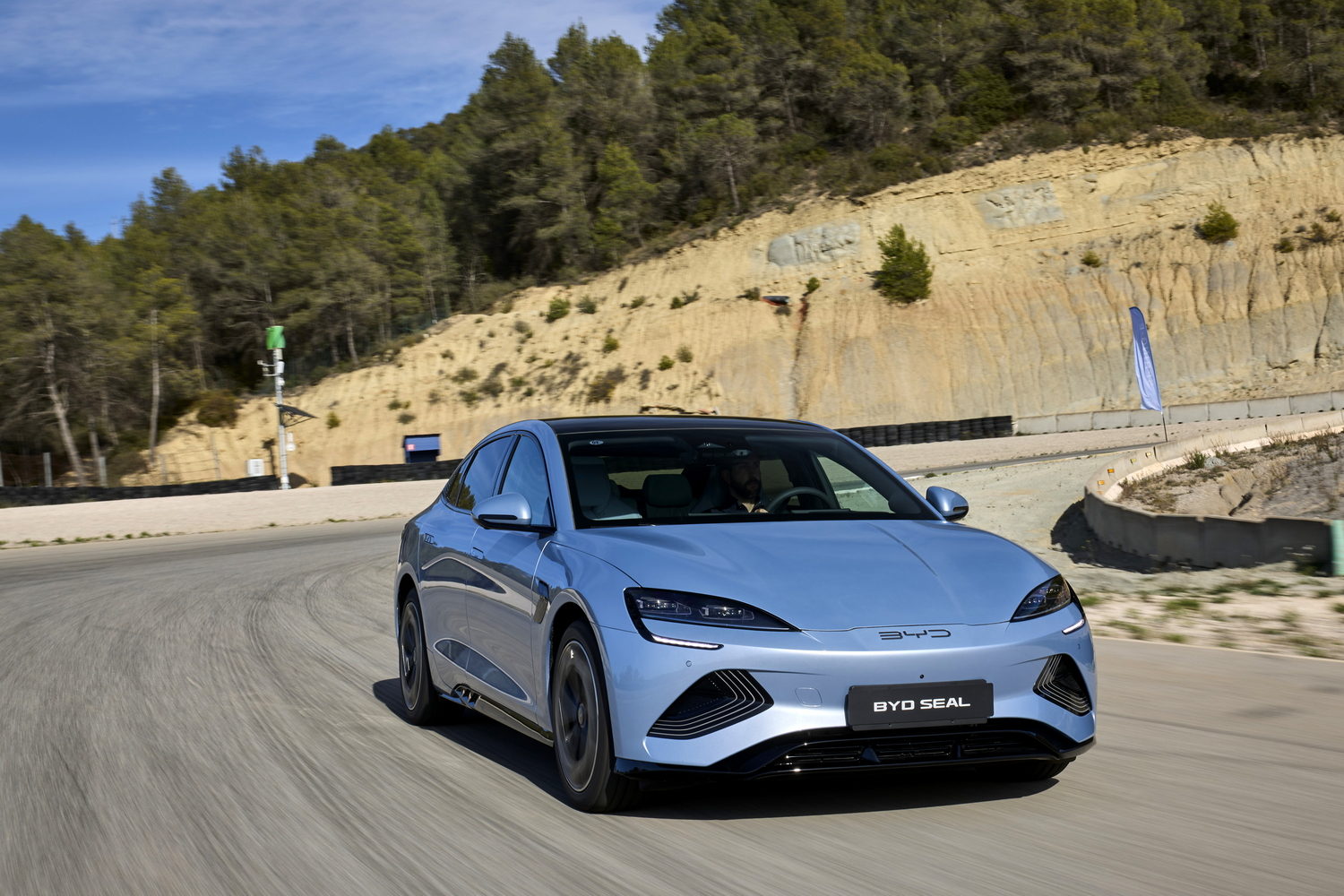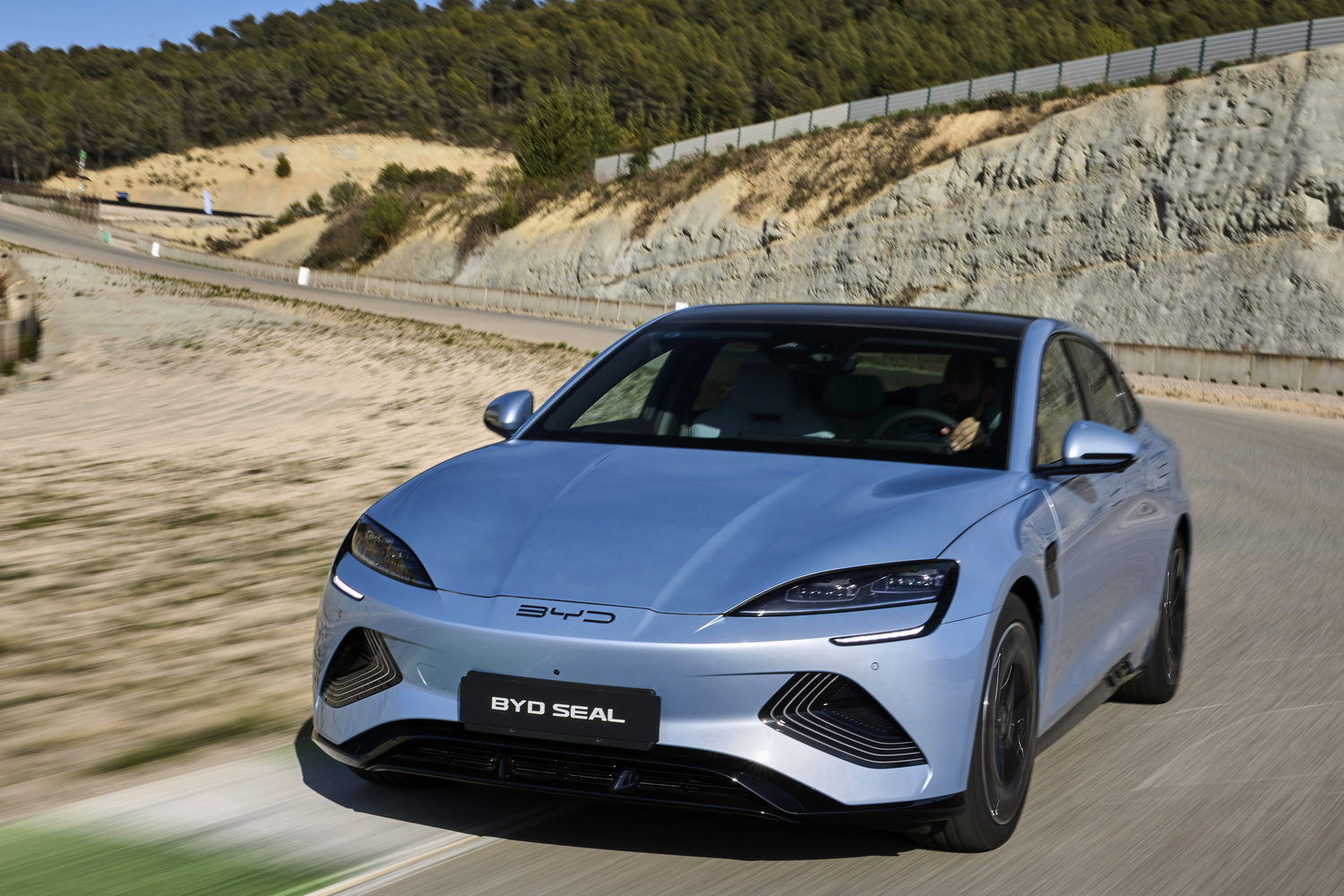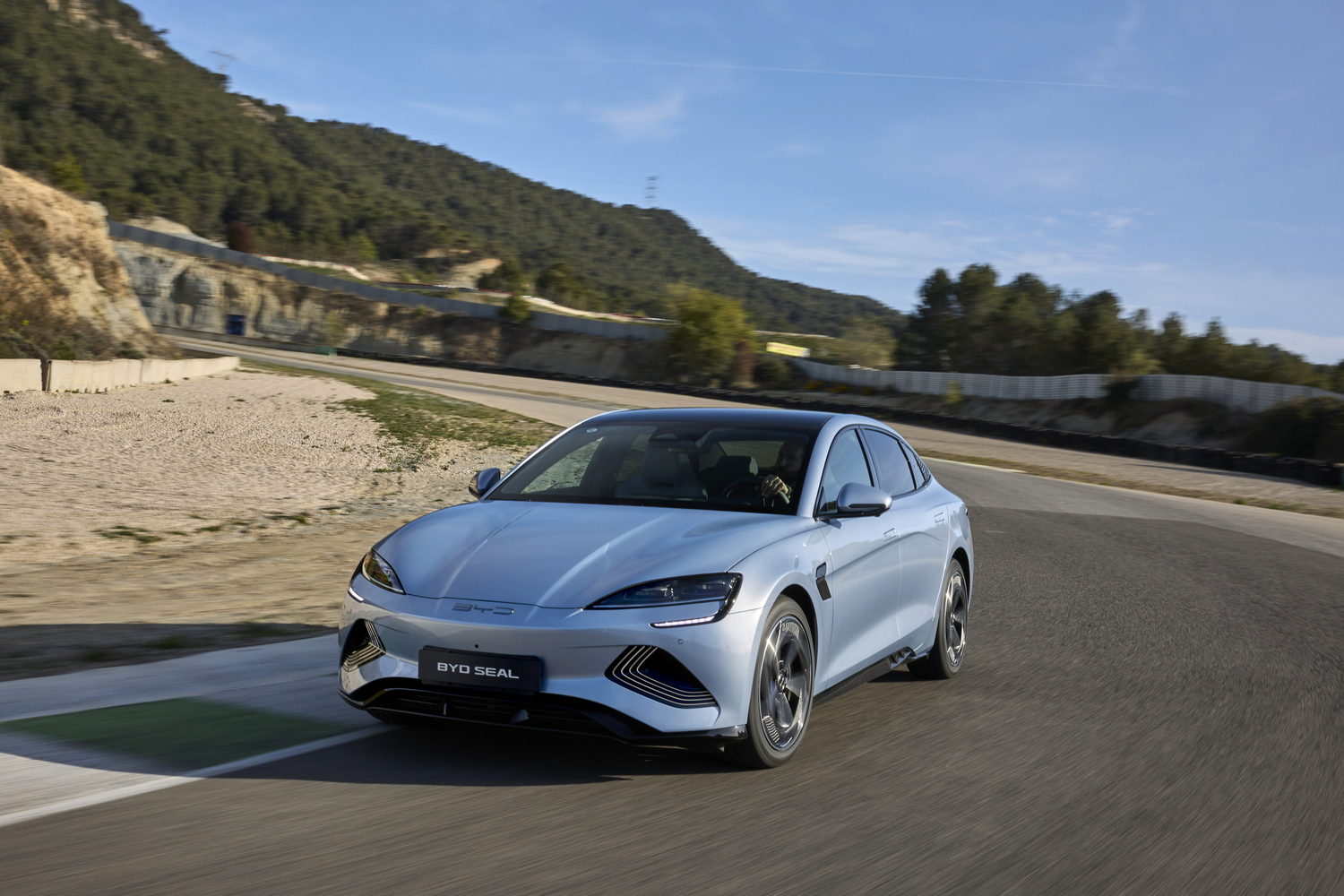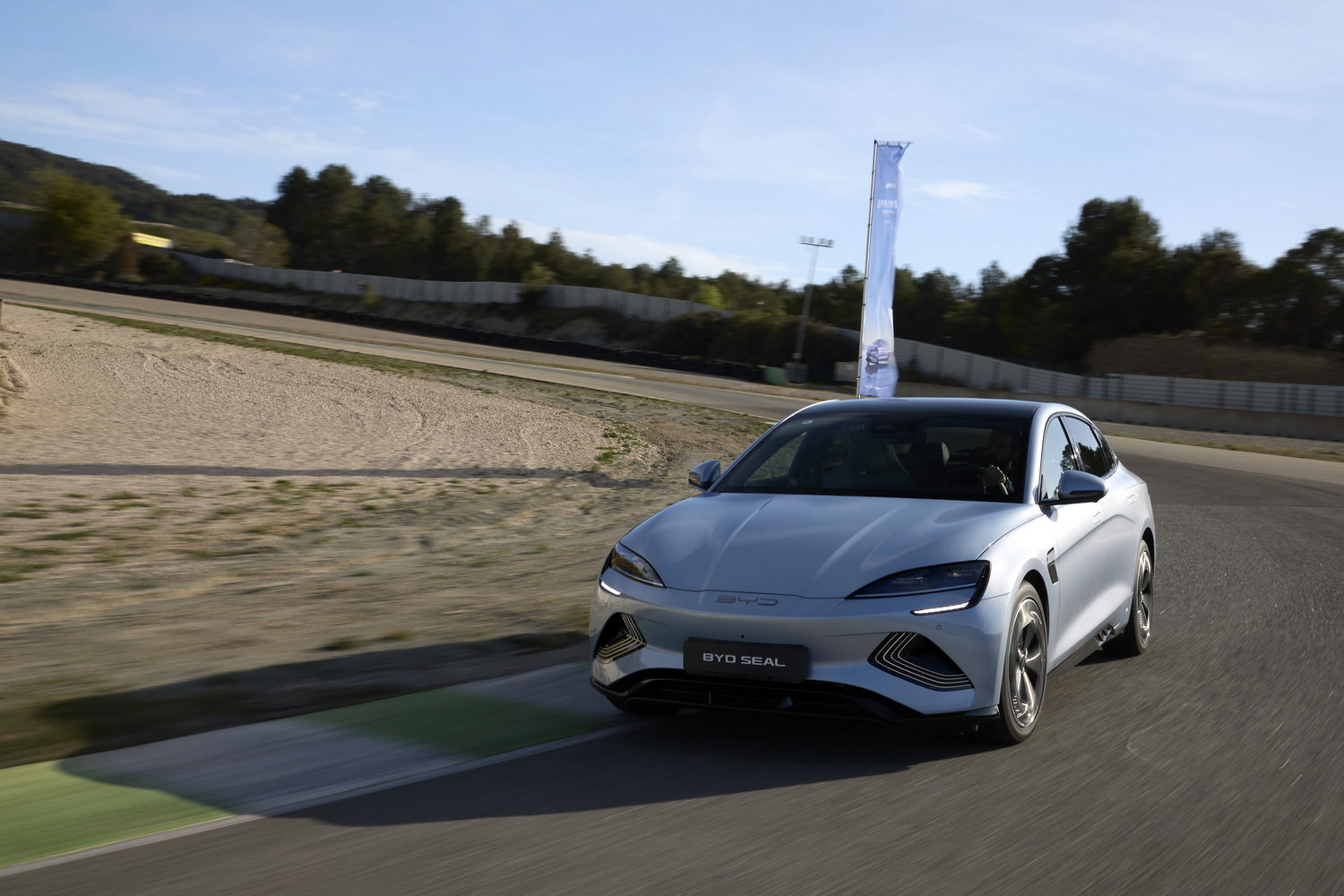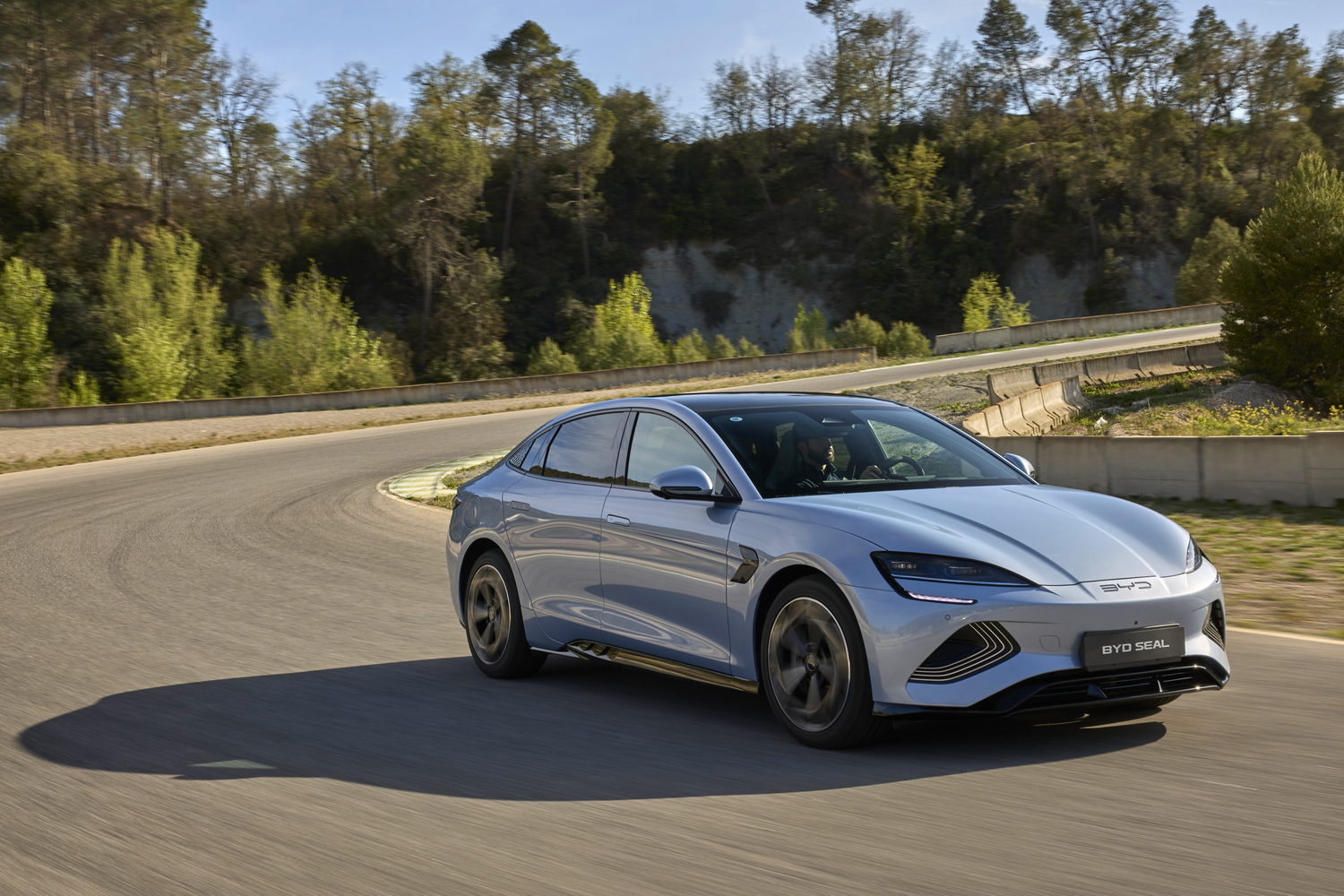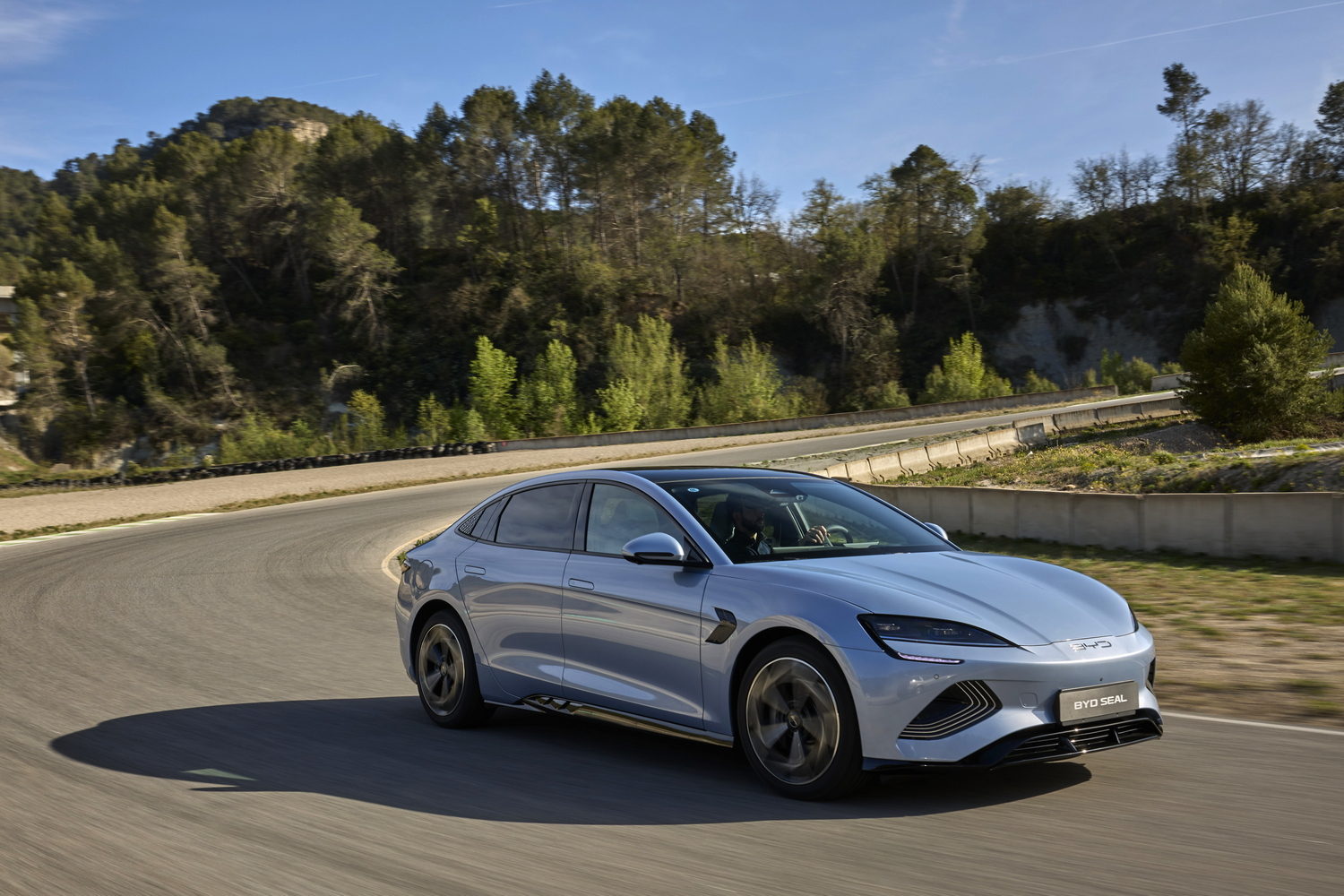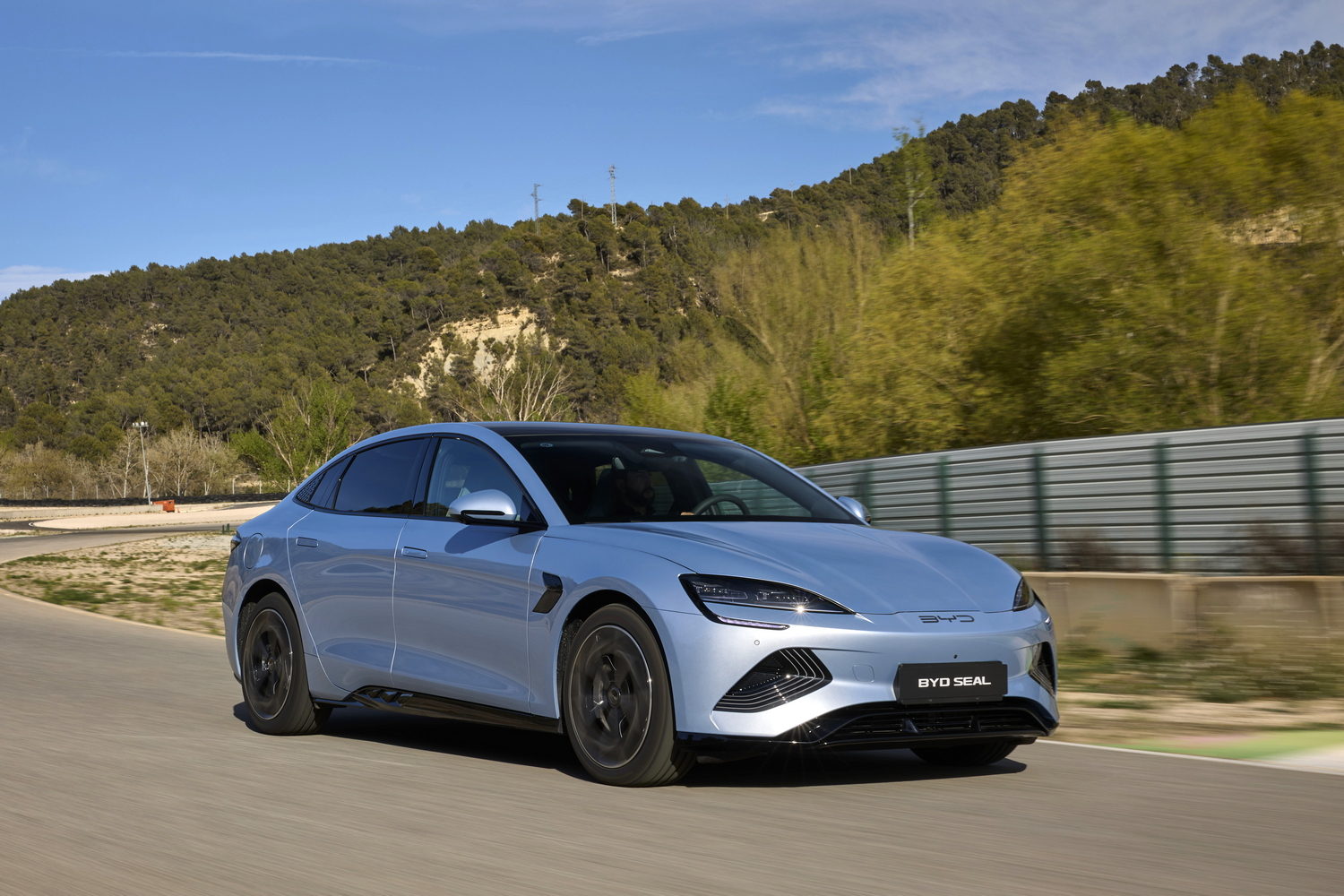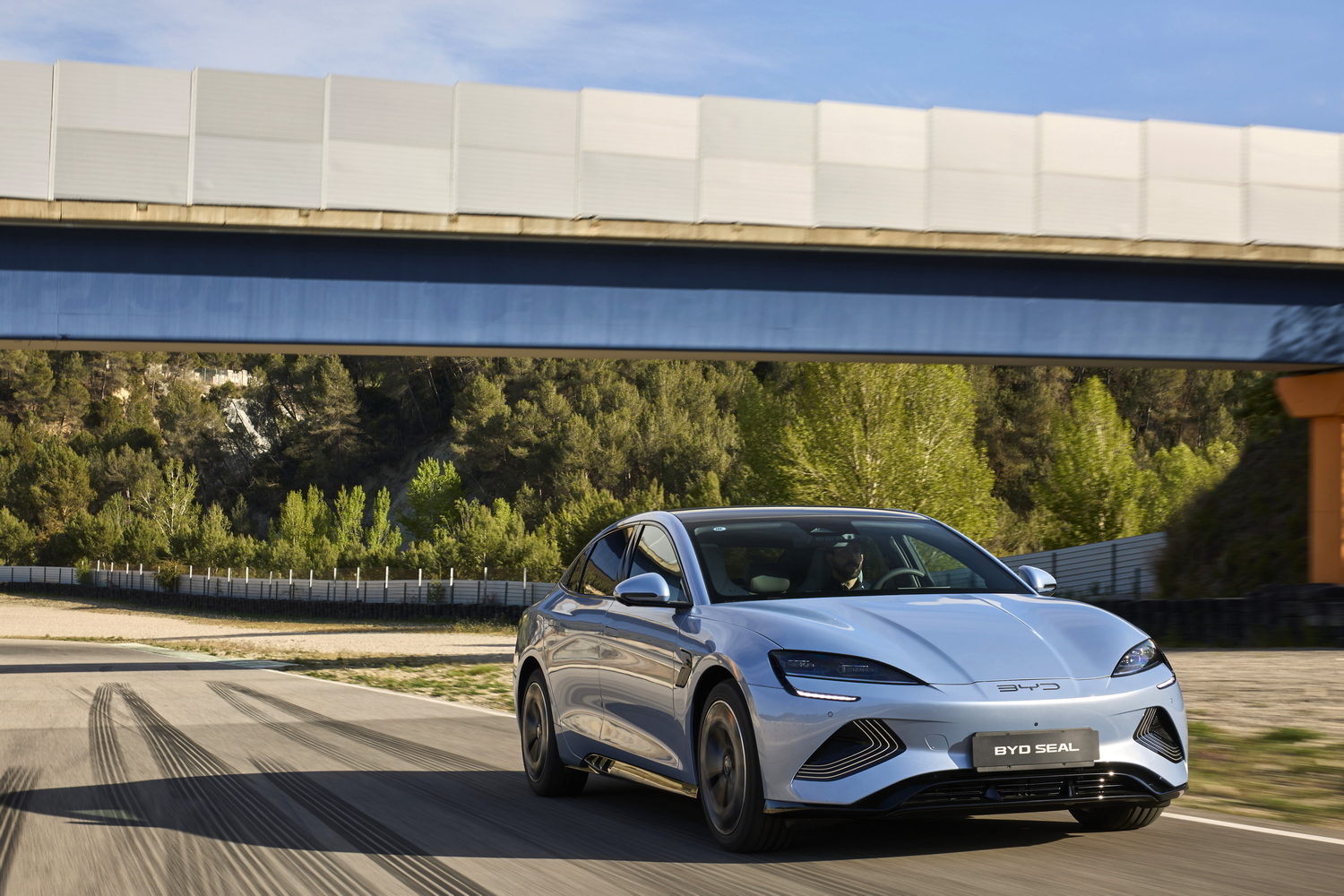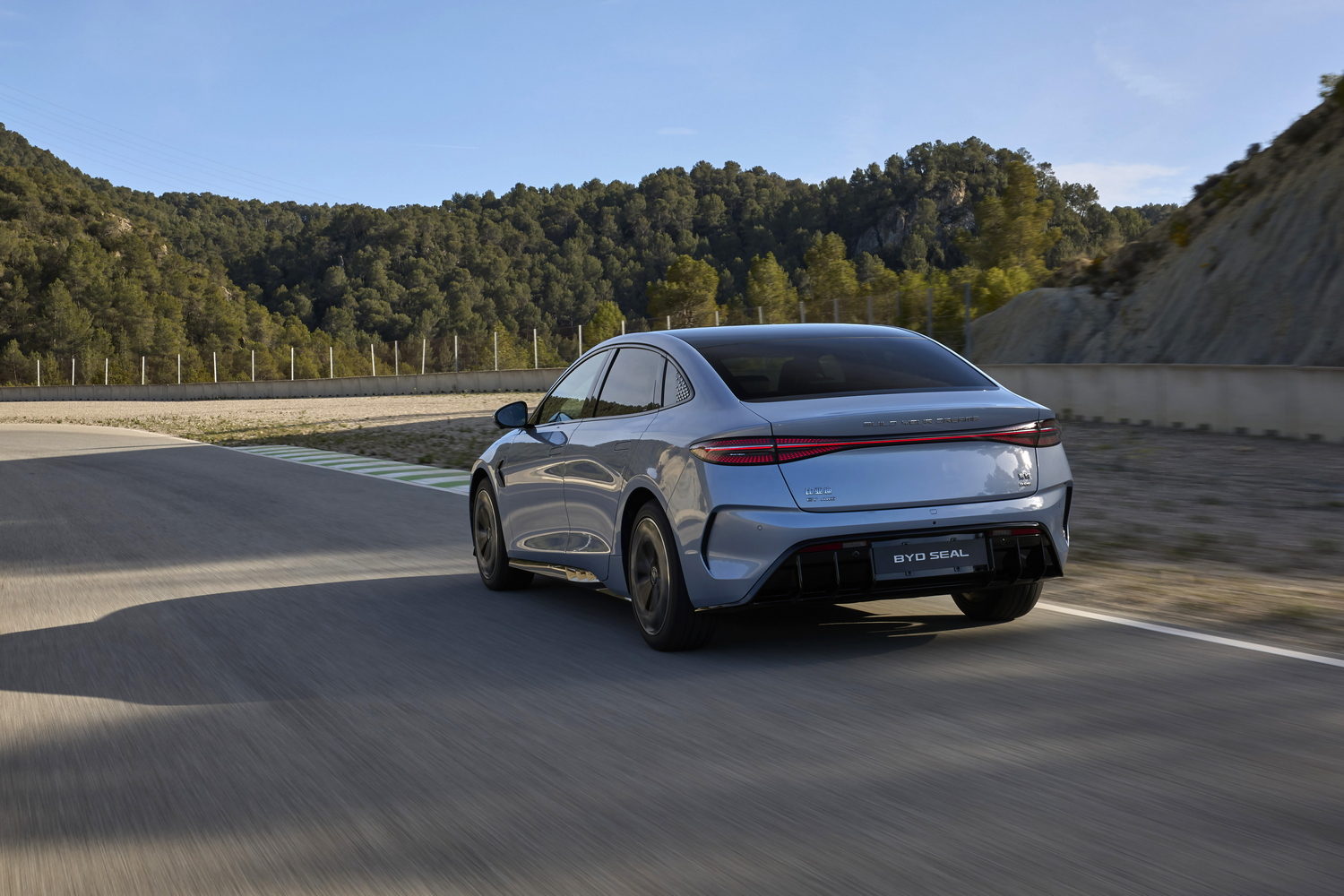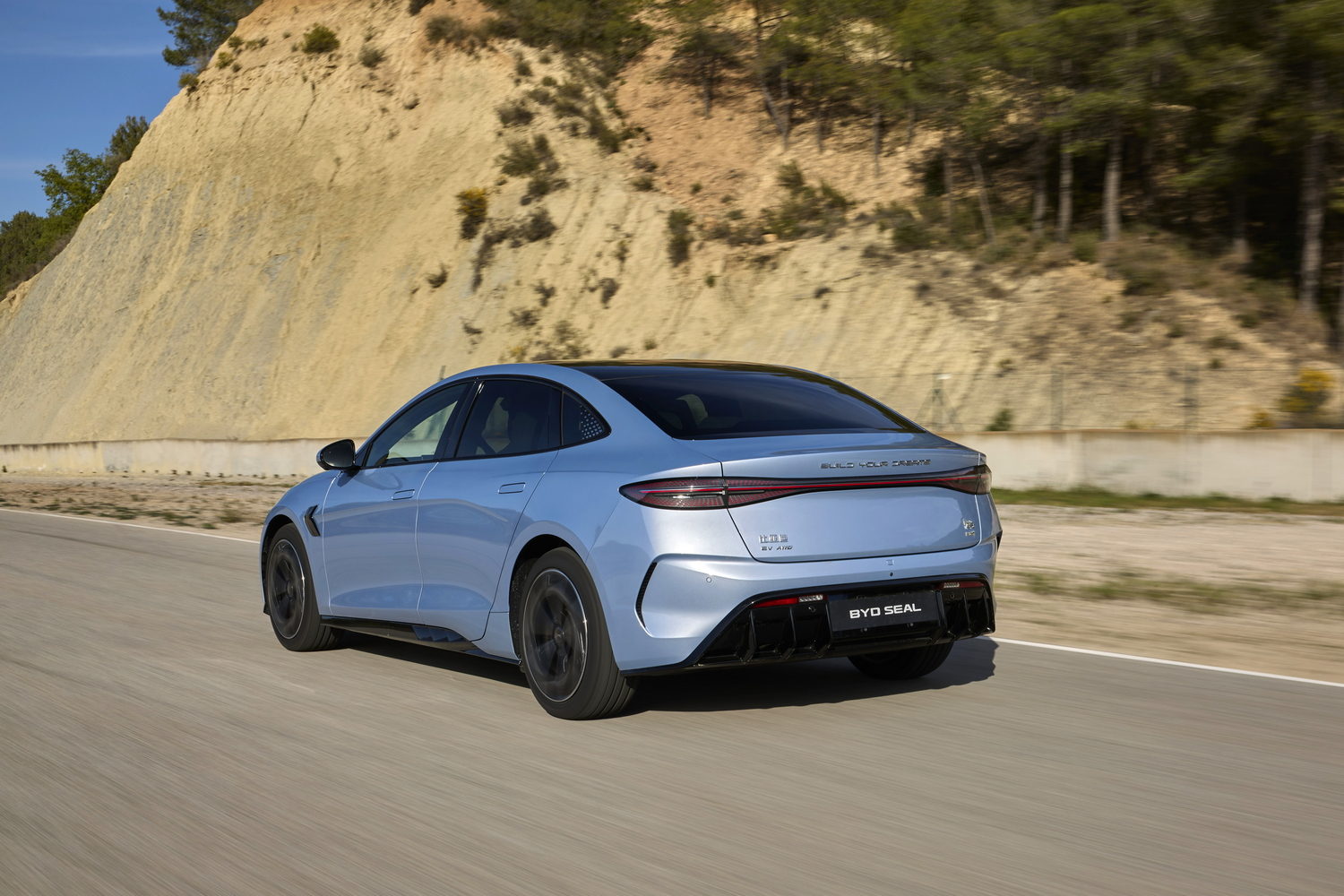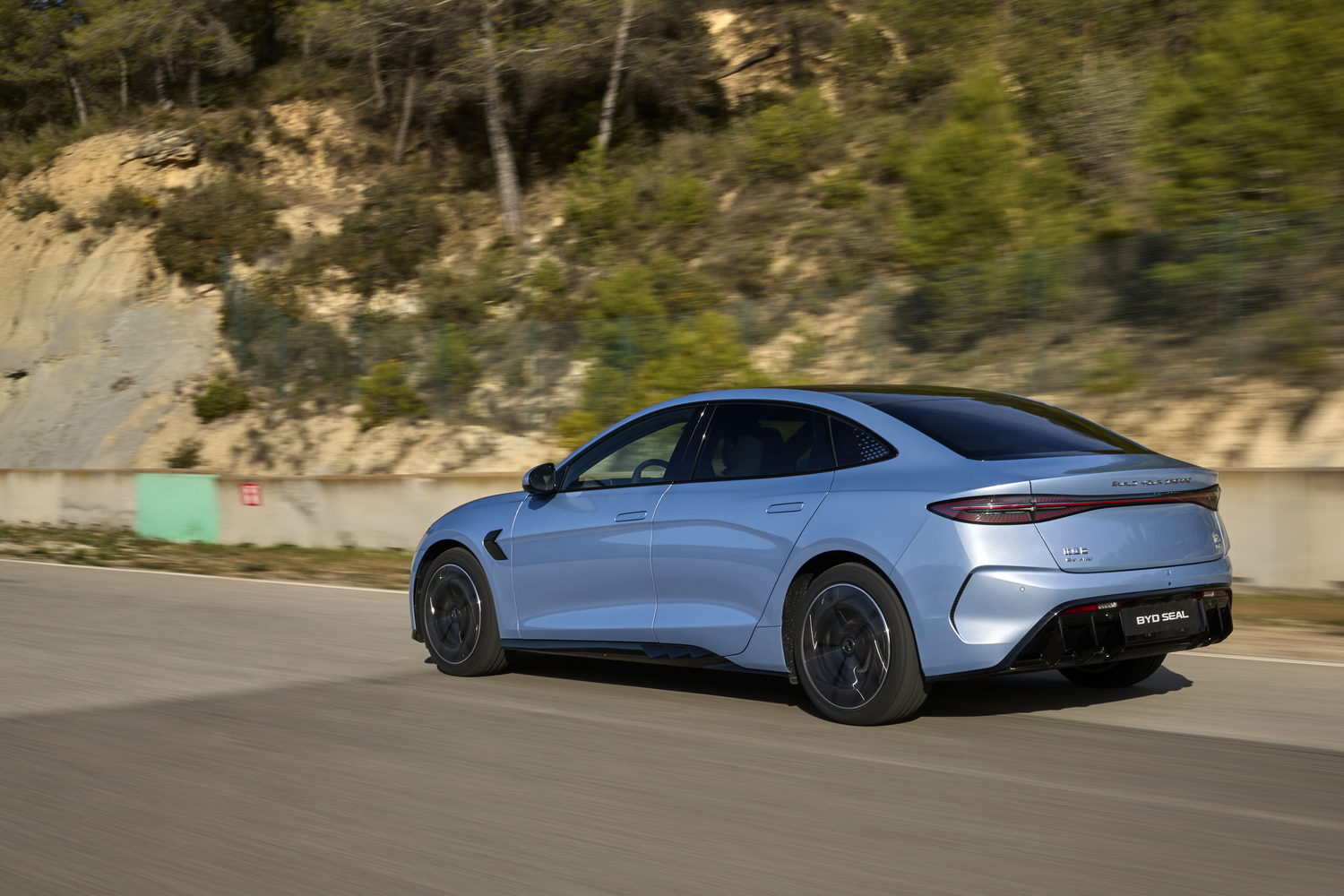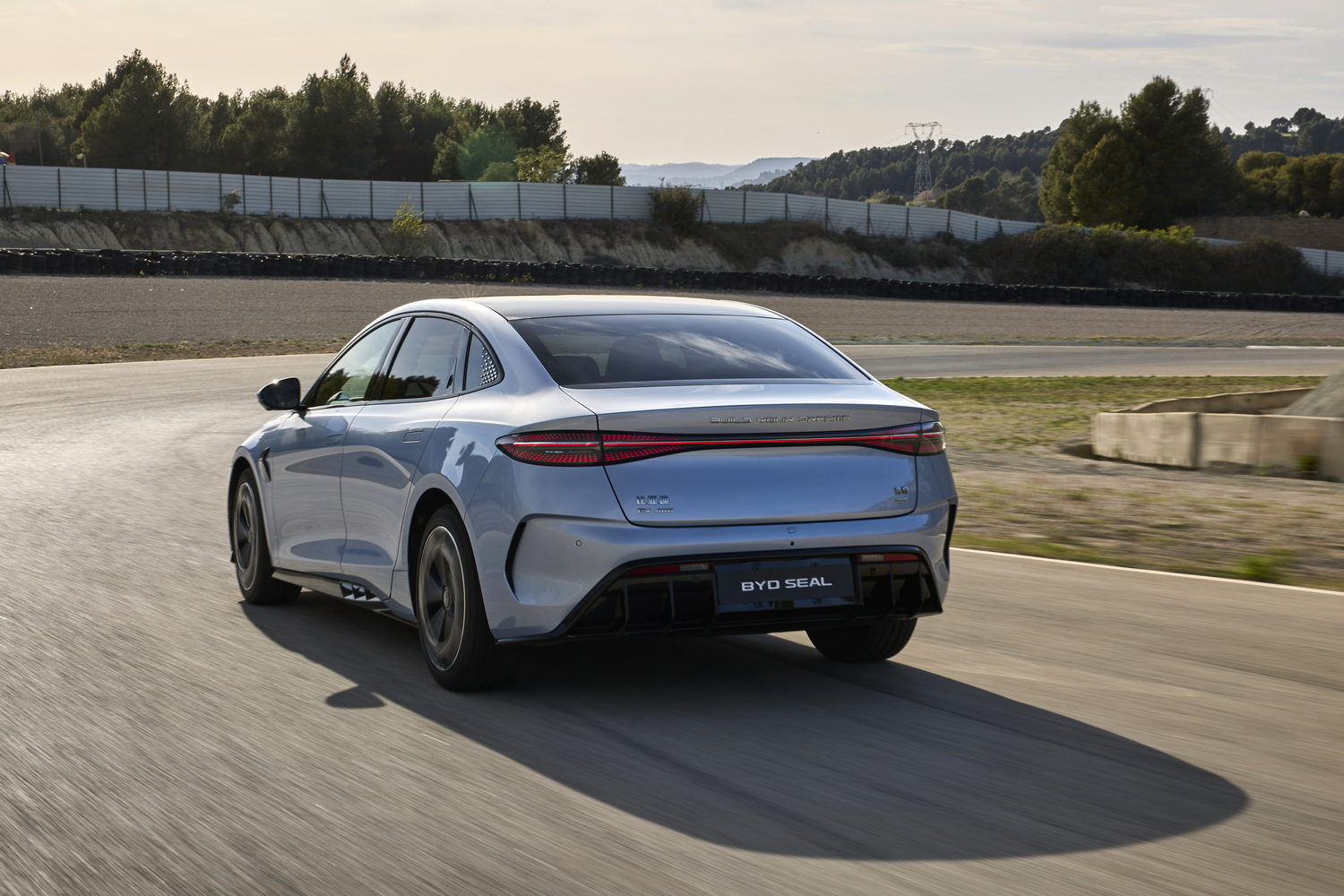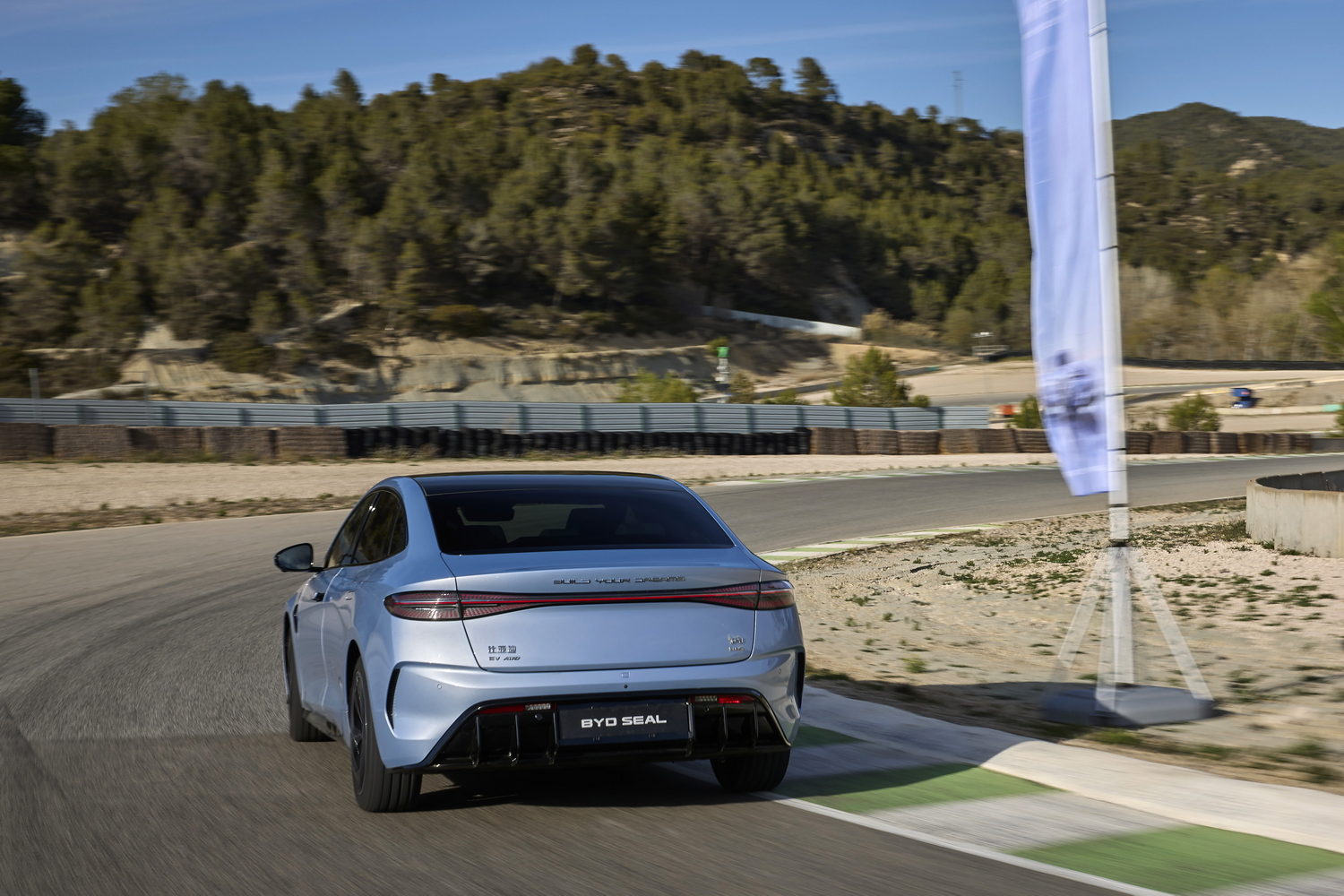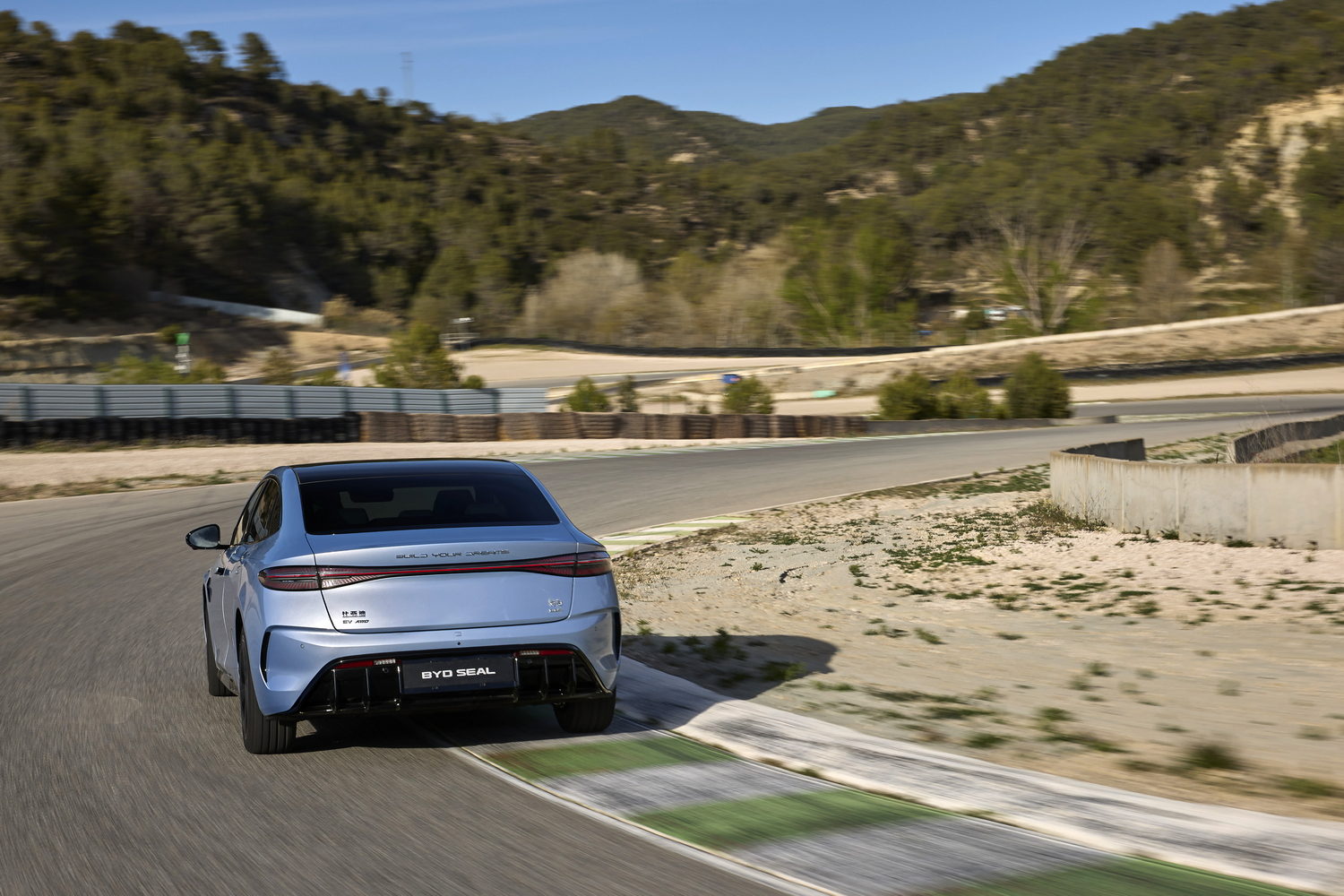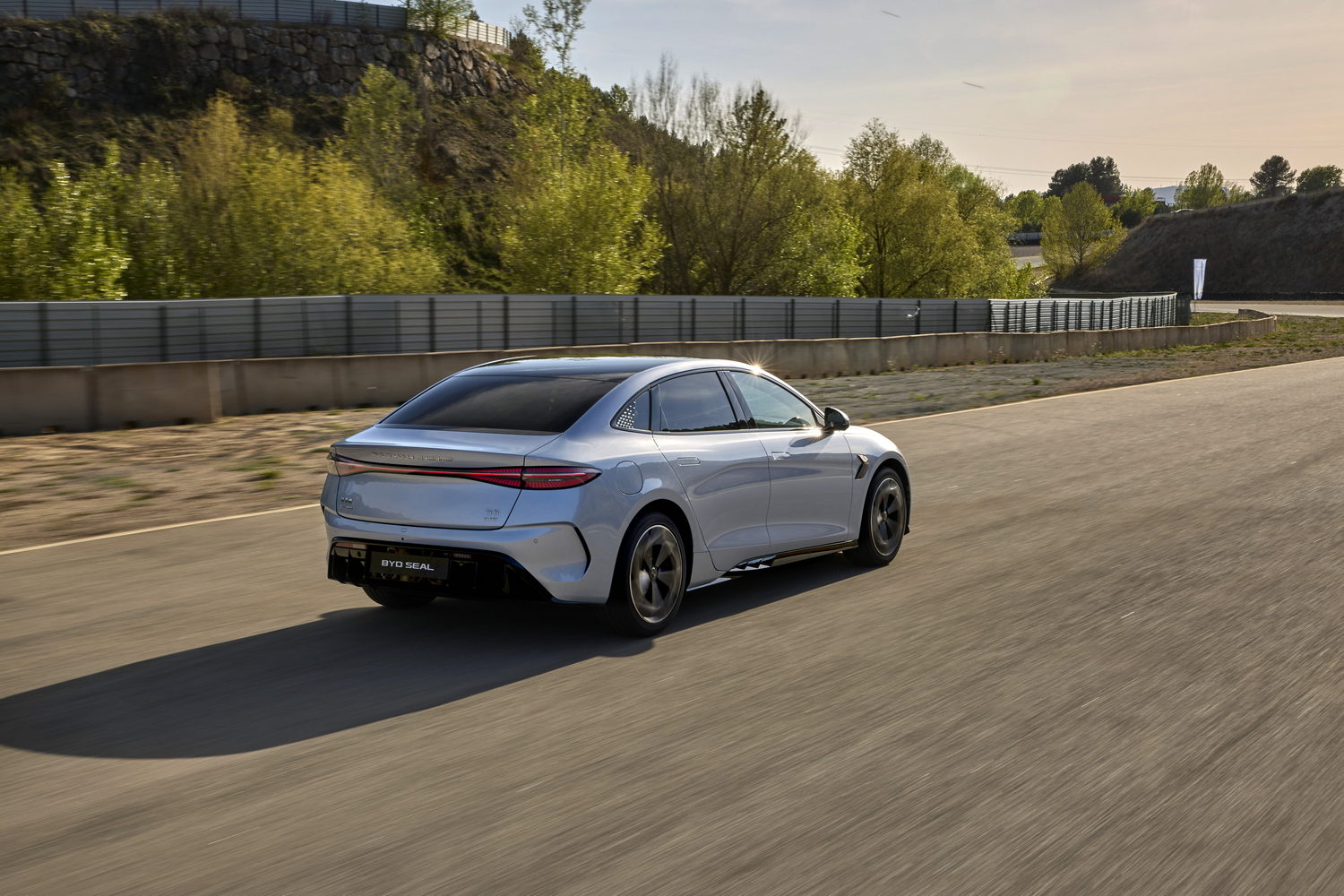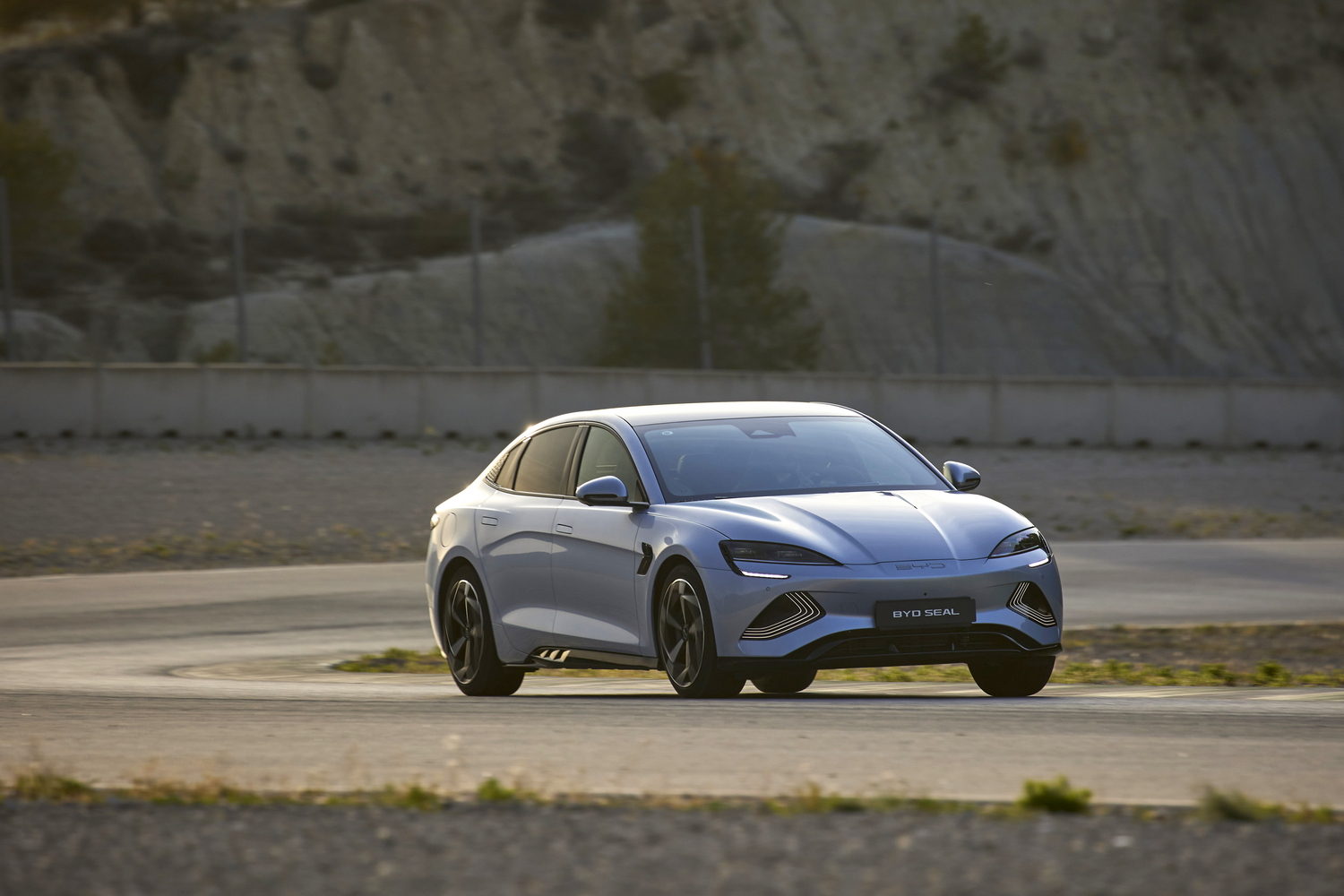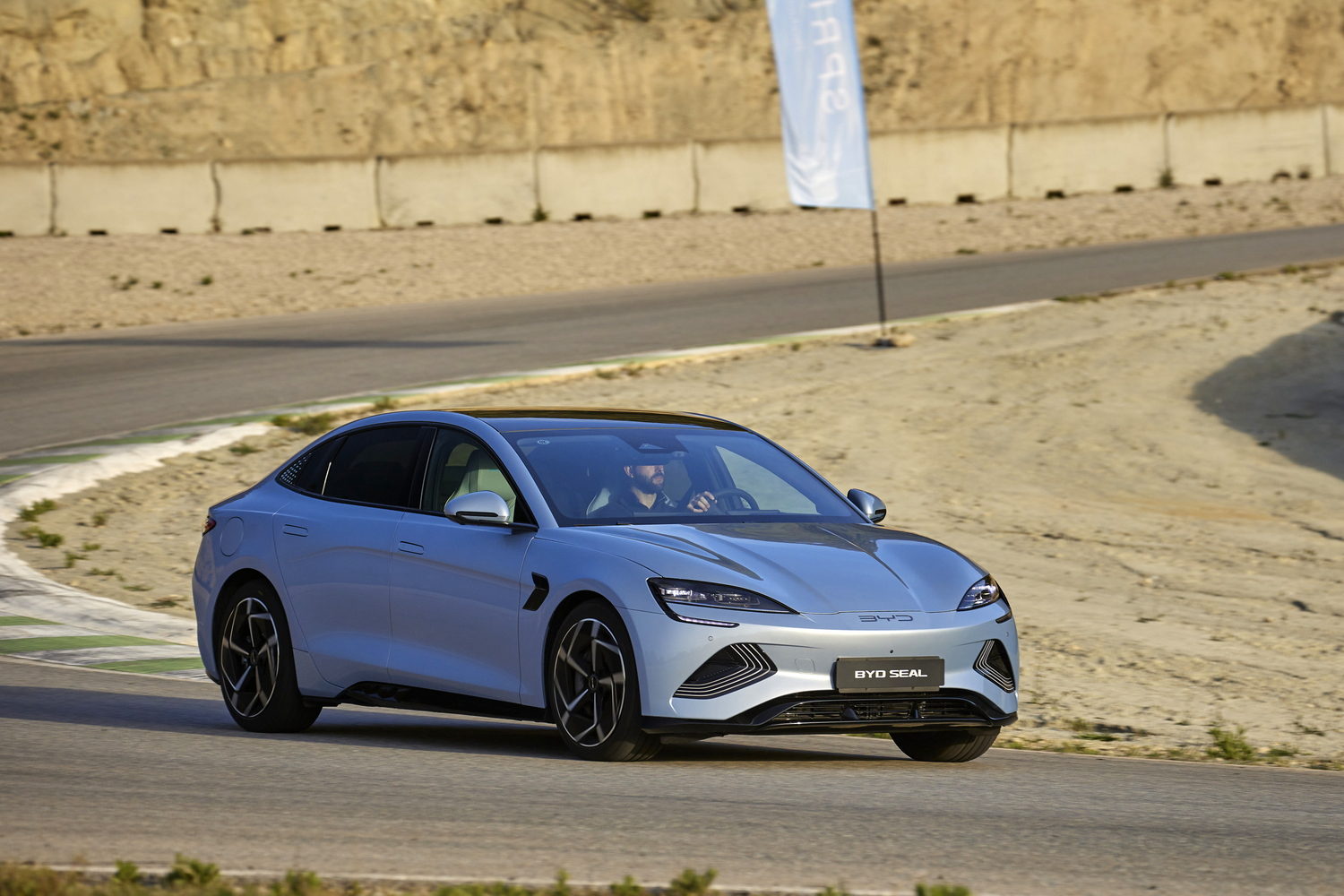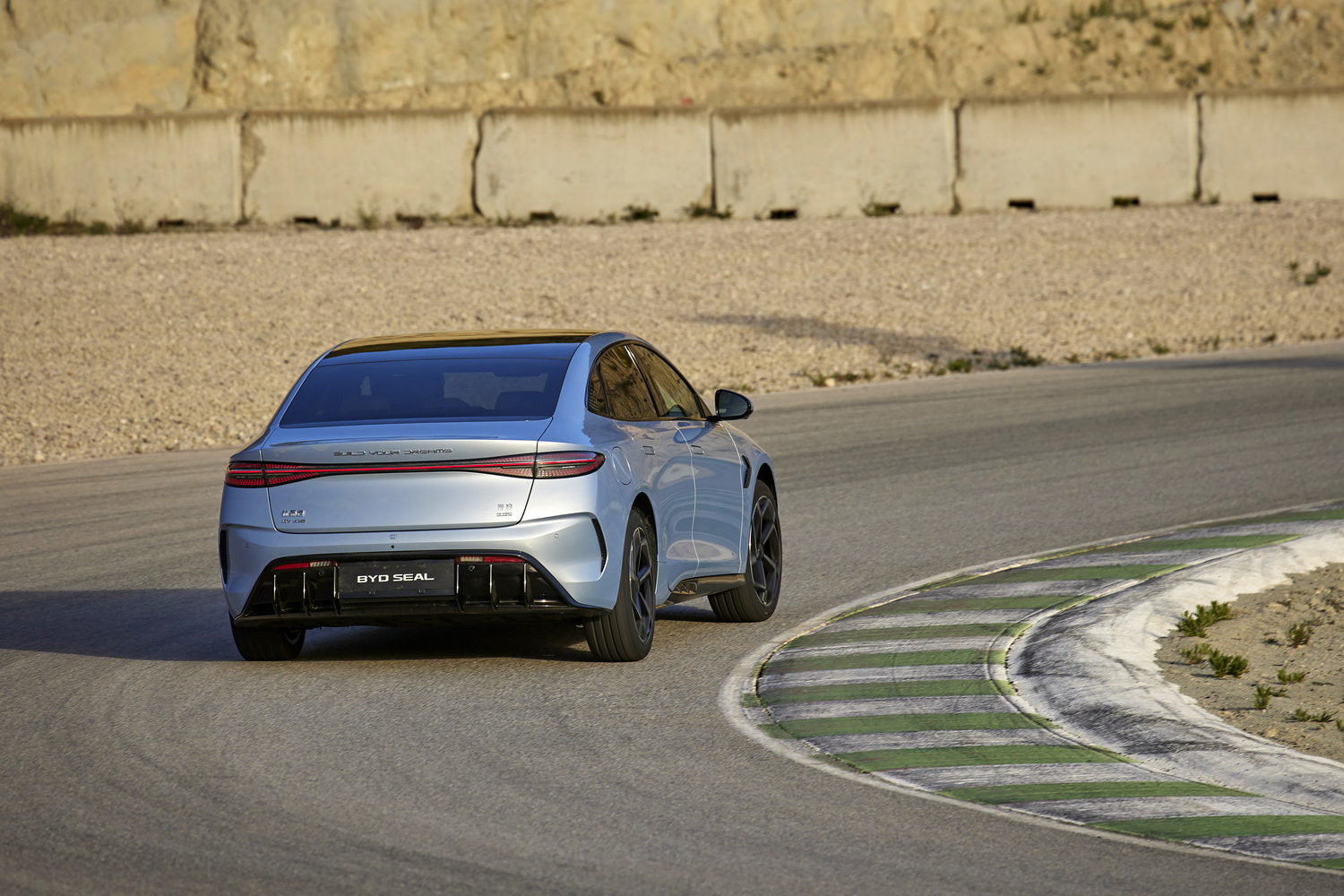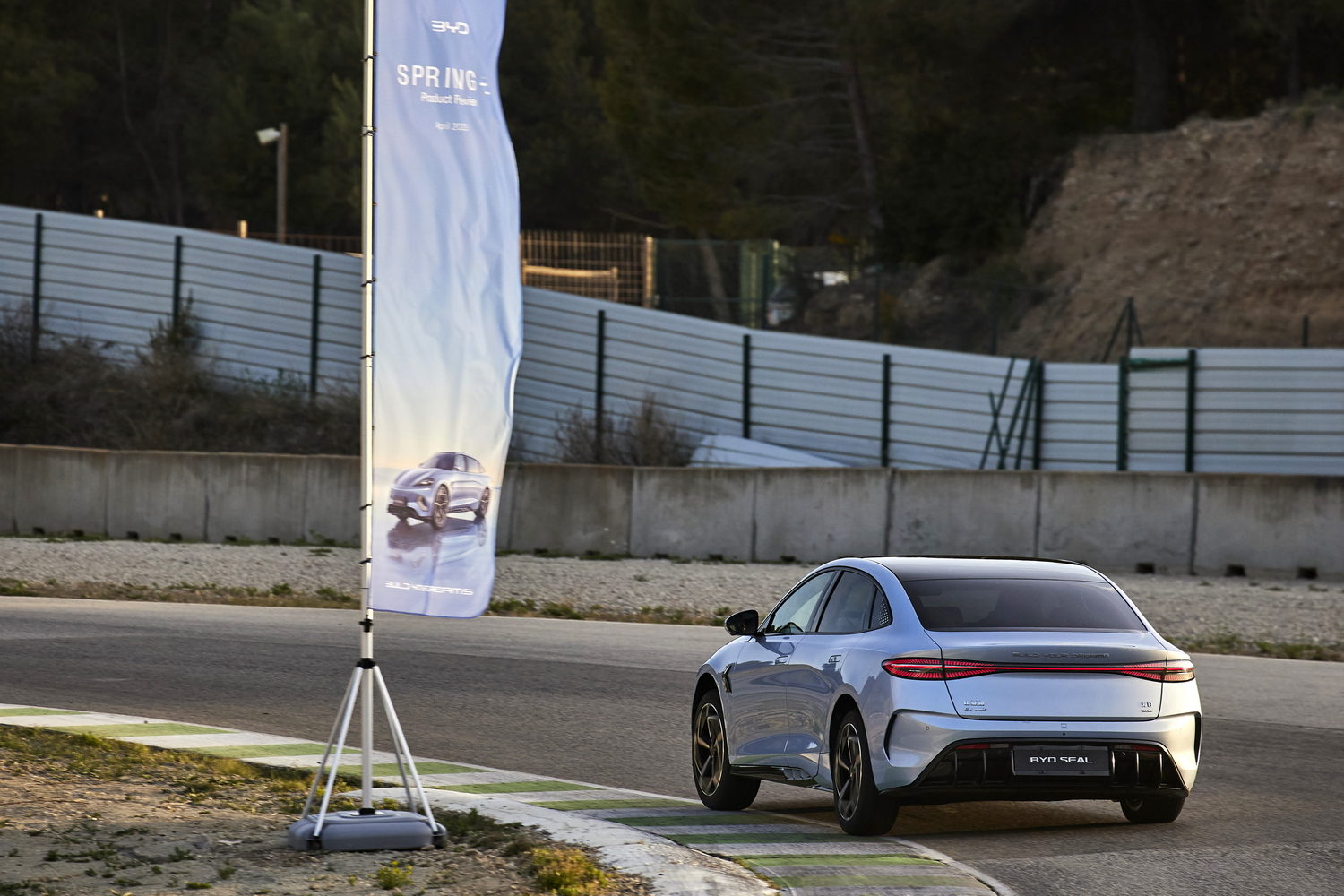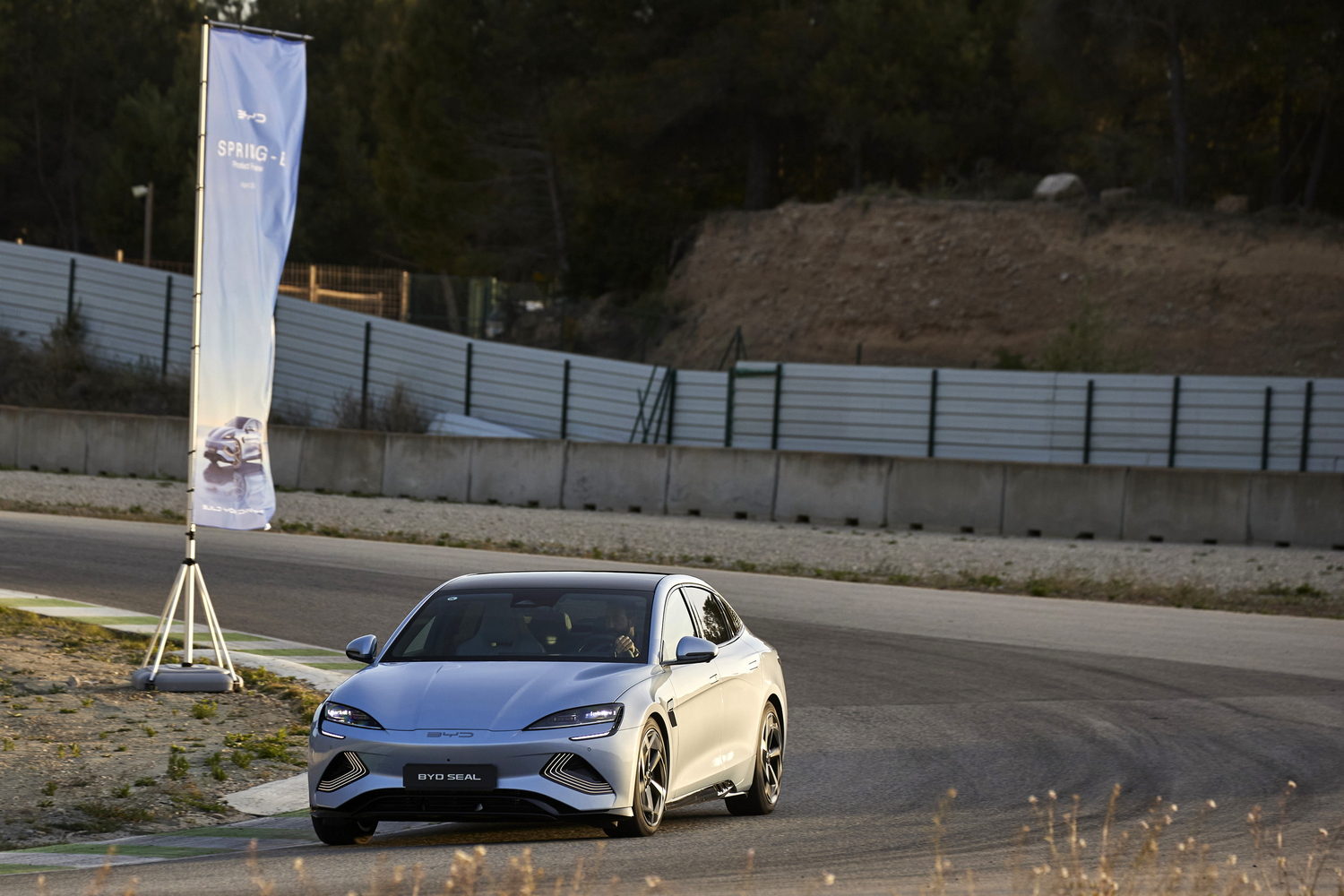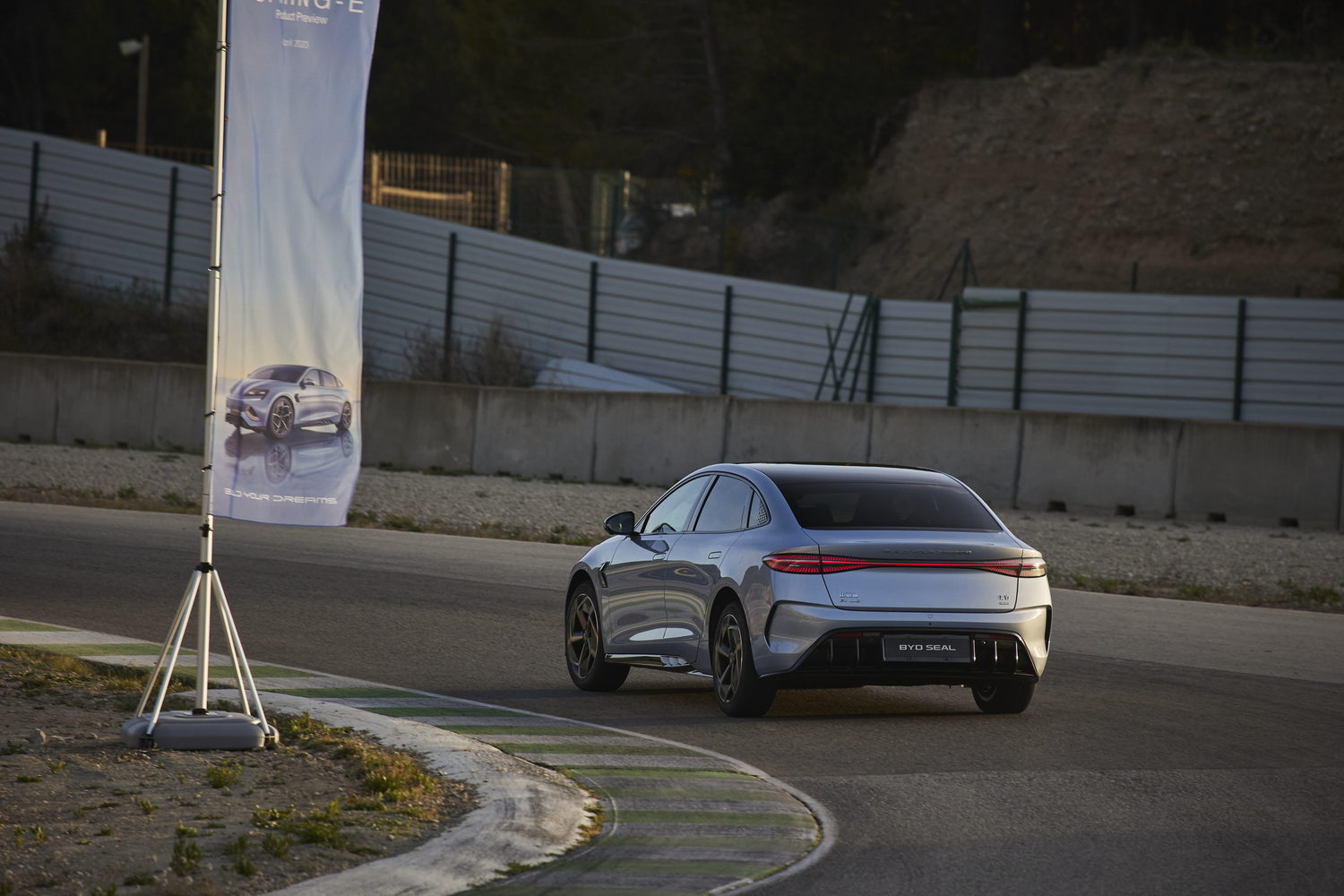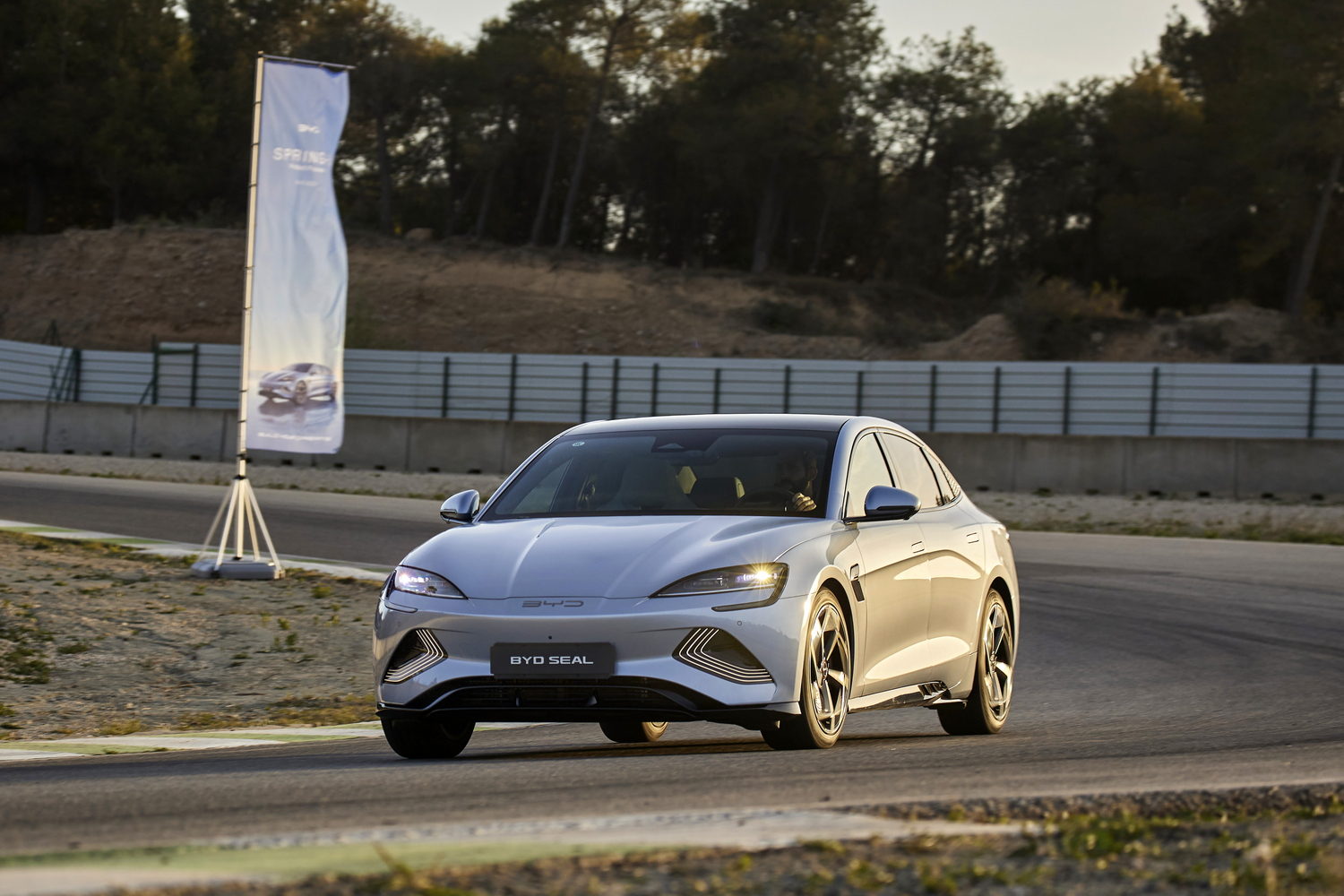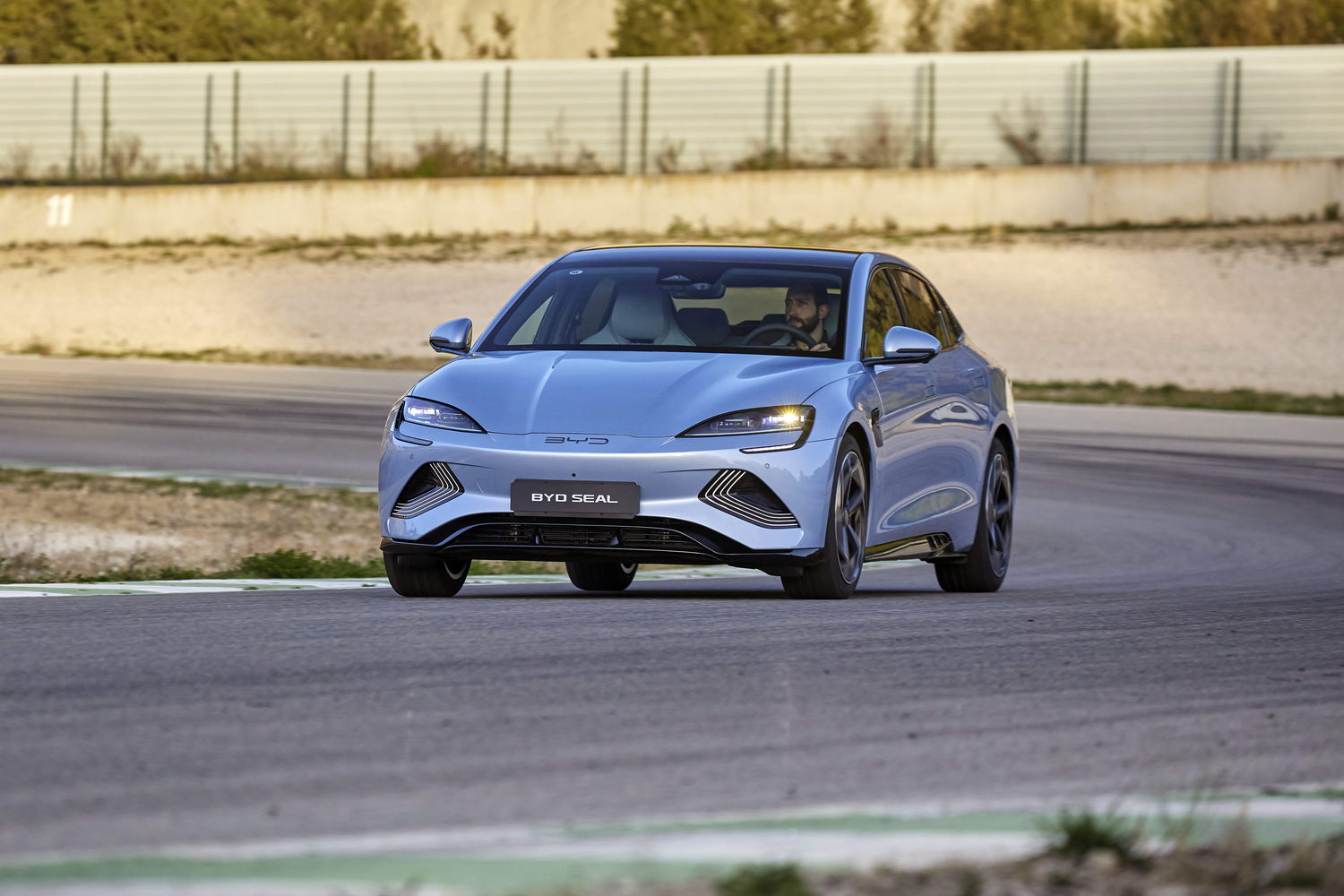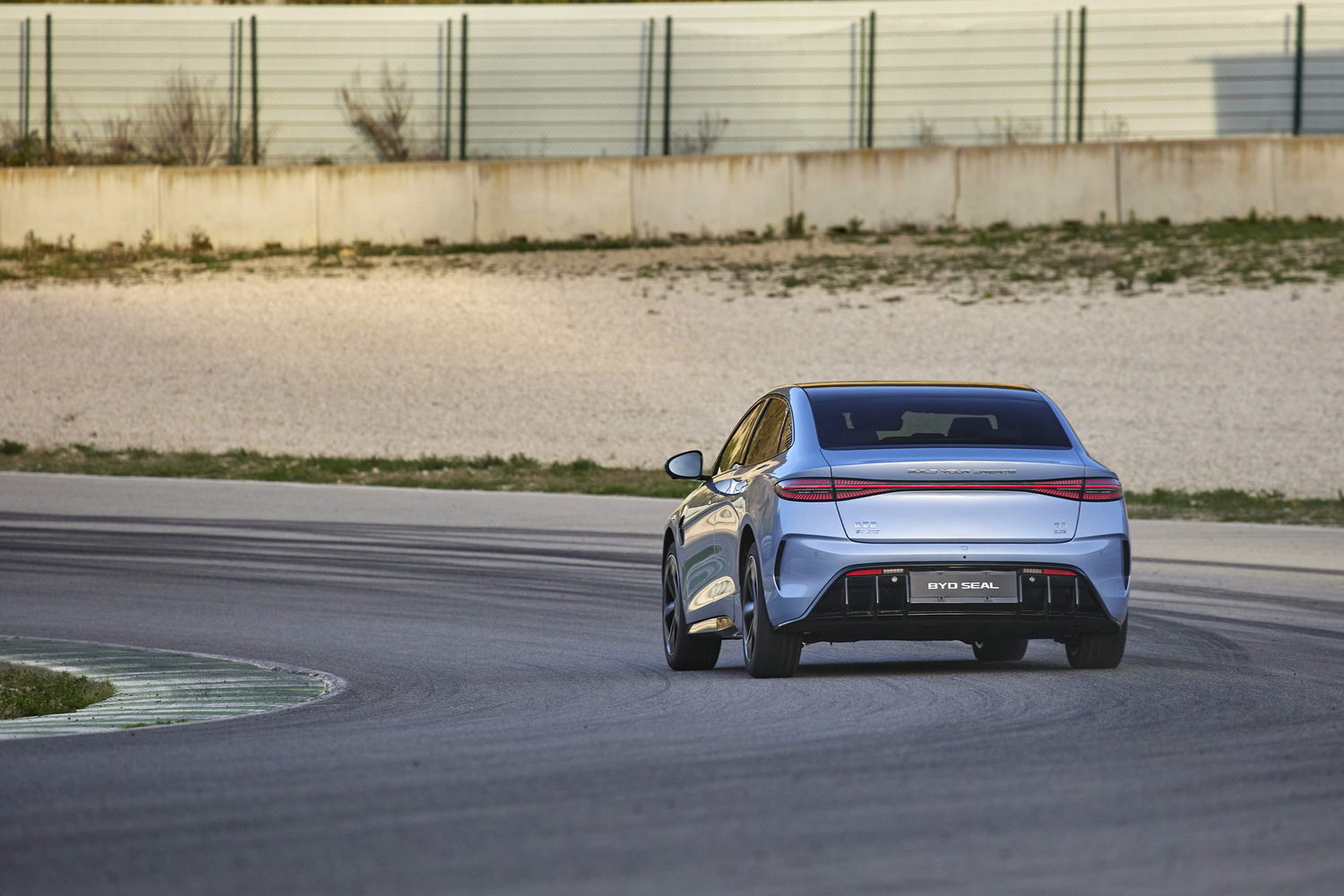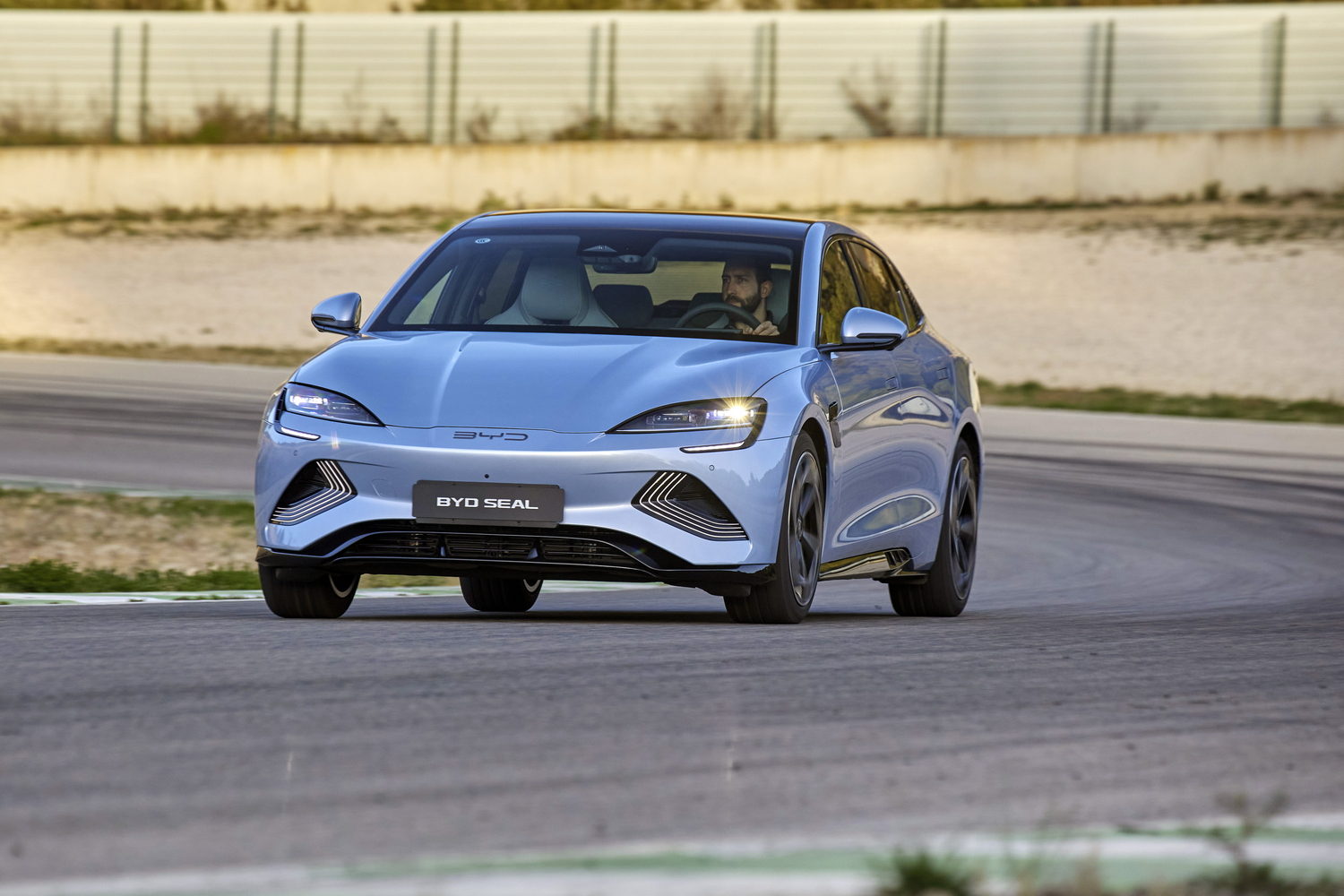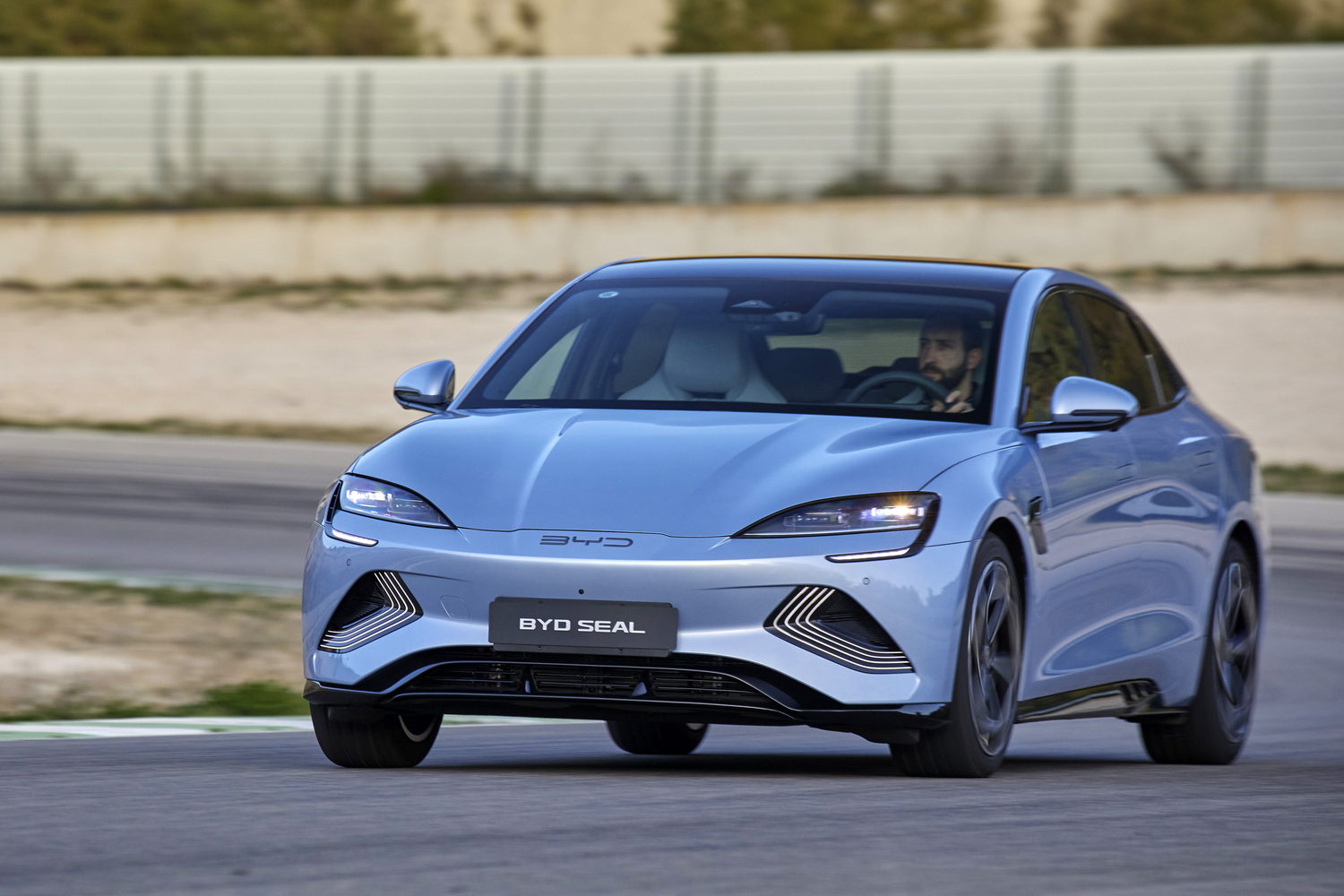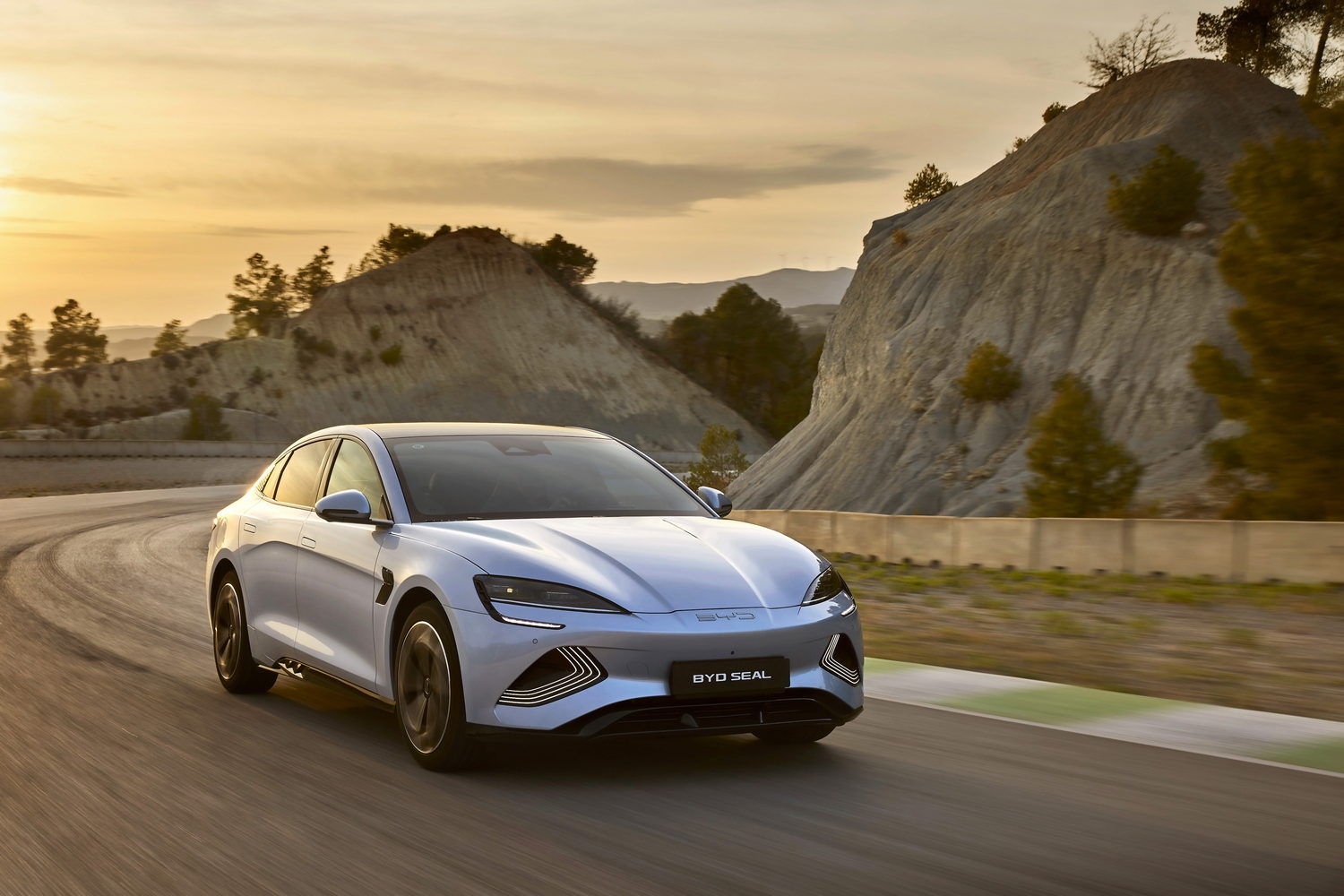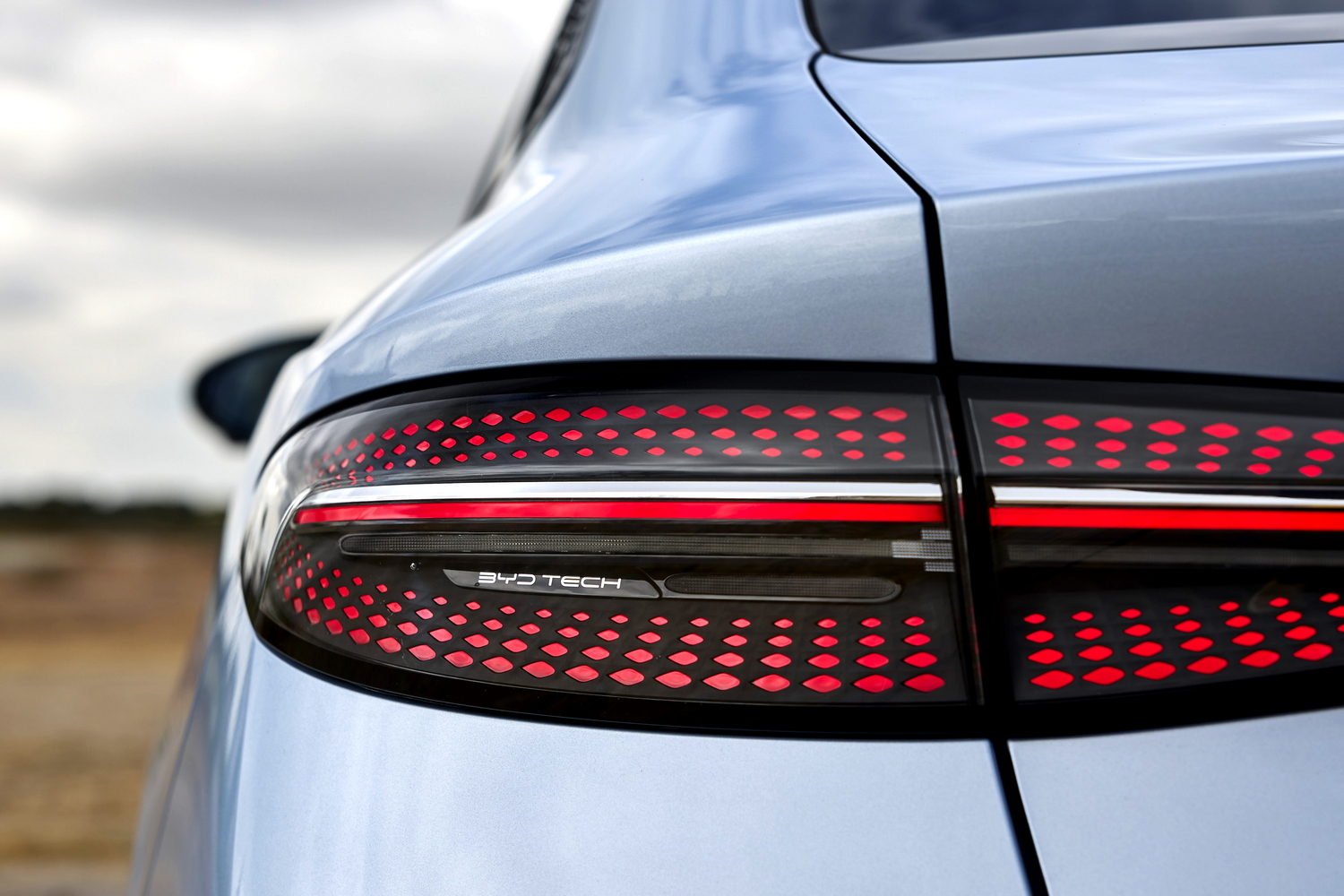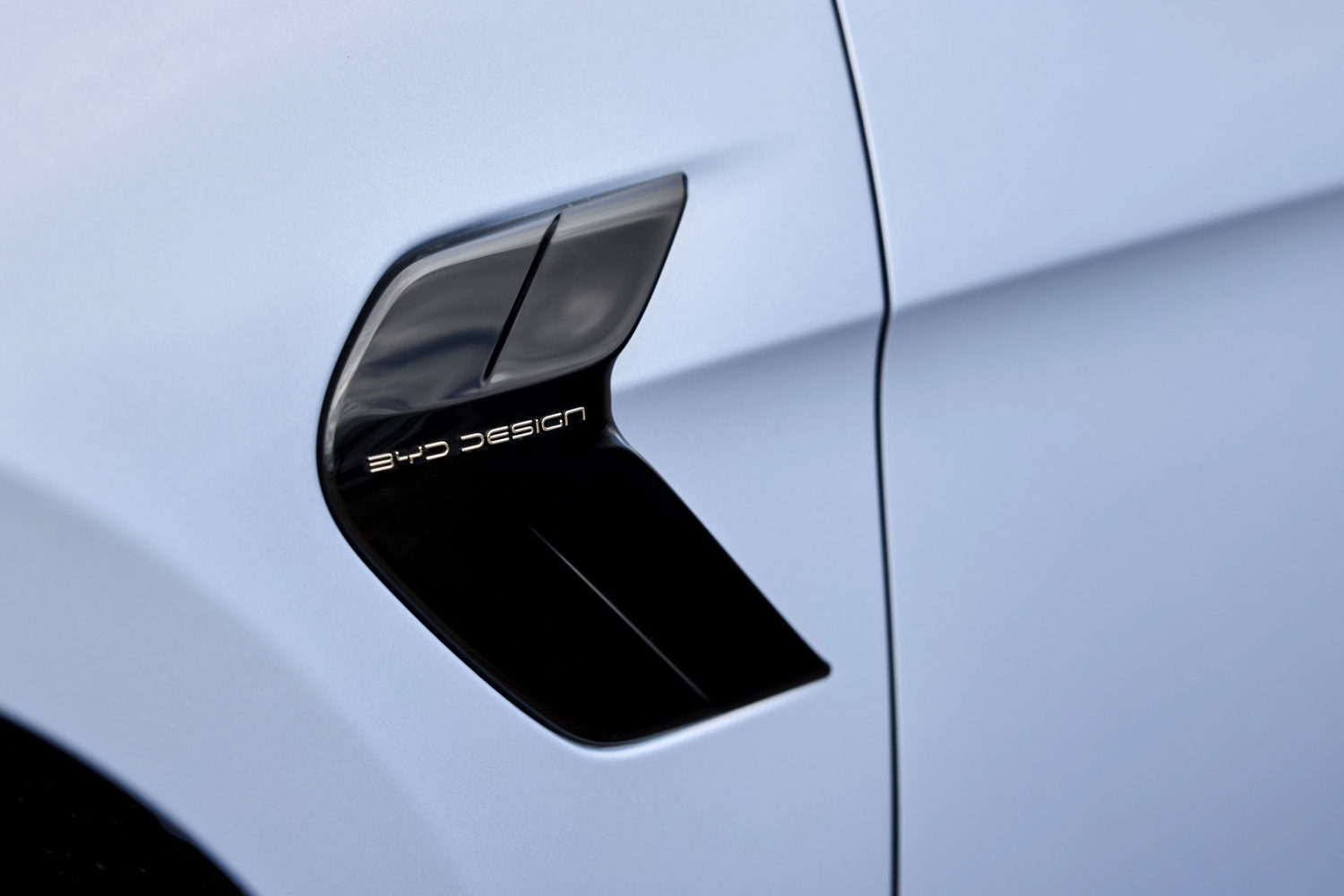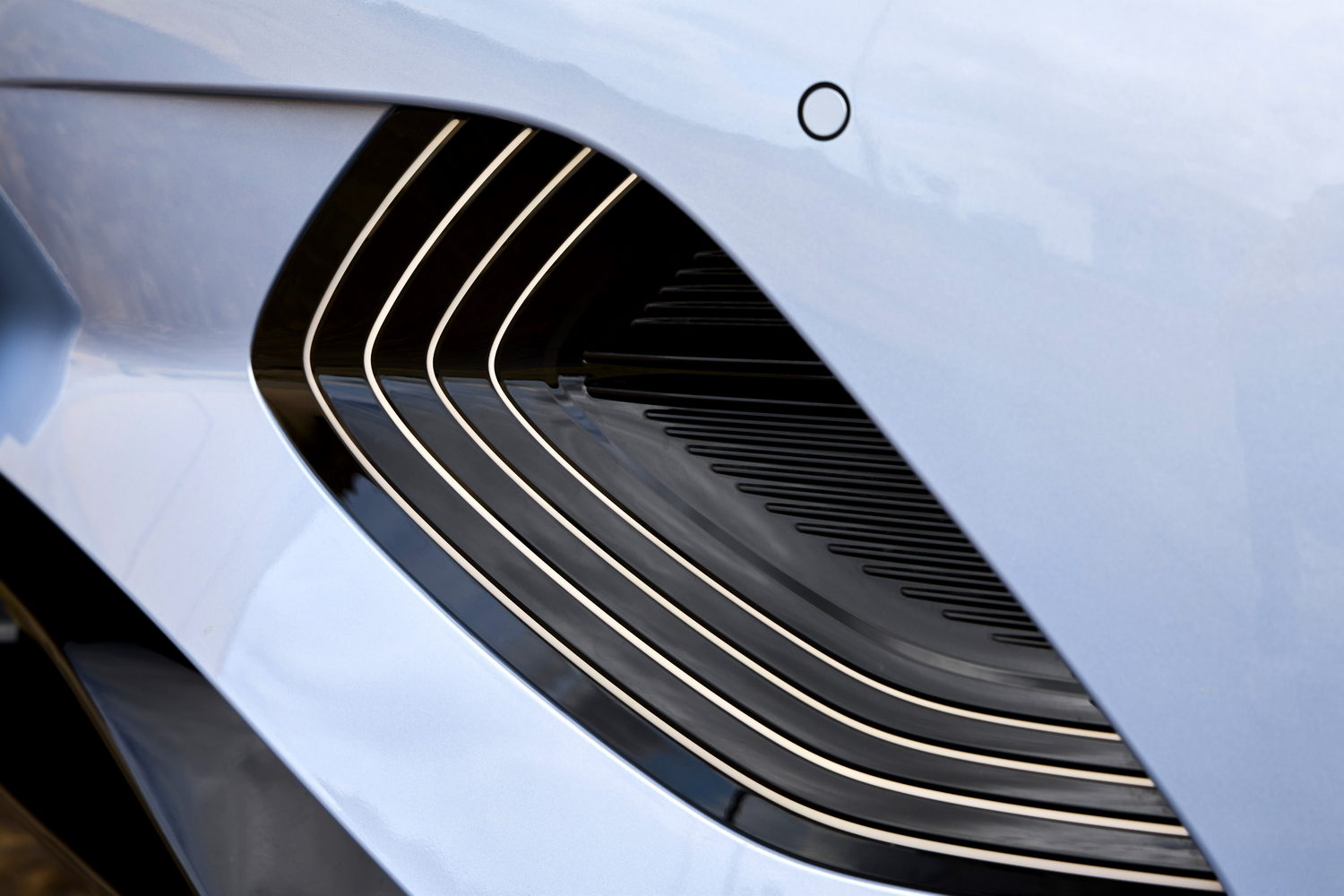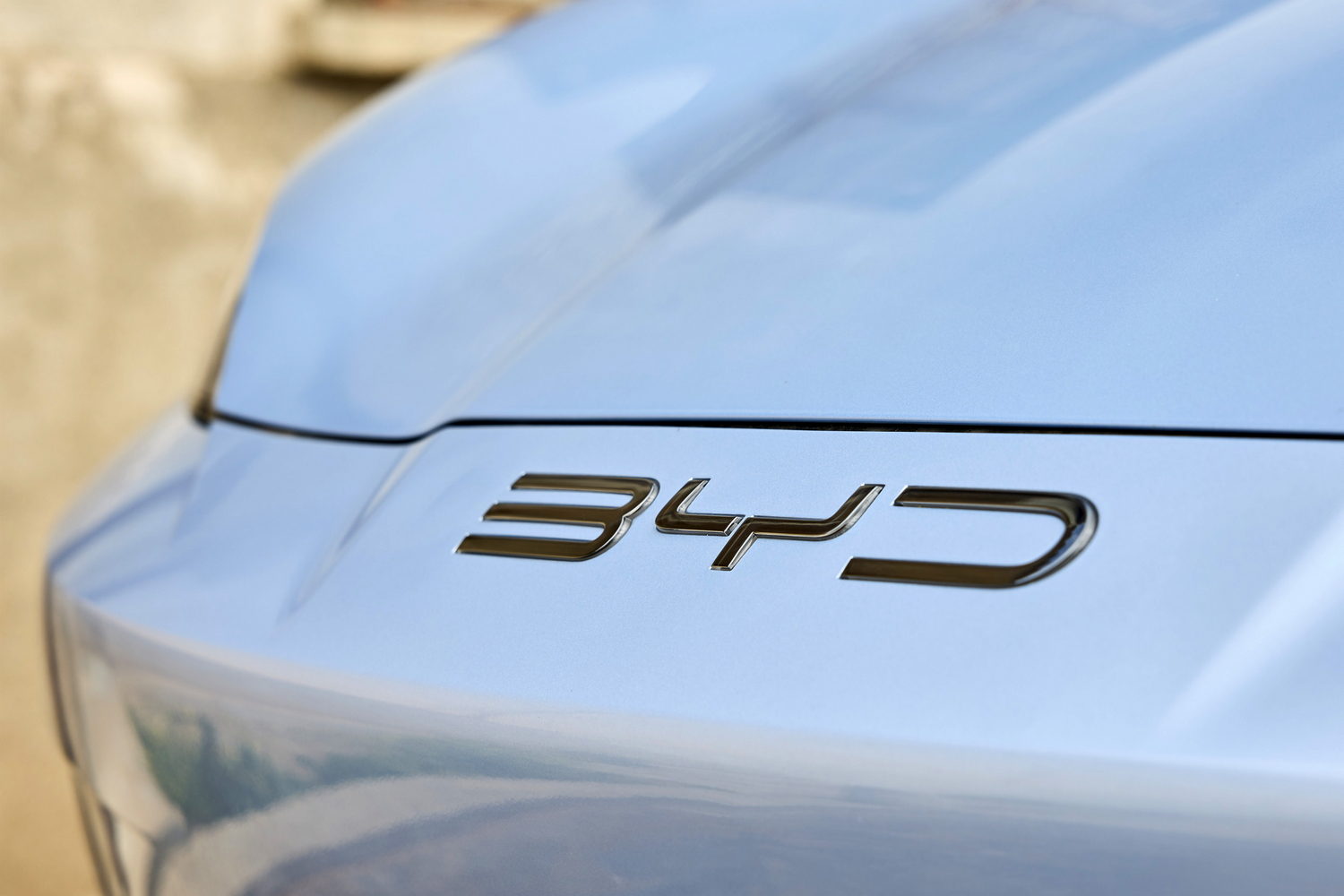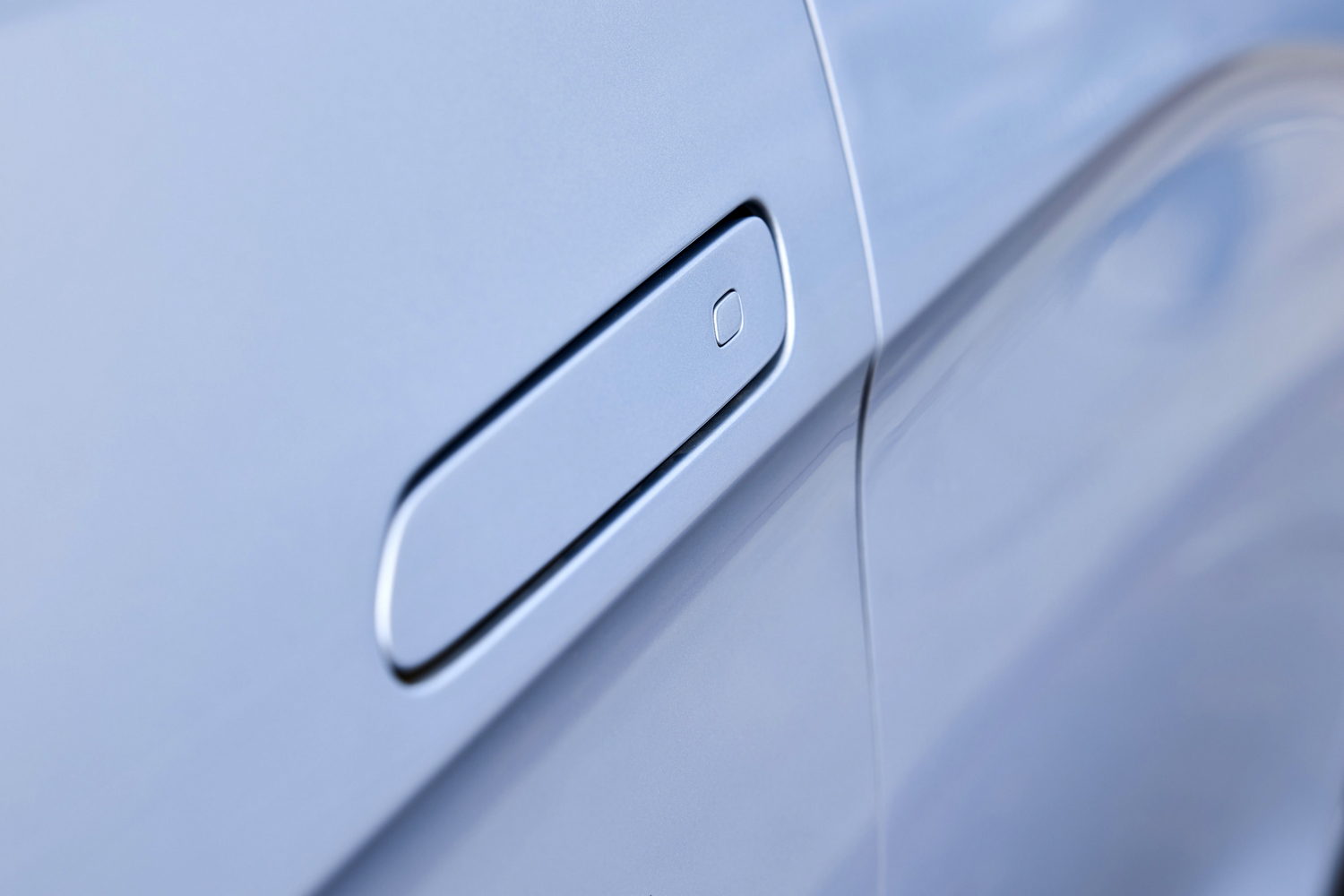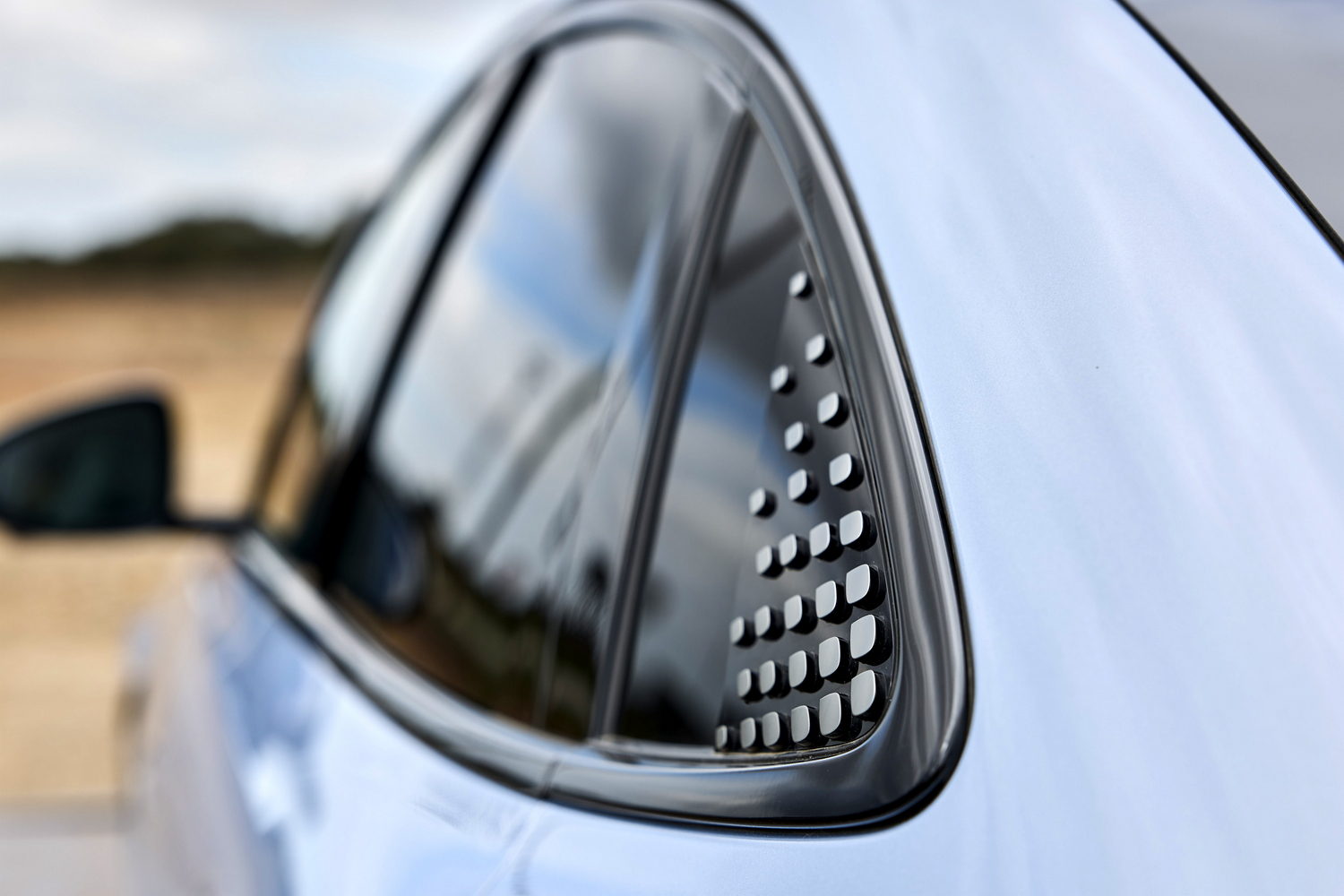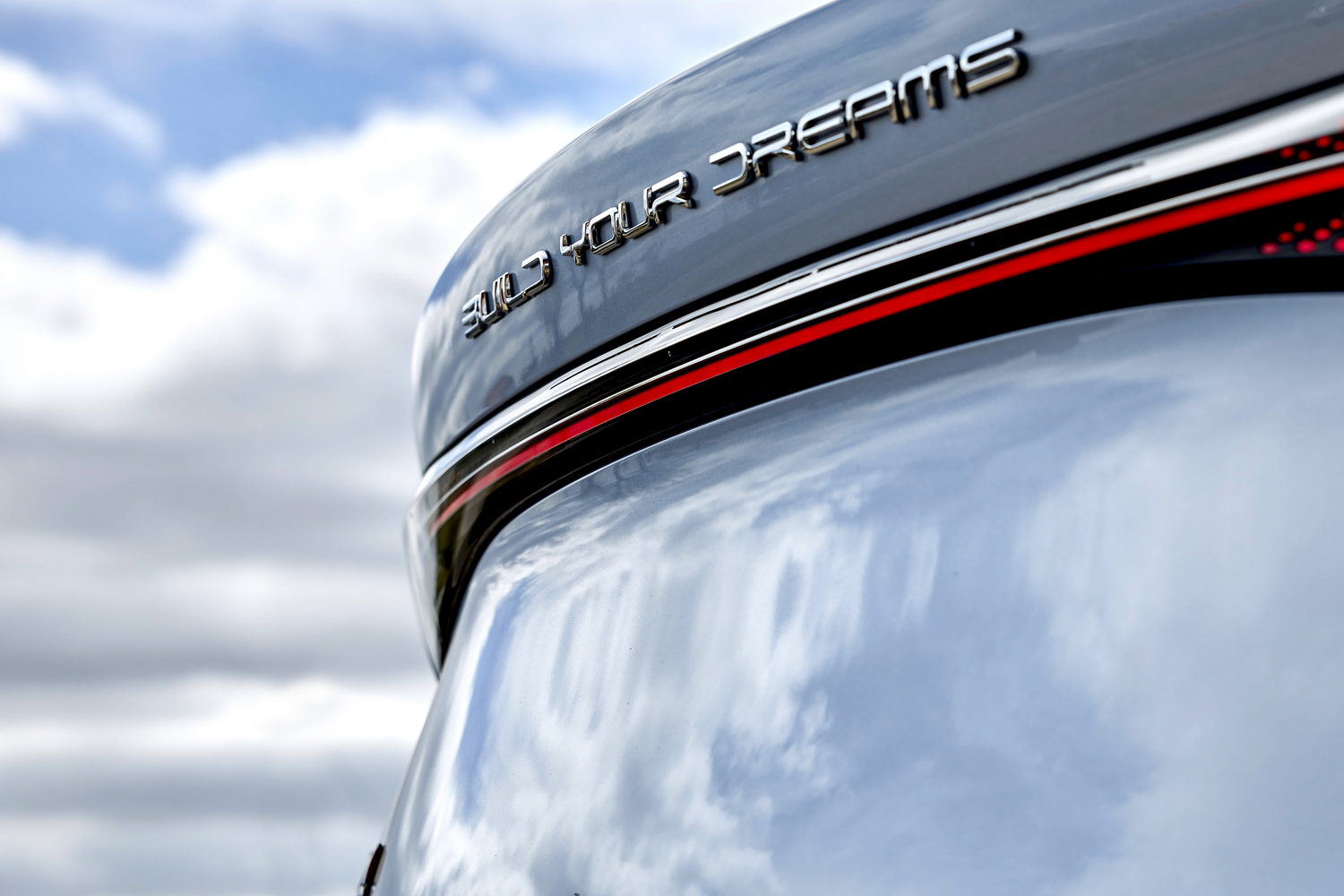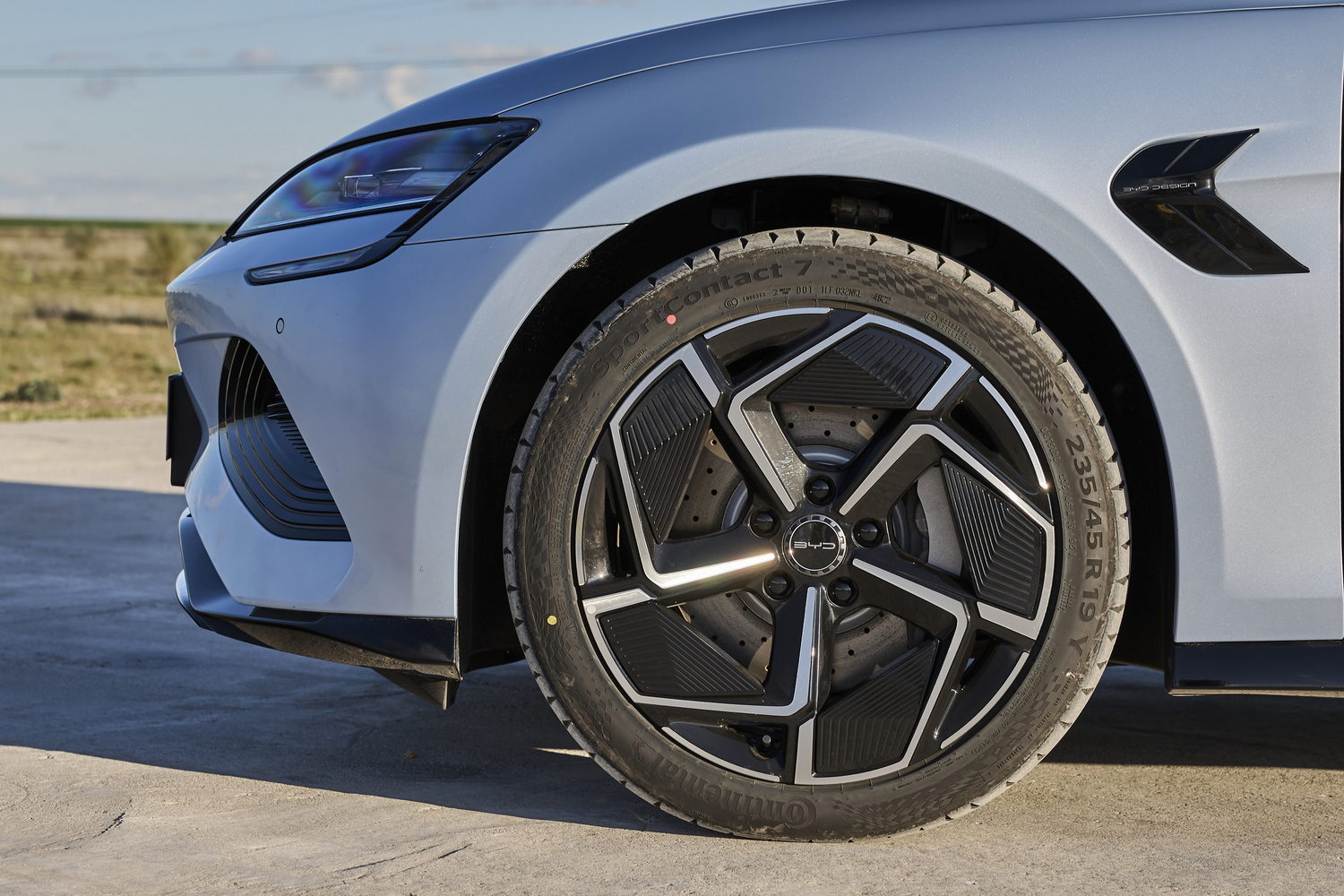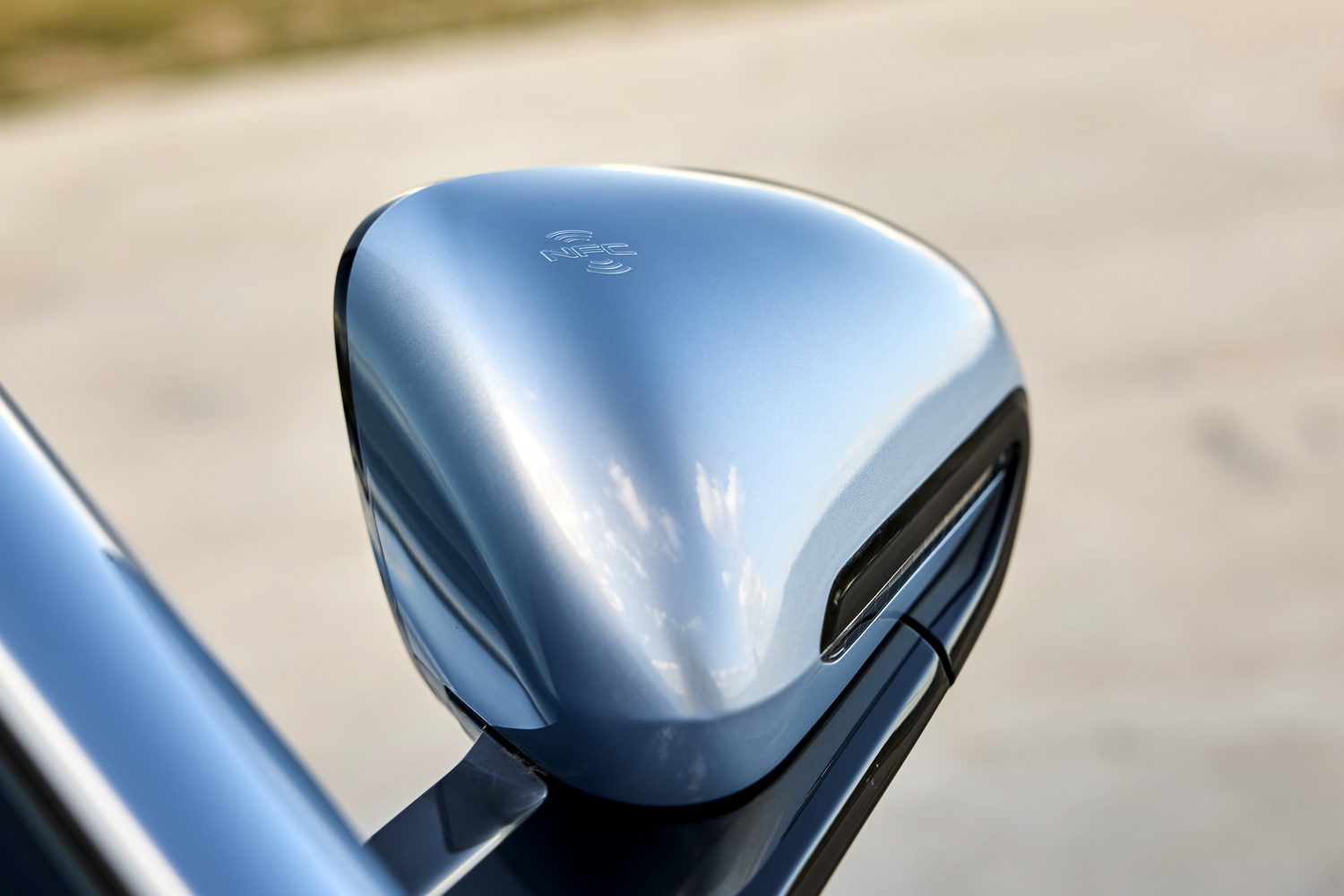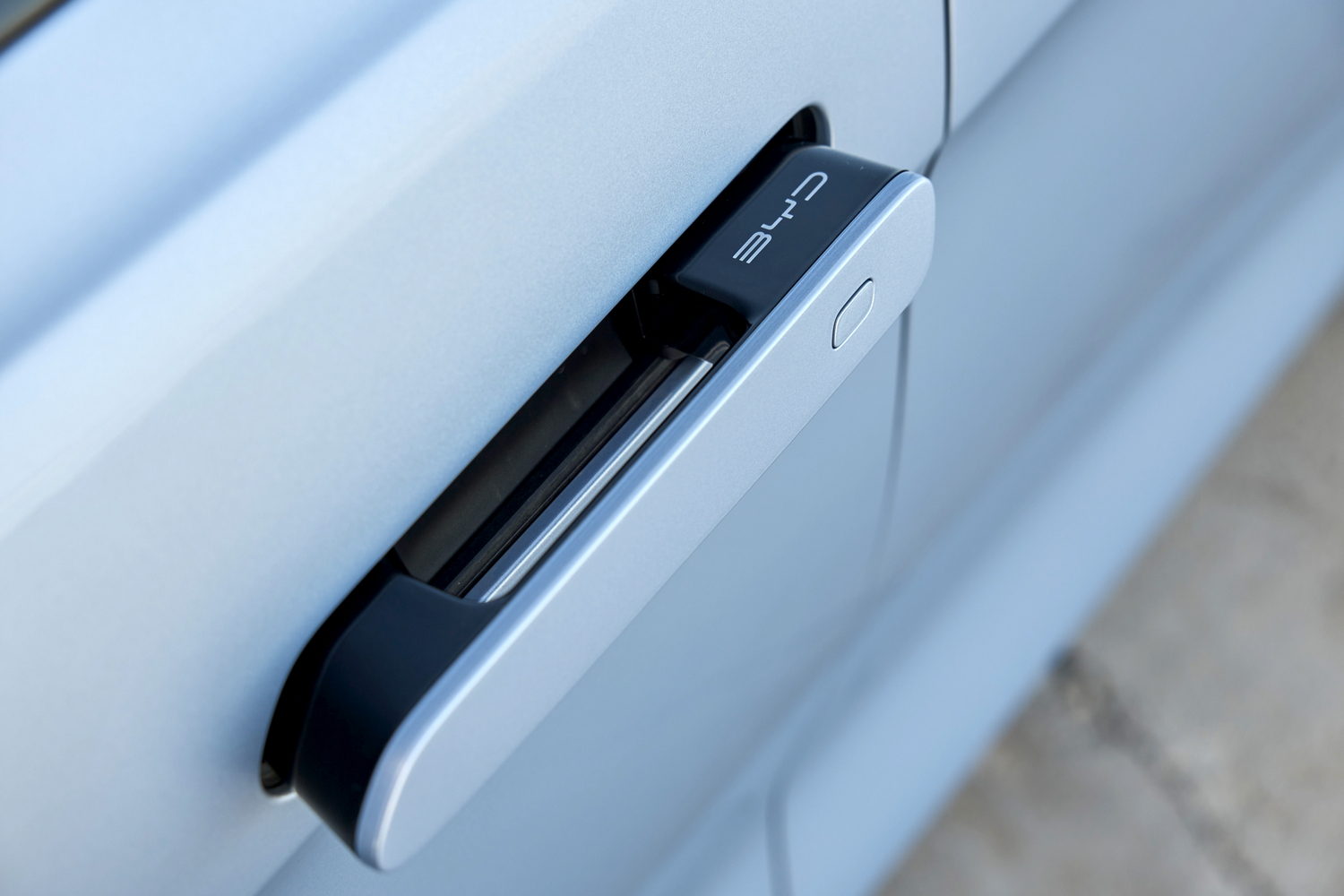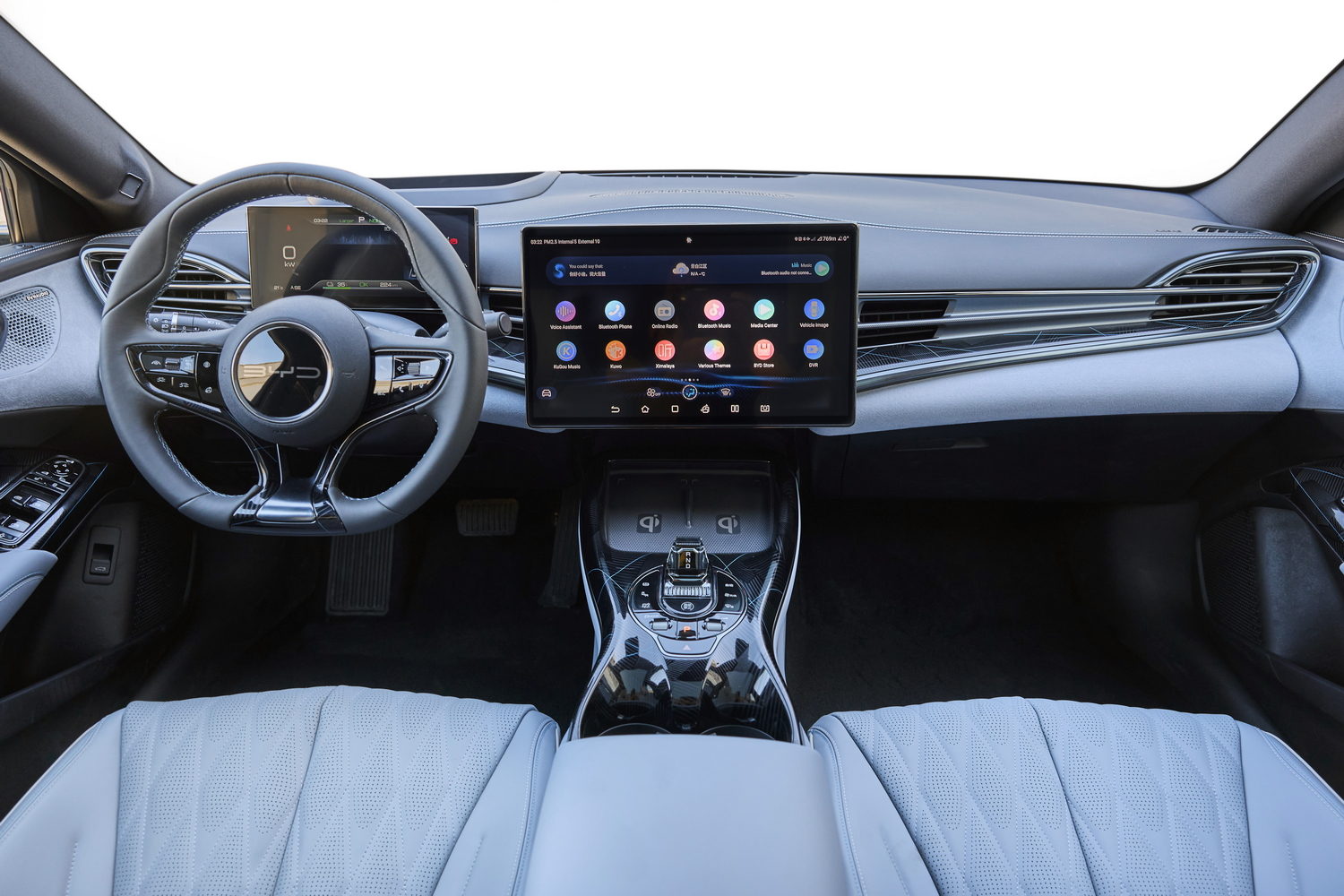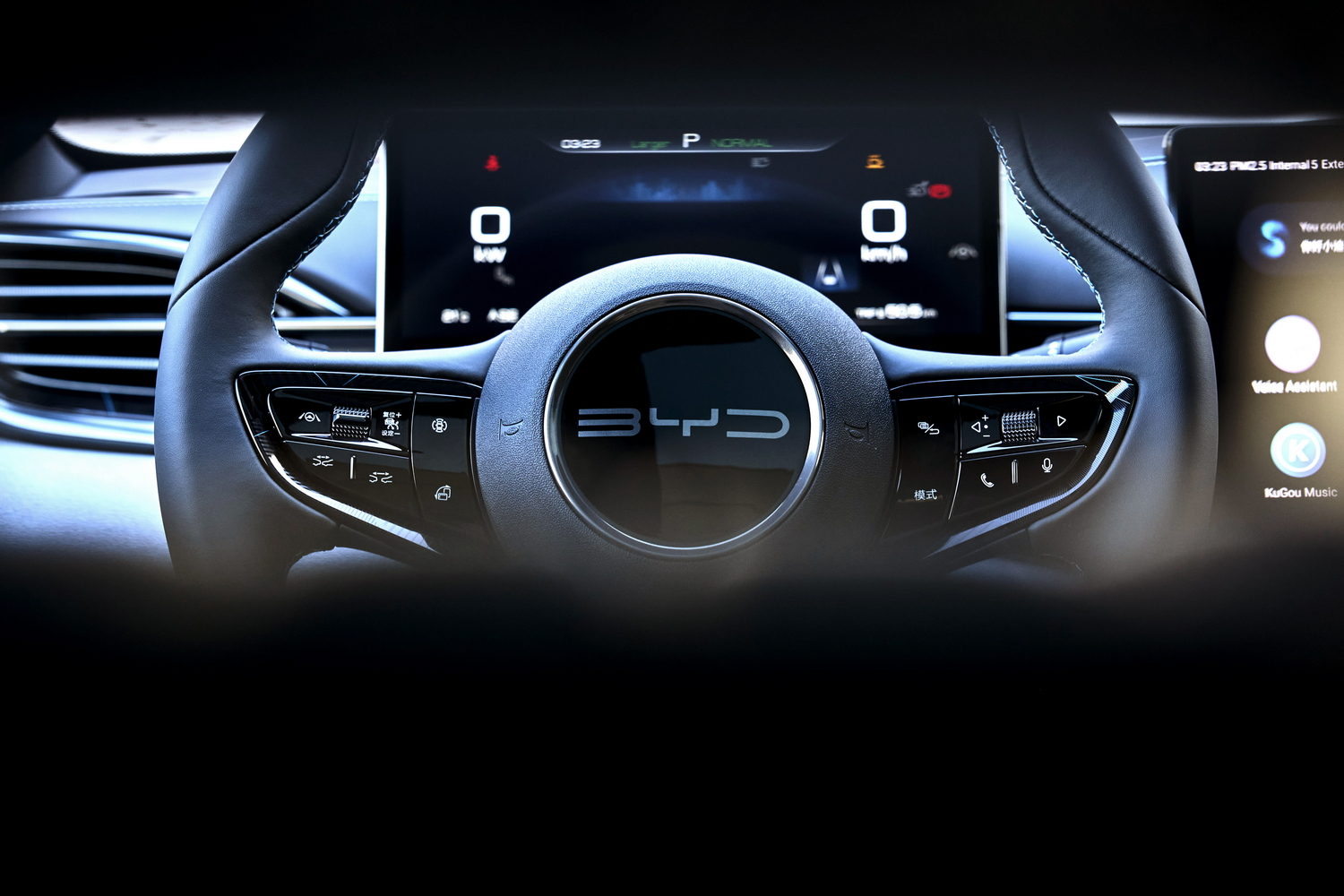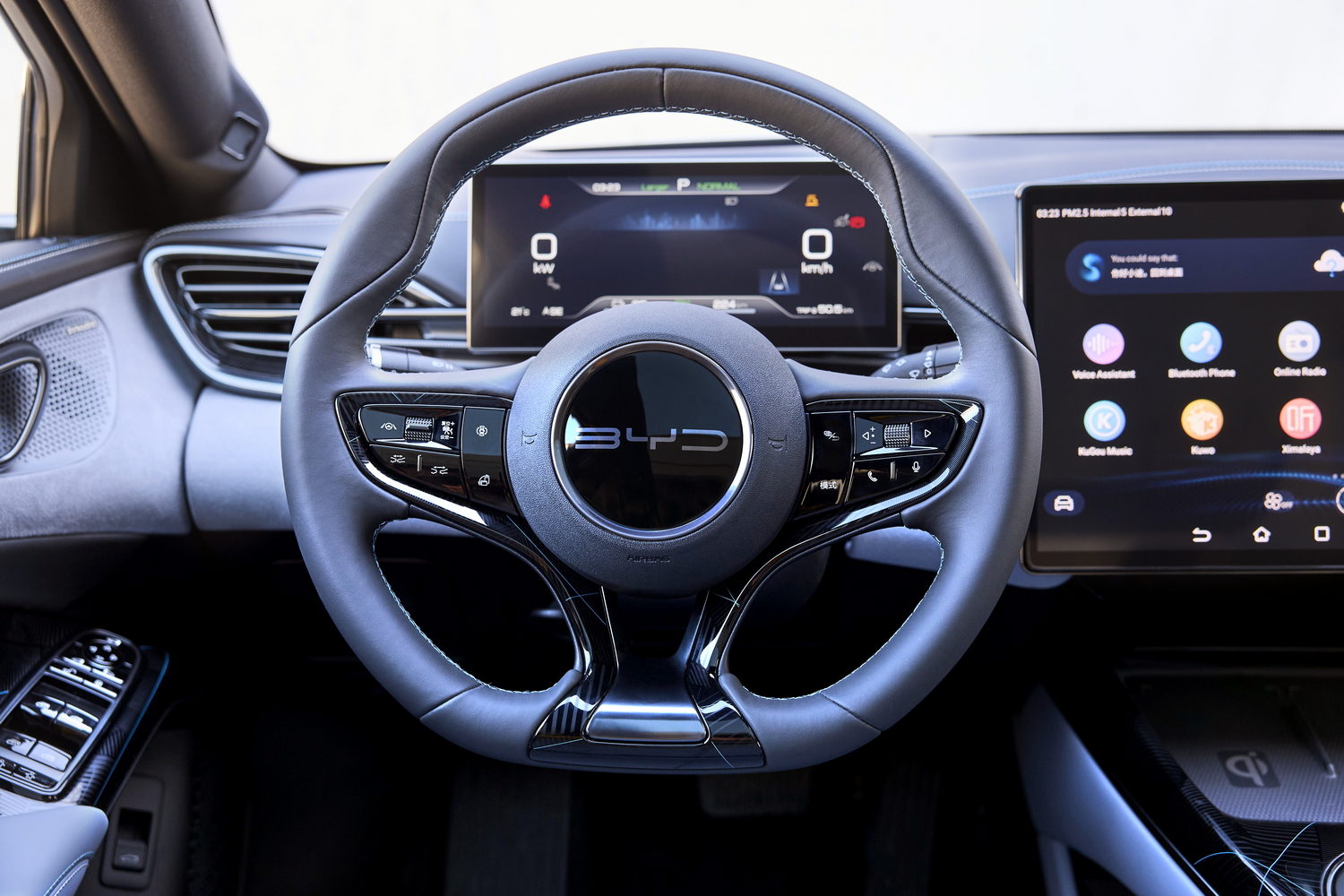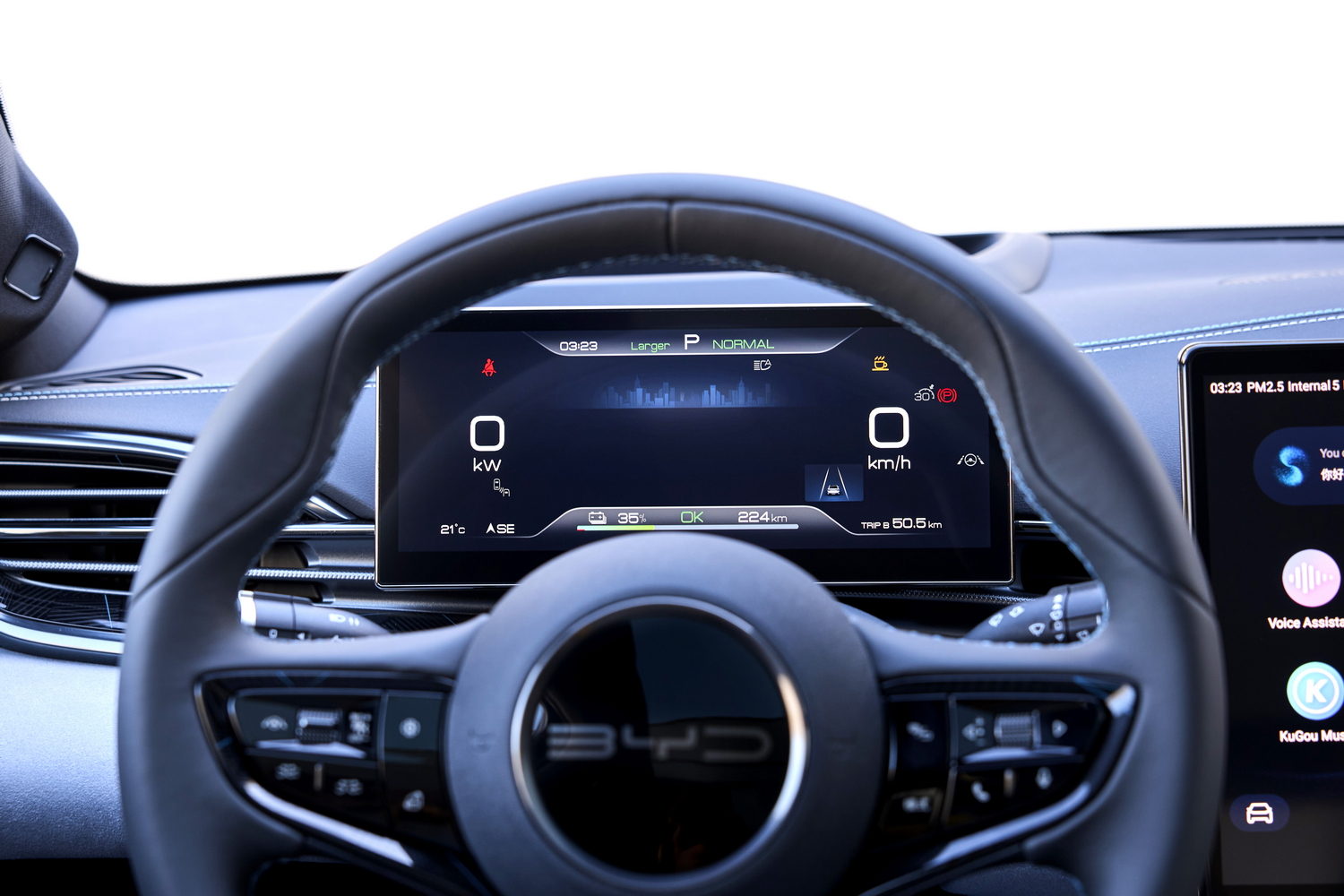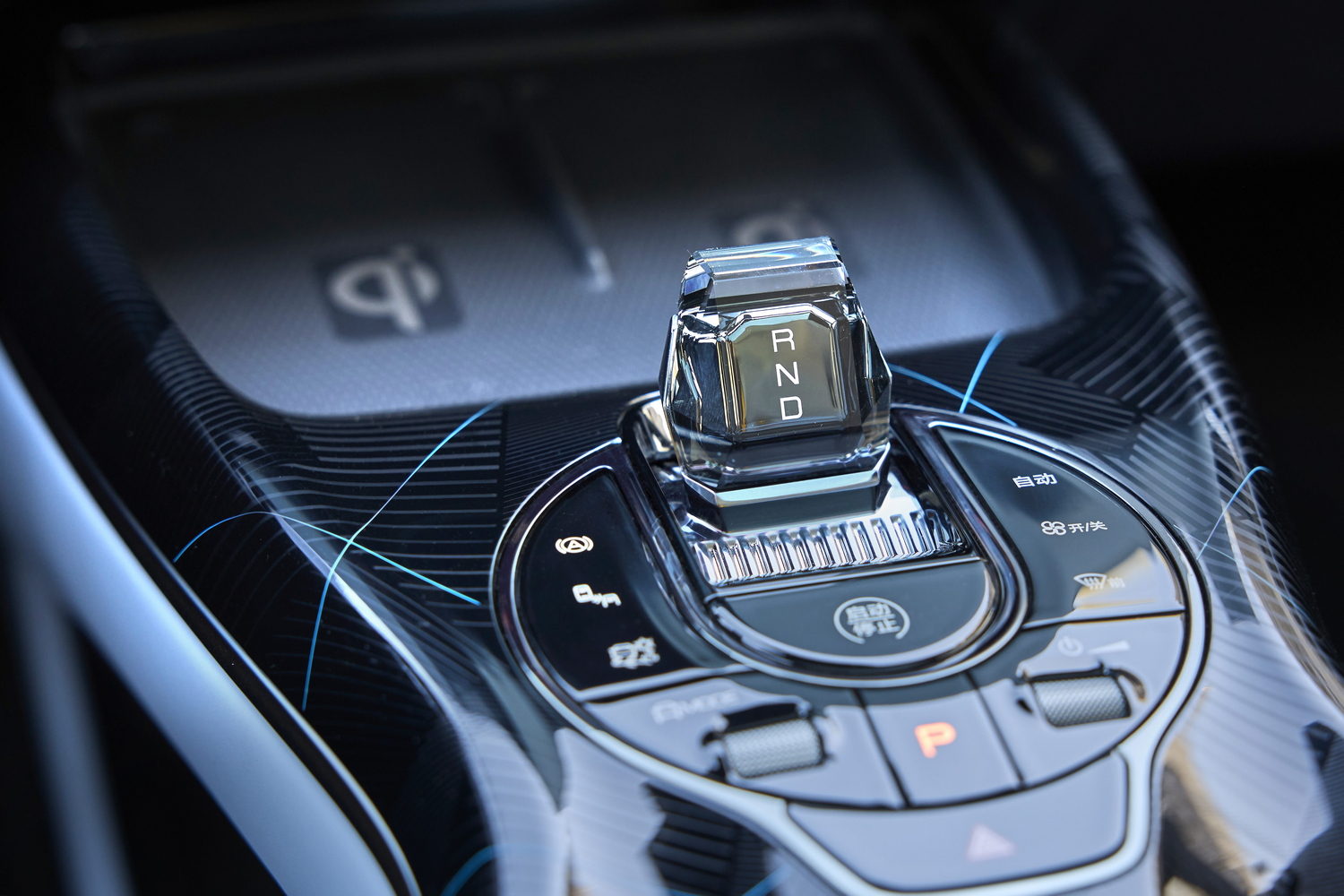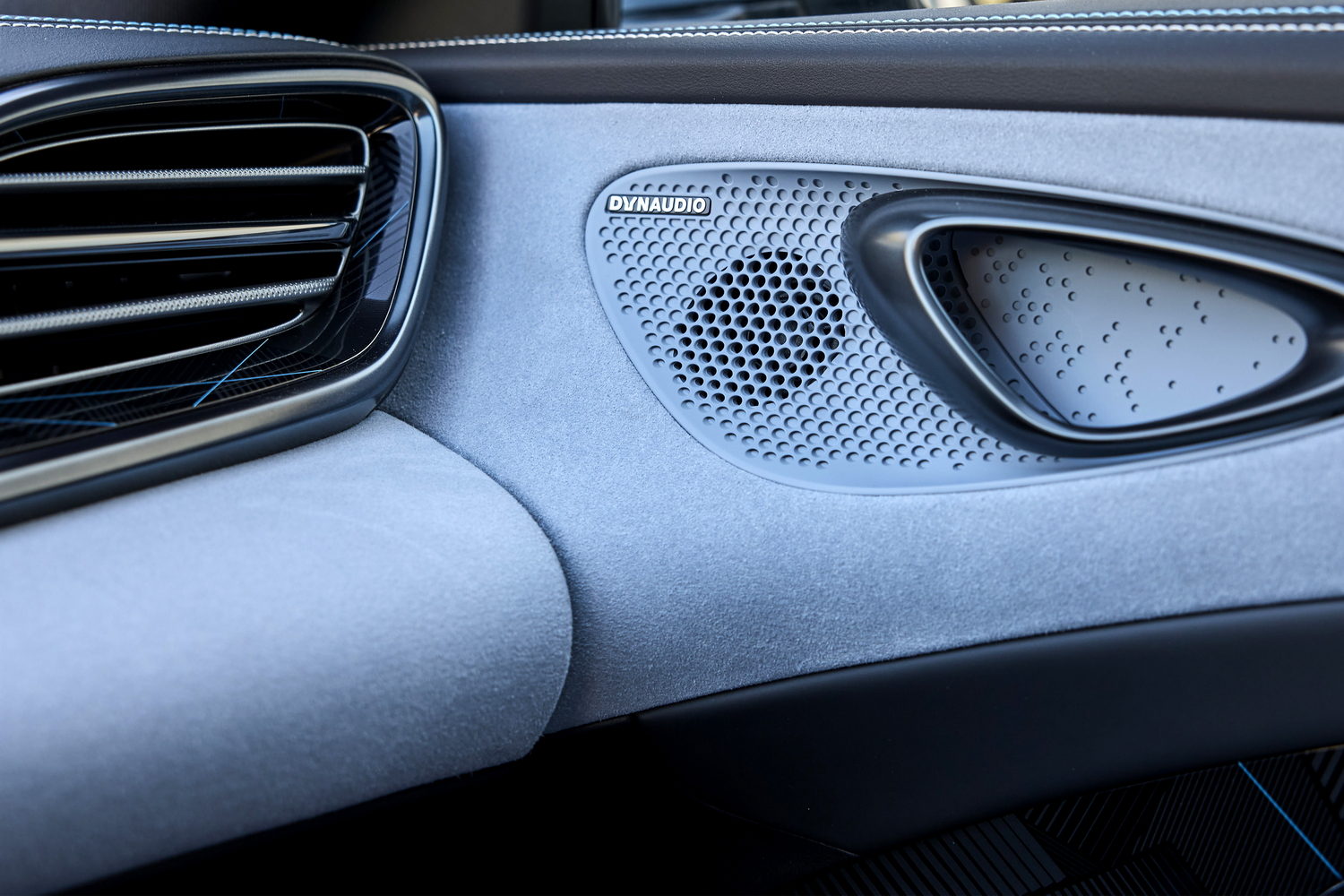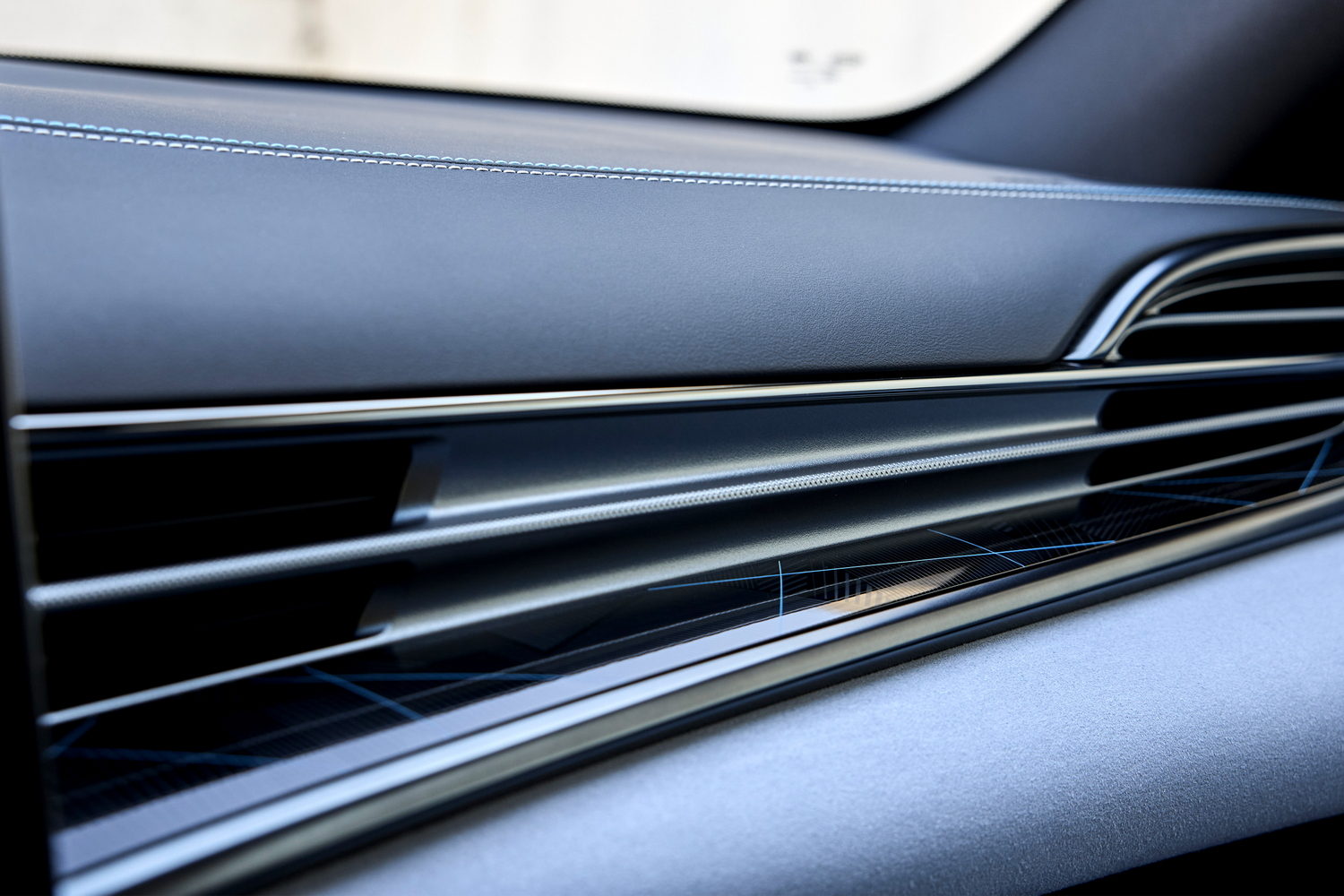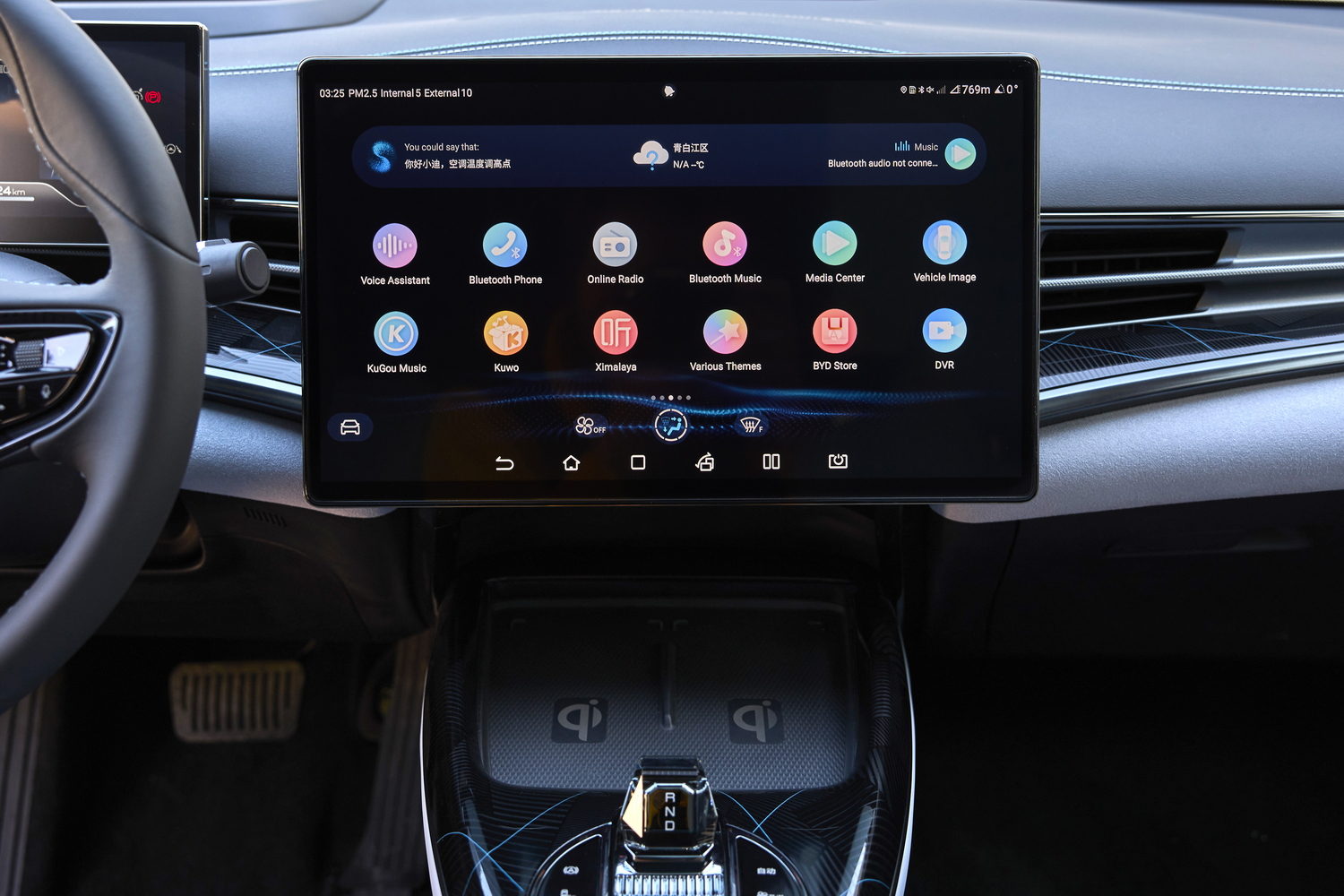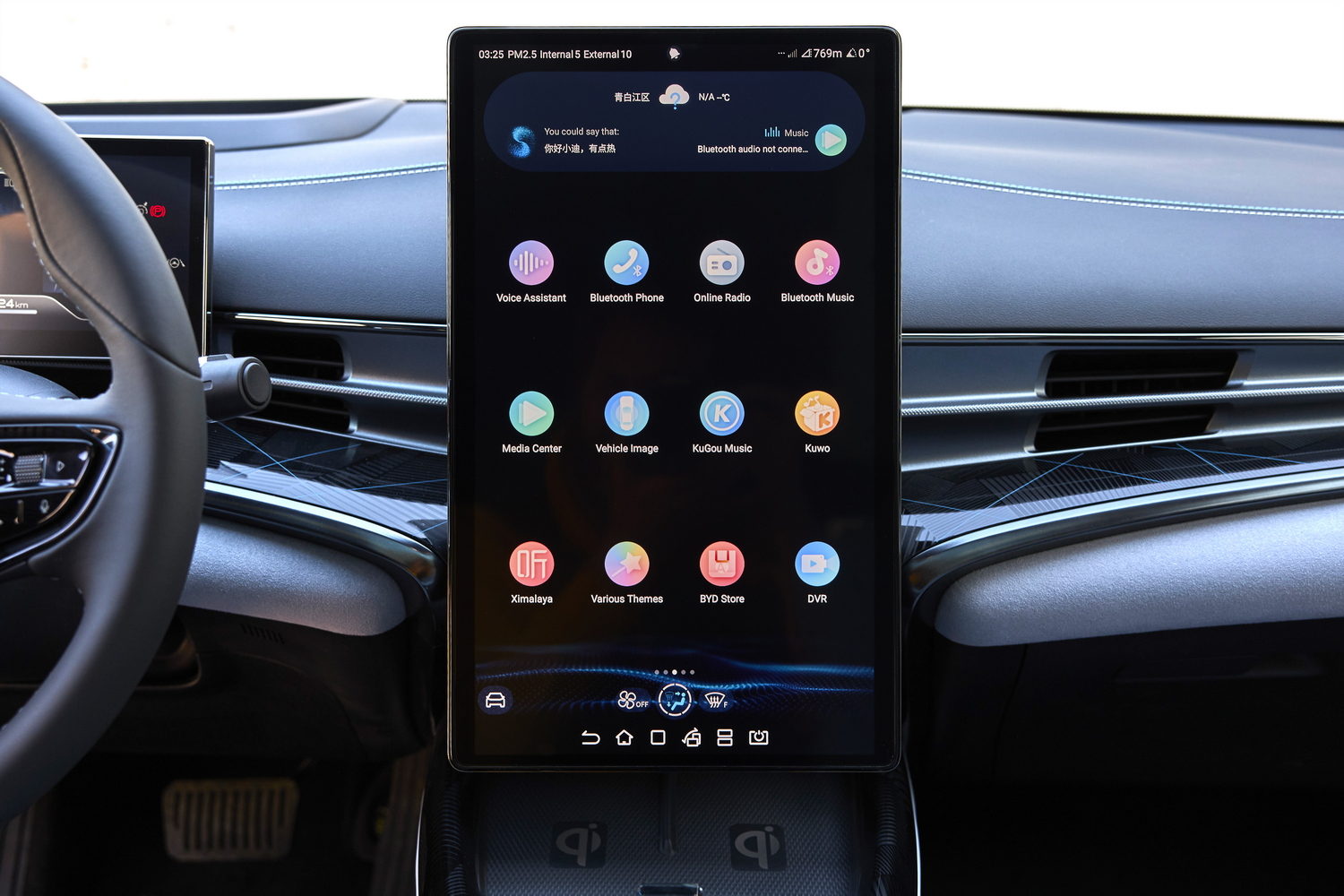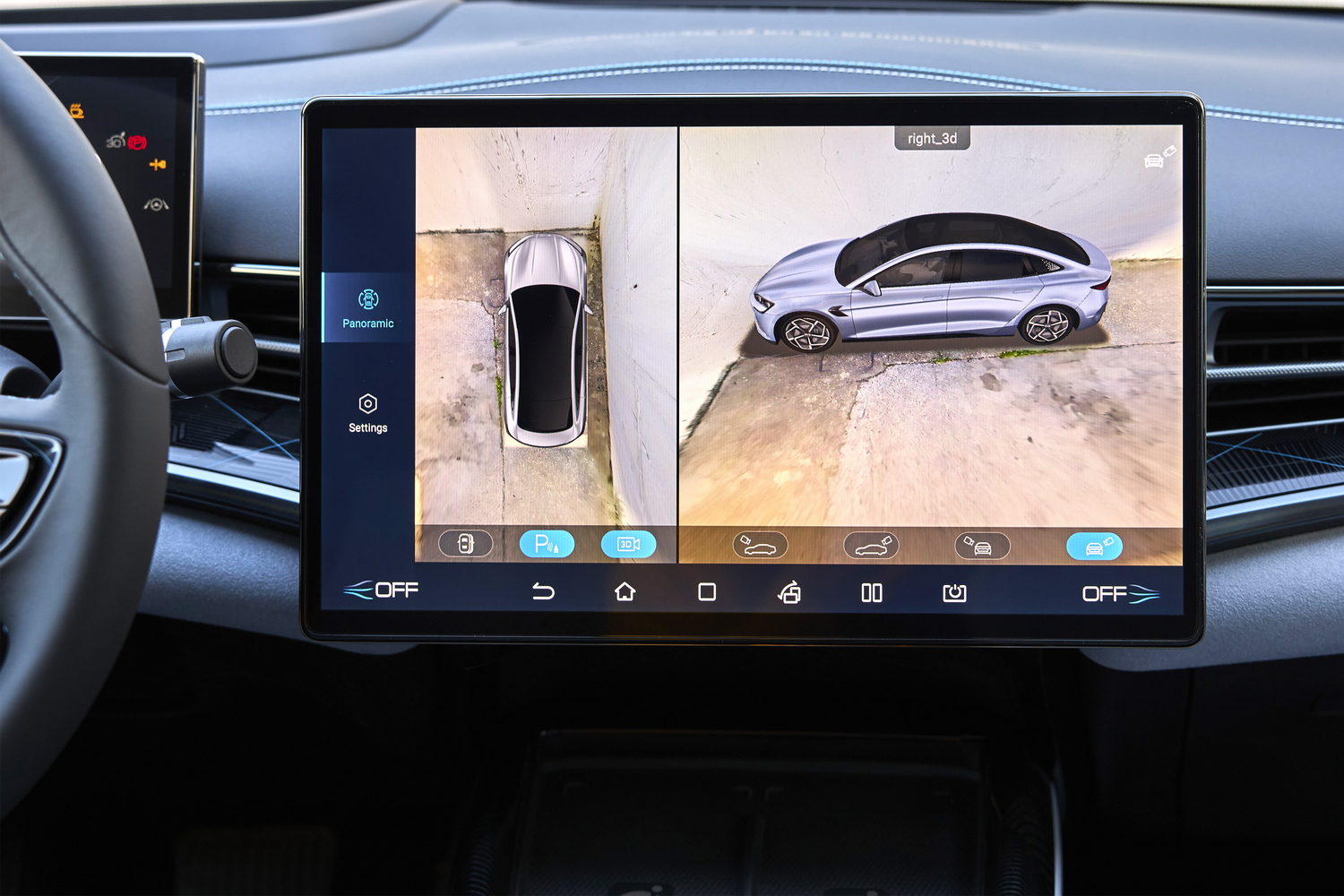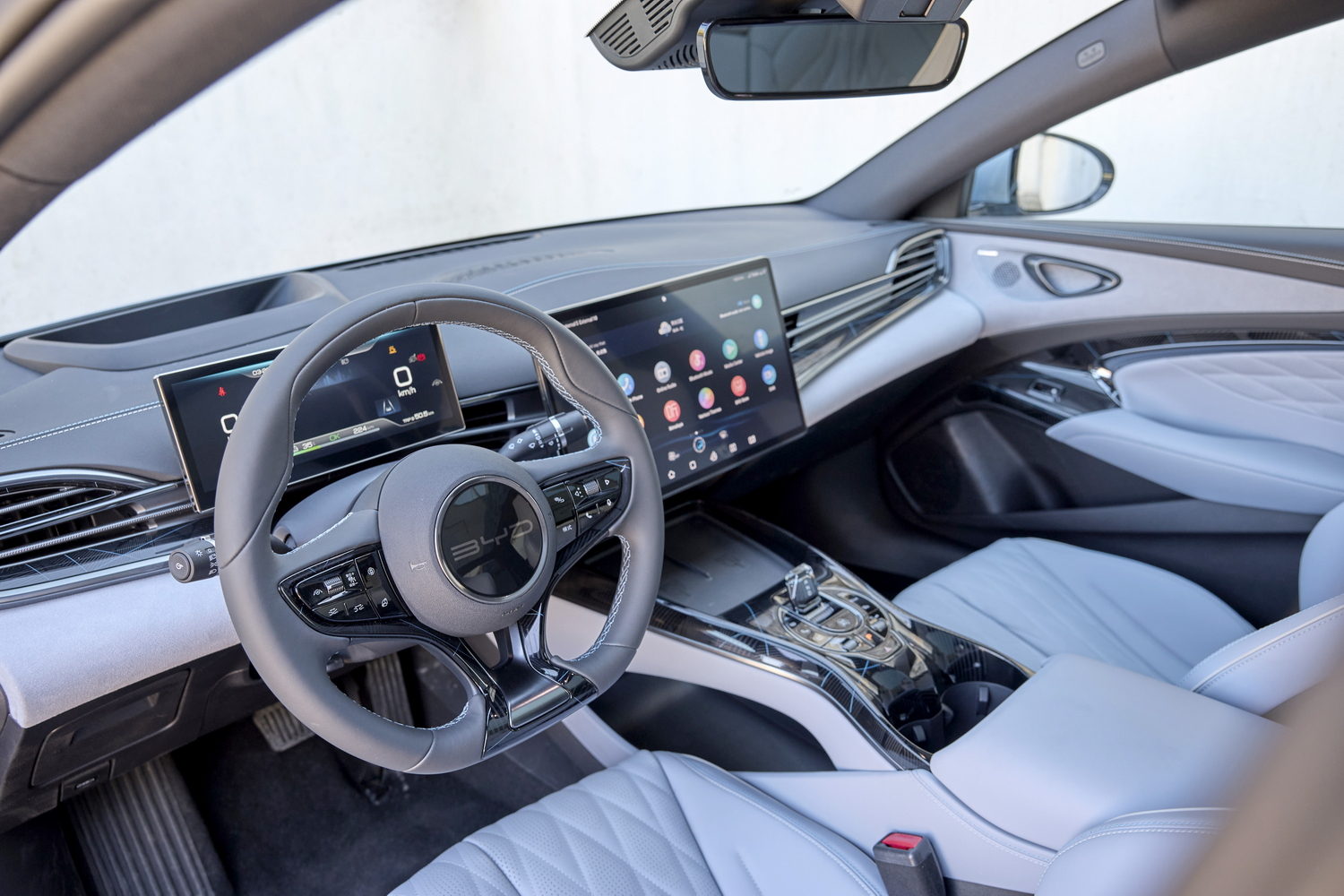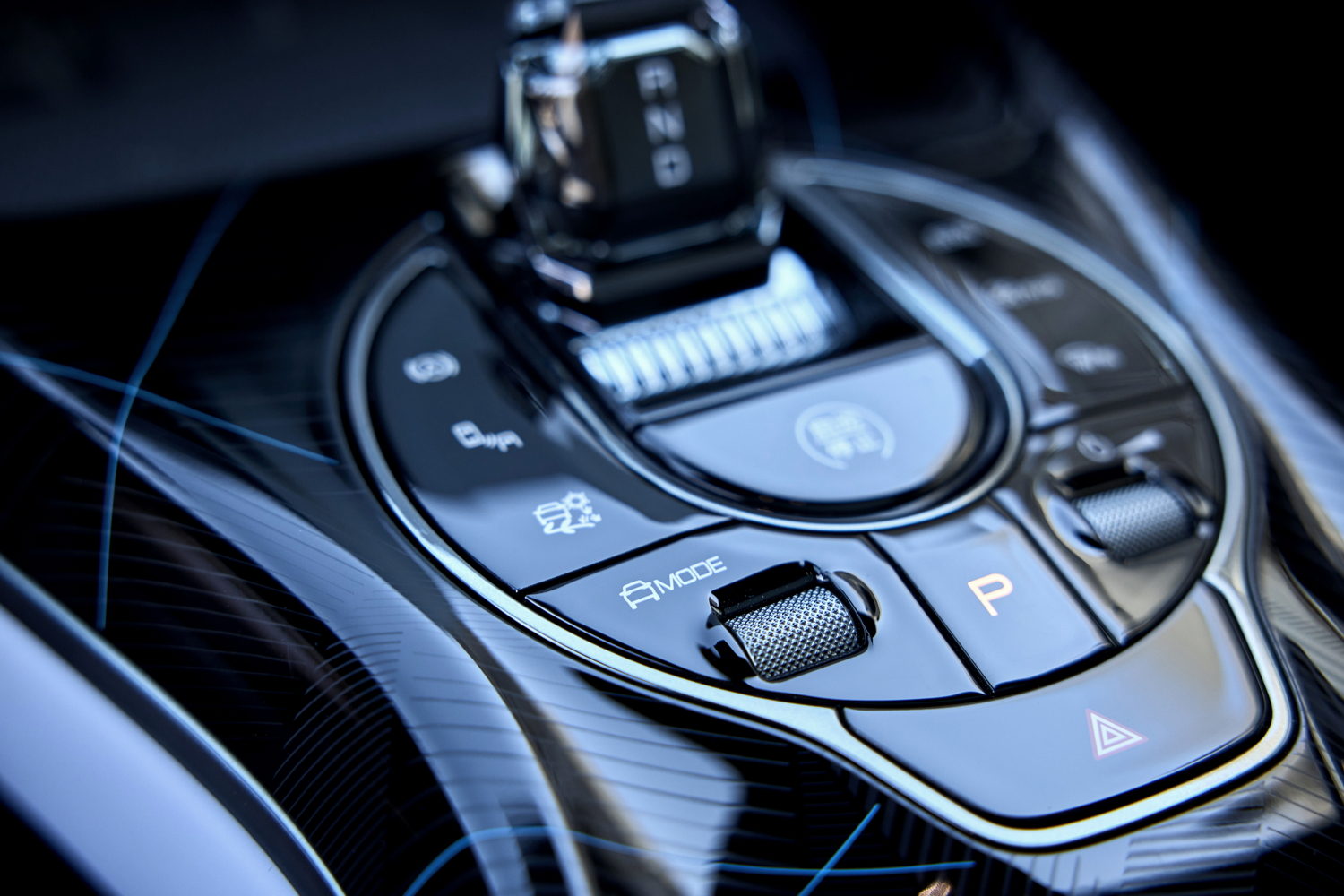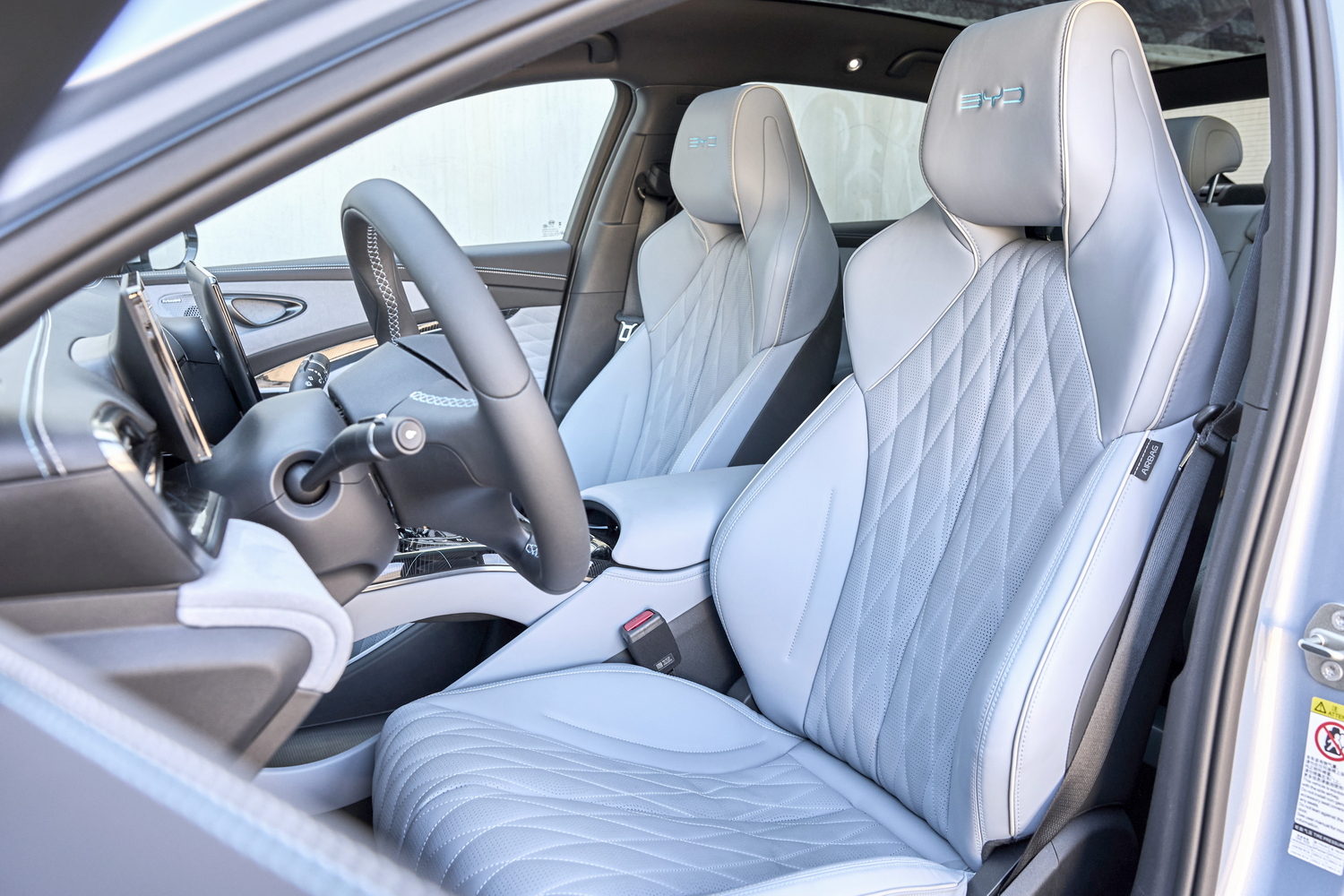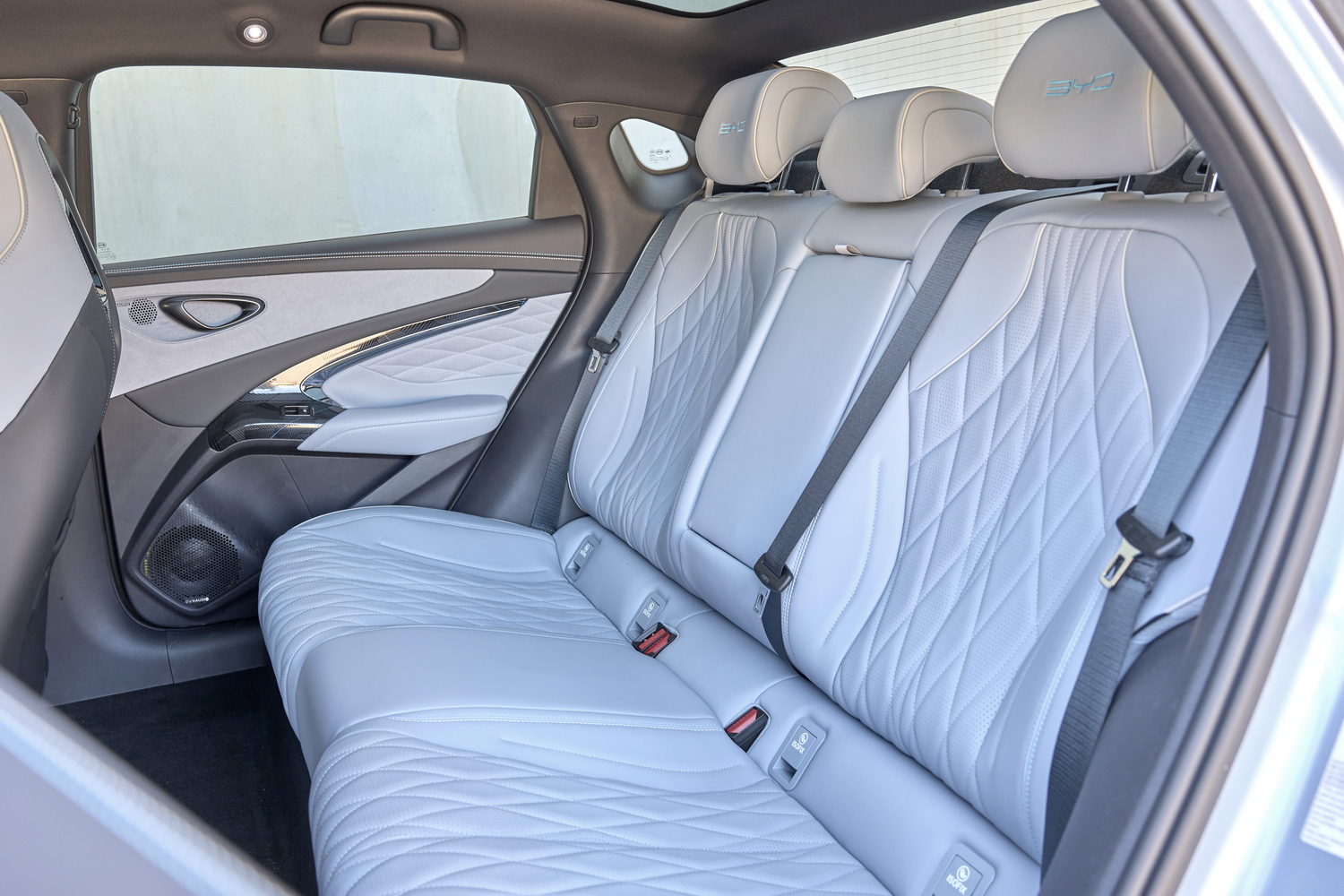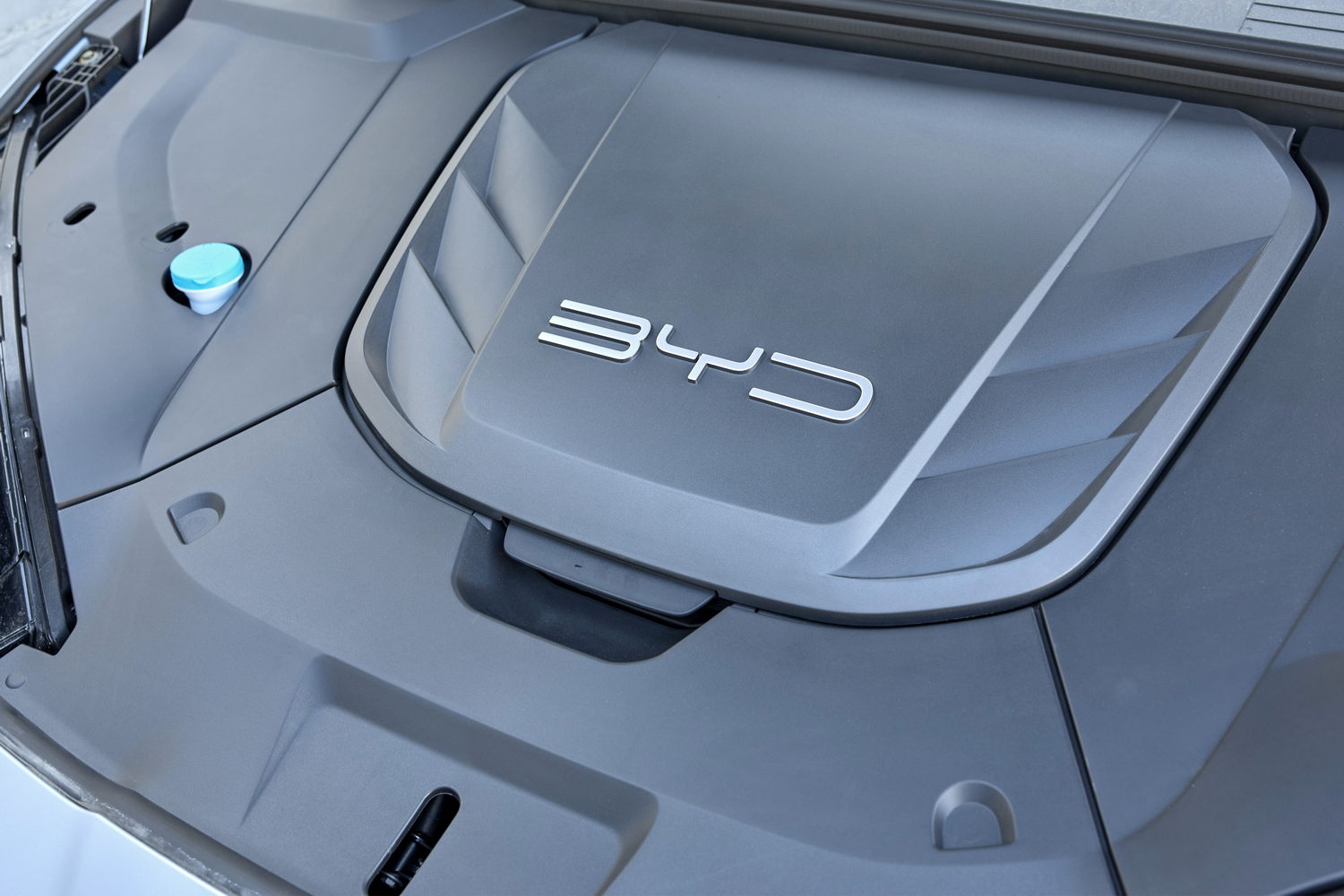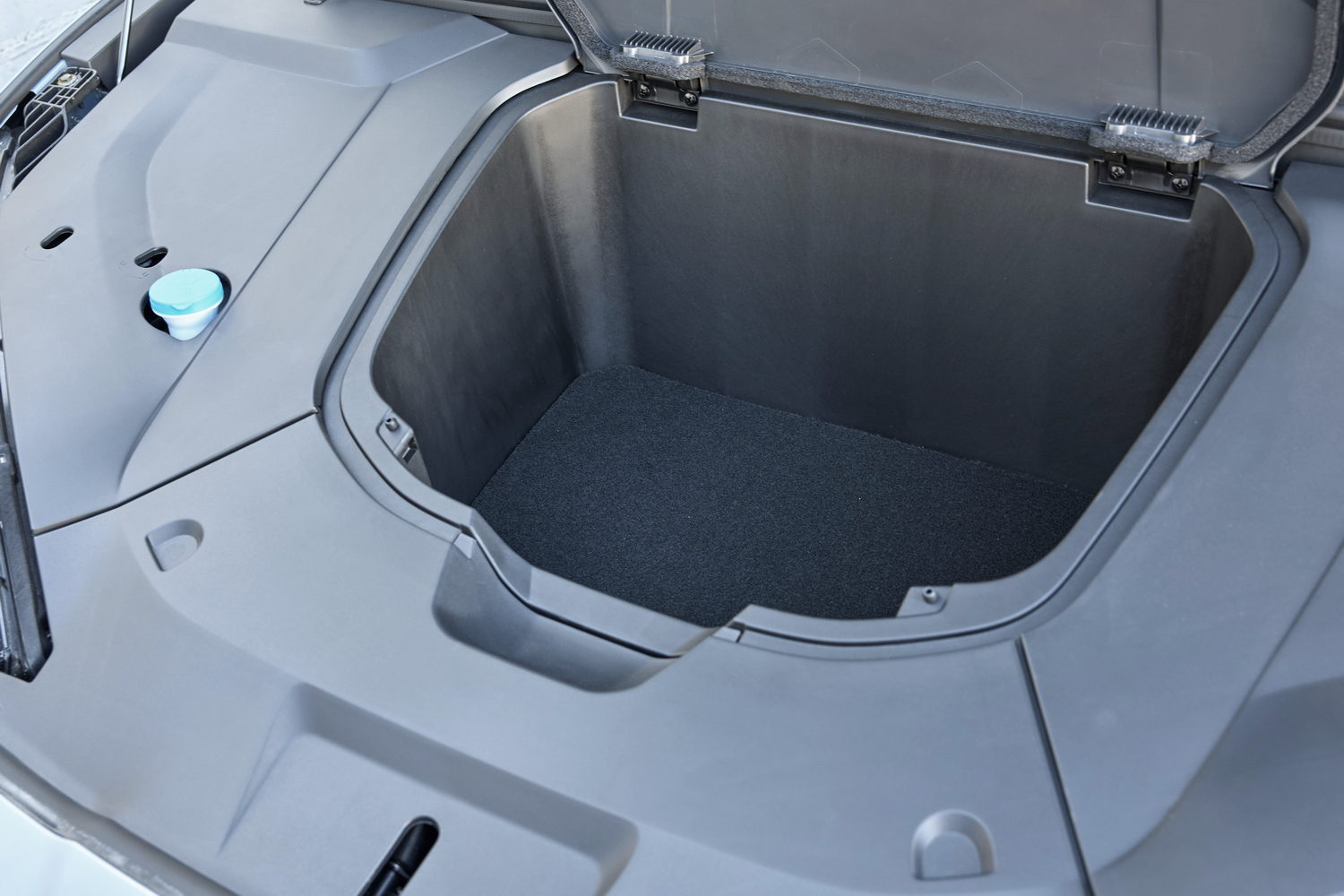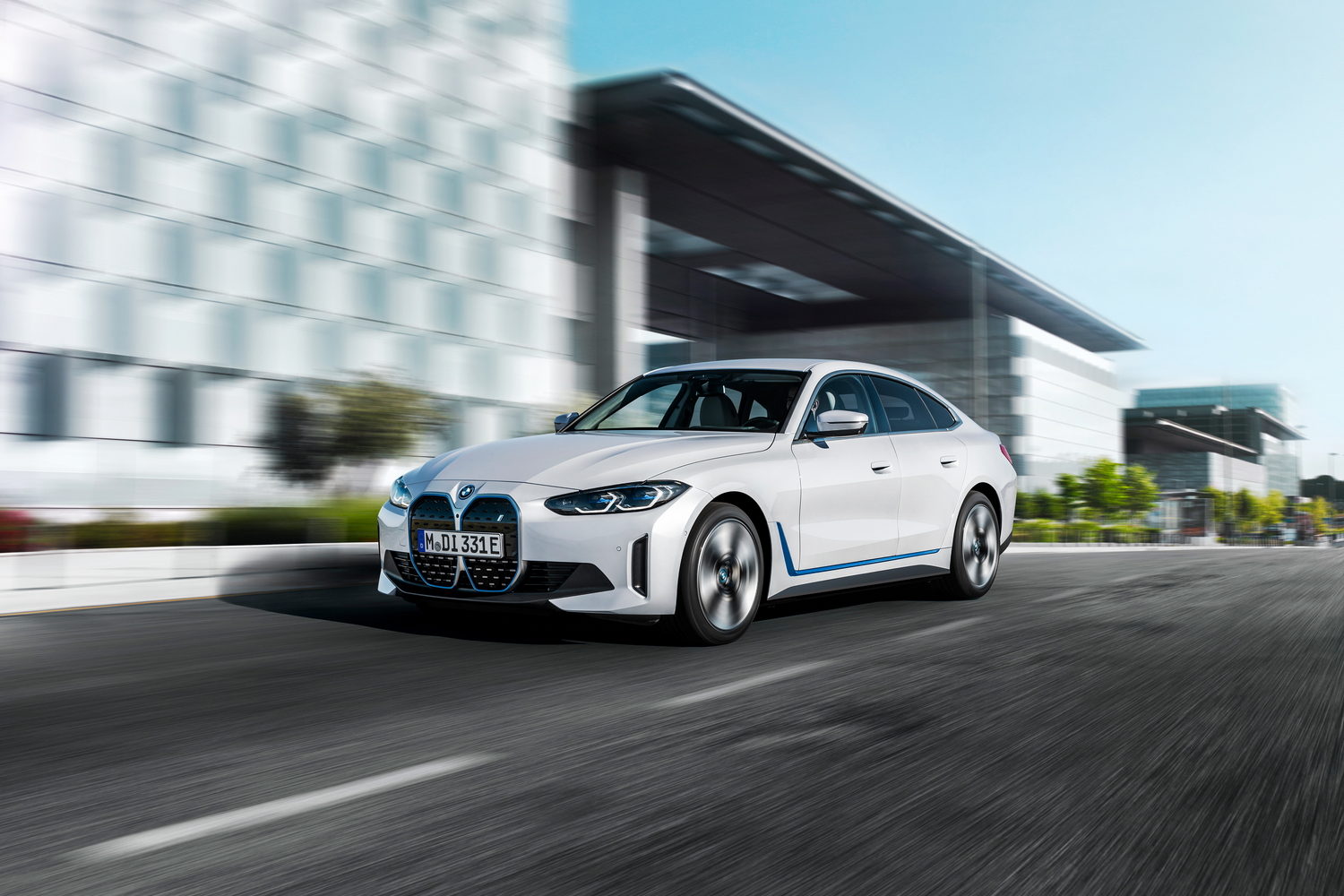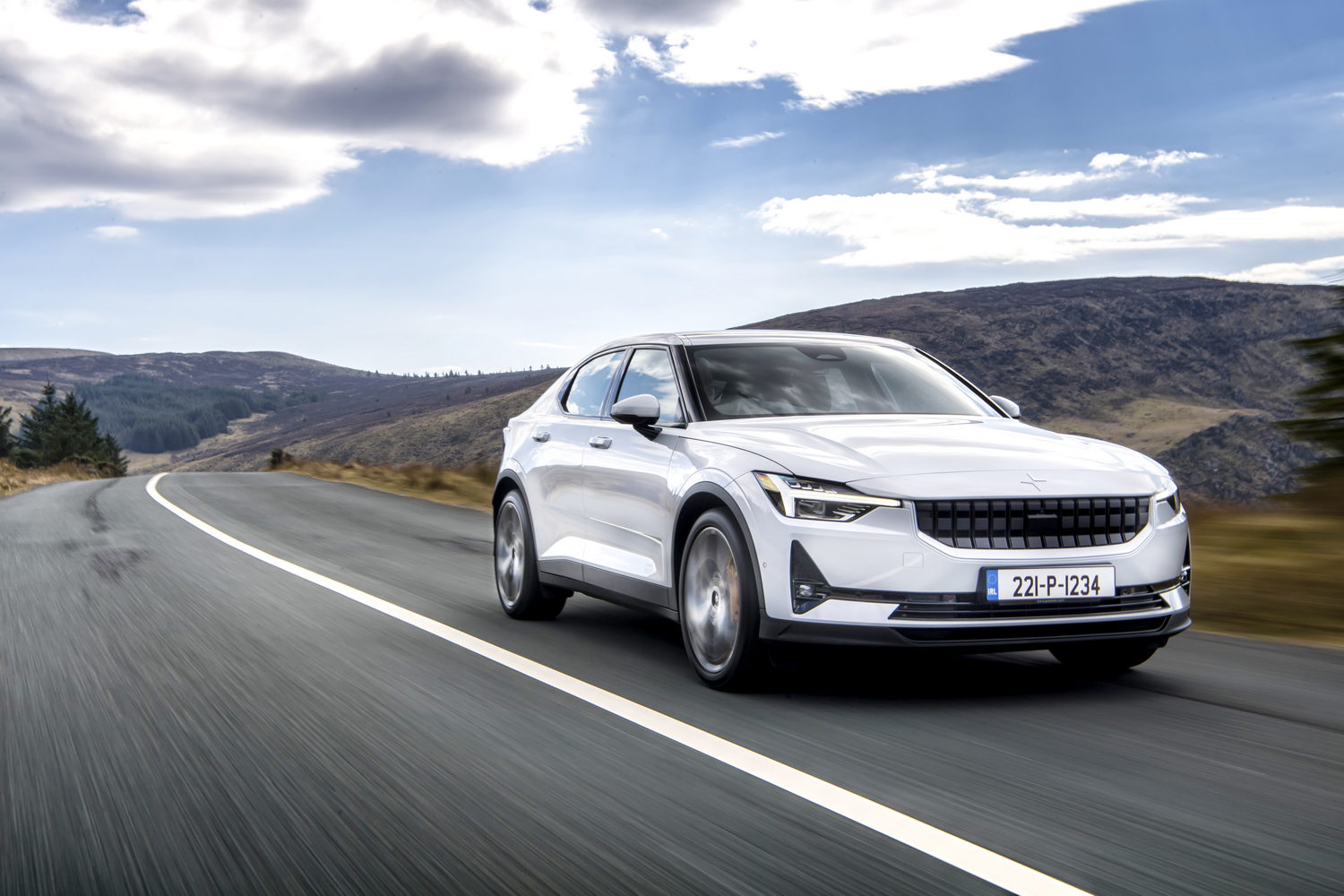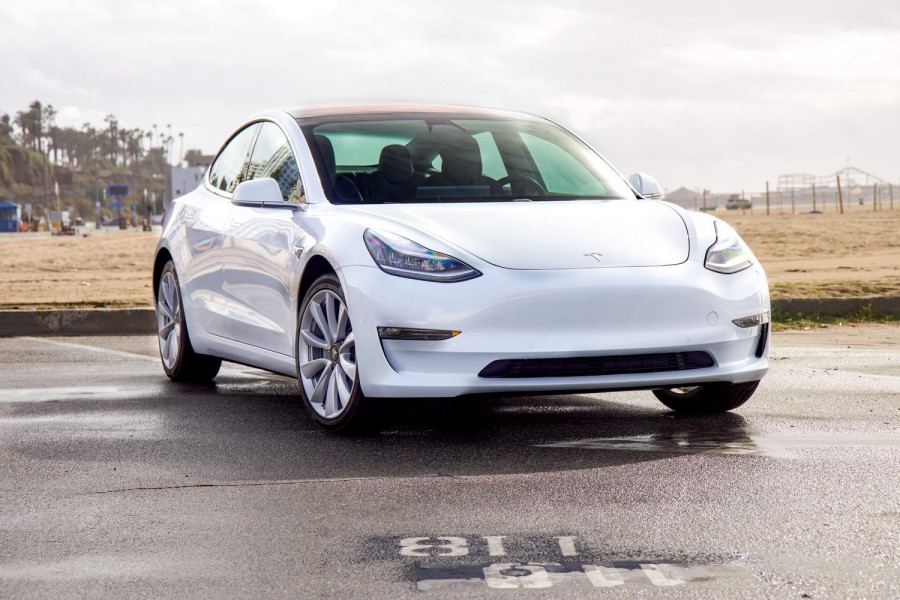Combining impressive power, a classy interior and strong performance, the BYD Seal will be gunning for the Tesla Model 3 and the BMW i4. And it might just have the beating of them...
In the metal
We need to get the name out of the way. Are you really going to buy a car called a 'Seal' and boast about it down the pub? Well, yes you might when it looks this good. There are strong hints of Porsche Taycan, Tesla Model 3 and even Maserati GranTurismo about the BYD Seal, but it still manages to look coherent in its styling, rather than a mish-mash of borrowed pieces from other cars. It's really handsome. The 19-inch alloys look nice too, though we can but hope that the big 'Build Your Dreams' badge, spelled out across the boot, will be a delete option.
Inside, you could make the argument that the cabin looks a little over-styled. There's heavily quilted 'pleather' seats front and rear, synthetic suede and more pleather covering most of the dashboard and doors. It all looks very plush and welcoming (arguably more so than the rather minimalist cabin of the Tesla Model 3), but you do kind of wonder how well it will age.
There are two big displays - a broad, shallow one behind the wheel for the instrument panel, and a large 15.6-inch touchscreen in the middle, which does the BYD trick of rotating at the touch of a button from portrait to landscape layout and back again. The screens have rich, largely expensive-looking graphics and a menu layout that's clearly been inspired by Apple's iOS software that makes it extremely easy to use and find your way around. From some angles, both the screens can look a bit 'tacked-on,' almost like a huge LED TV sitting on a sideboard, but that's less obvious from behind the wheel.
Speaking of the wheel, it's a chunky three-spoke affair, clad in pleather and with proper physical buttons to work the various functions of the instrument panel. It looks and feels good. The front seats are equally impressive - soft but supportive - although they do sit slightly higher up than is ideal for a low-slung sports saloon. There's a collective of buttons to control the drive functions on the centre console (all labelled with Chinese characters in our China-spec test car - Euro spec cars come later this year) and a neat Porsche-style toggle switch for selecting drive. There's lots of storage space, including a big under-armrest storage box that, in our car, held the wireless microphone for the car's built-in karaoke system (Best. Option. Ever.).
In the back, there's plenty of legroom and headroom is good too, in spite of the huge panoramic glass roof (the fact that it lacks a retracting sunblind probably helps). There's no space under the front seats for your feet though, which means anyone with taller legs and bigger feet is going to find that their knees sit higher than they'd like, which is not great for longer journeys.
The boot isn't massive, but at 402 litres it's fine, and it's augmented by a useful 53-litre frunk under the nose. The back seats fold down and there's a little bit of under-floor storage too so it's certainly not impractical.
Driving it
Our brief time with the car was limited to a run through a slalom course on a closed racetrack, and some 0-100km/h sprints in the more powerful all-wheel-drive version of the Seal.
Speaking of... In China, you'll find the all-wheel-drive, 530hp Seal wears a '3.8S' badge on its boot. This isn't the engine capacity (obviously, as there's no engine) but the 0-100km/h time. Not only were we able to replicate that time (well, according to the instrument panel's 0-100km/h timer anyway) but we were able to replicate it again. And again. And again. There was a pair of 530hp Seals just doing this pretty much all day for the amusement of various journalists, and showing no apparent signs of weakness. That speaks volumes for the strength of the battery.
Speaking of which, BYD's 'Blade' battery technology - all designed and built in-house (BYD actually began life as a battery-making company) - is pretty clever. It dispenses with the normal modular design of battery for an almost-continuous design, and it's actually a structural part of the car, a fact that BYD claims improves safety, especially in a side impact, and which helps to give the Seal a whopping 40,500Nm/degree structural stiffness rating - equivalent to some very high-end supercars.
In this rear-wheel-drive version, the battery has a useable capacity of 82.5kWh, which gives an official maximum range of 570km. And we suspect that might actually be a slight underestimate - certainly our on-track test cars were showing higher ranges than that, and with the Seal's impressively slippery 0.215 drag coefficient we reckon that it might do better than 570km when the full WLTP test has been done.
While doing repeated drag-strip runs in the 530hp version is certainly fun (literally giggle-inducing in the case of this reviewer...) the 313hp rear-drive version doesn't feel as if it's lacking for any power. Through our limited slalom test, the Seal felt taut, responsive and precise but possibly has steering that's slightly too light for true driver involvement. We'll only be able to give a more precise rating once we've driven Euro-spec cars on a real road, but certainly there seems to be a high dynamic base from which to be starting.
On a more practical front, the Seal is the only BYD model confirmed for Ireland, so far, that can charge at above 100kW on a DC charger. In fact it will charge at up to 150kW, and will take in an 11kW charge on slower AC power. At the full 150kW DC, it will get from 30 to 80 per cent charge in 26 minutes.
To help in the winter, there's a standard heat pump heating and cooling system, which BYD claims can work in temperatures as low as -30 degrees Celsius, and has high as 60 degrees.
What you get for your money
BYD Ireland has confirmed that pricing for the Seal will start at €40,567 when the forthcoming Comfort model with the smaller battery (61kWh) arrives in 2024. The higher-spec Design and Excellence cars go on sale before the end of 2023, both using the 82kWh battery pack.
Priced from €44,036, the Design version uses a rear-wheel-drive setup producing 312hp. This features 19-inch alloy wheels, double-glazed front windows, a panoramic glass roof, leather upholstery with electrically adjustable front sports seats, automatic dual-zone air conditioning and a heat pump. It also gets a leather multifunction steering wheel, a 10.25-inch digital instrument display, a 15.6-inch rotatable touchscreen and a 360-degree parking camera system.
Upgrading to the Excellence version means a starting price of €49,836, which gets you the more powerful dual-motor setup with all-wheel drive. Power output increases to 530hp with only a modest hit on the overall range figure. Almost all of the same equipment is standard, with the addition of a colour head-up display and semi-active suspension with variable frequency dampers.
Summary
We need to drive the BYD Seal on actual roads and in its full European specification, but there seems to be a lot of good stuff to be going on with here. The Seal looks great, seemingly drives well and has impressive range. True, the BYD badge is as yet unknown to most, but there is immense corporate muscle behind it and there's no doubting the appeal of the Seal's styling and cabin. Will Irish buyers take to it in the same way we've done with the Tesla Model 3? We shall soon see.

